














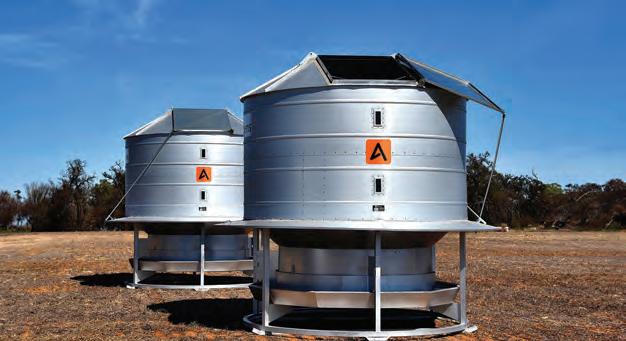




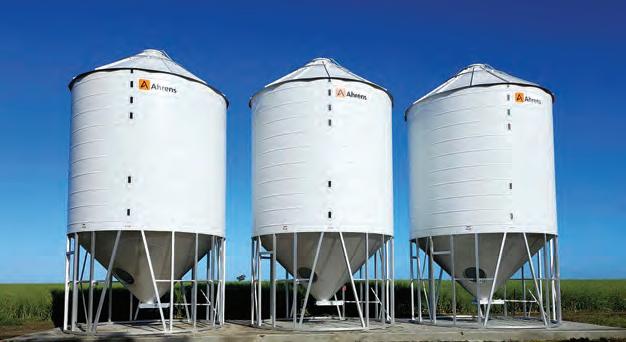


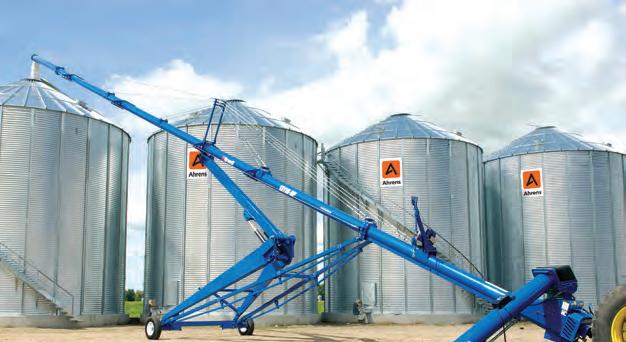


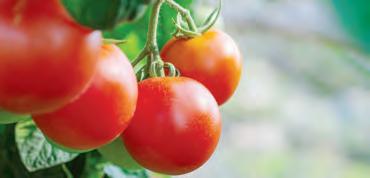
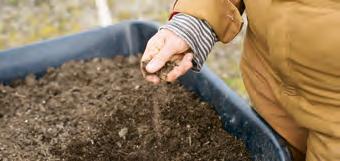
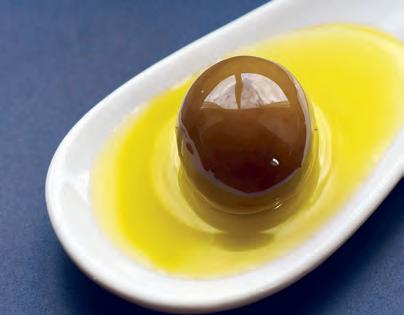
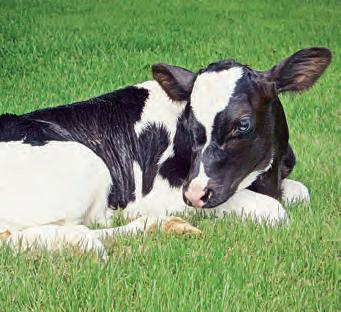




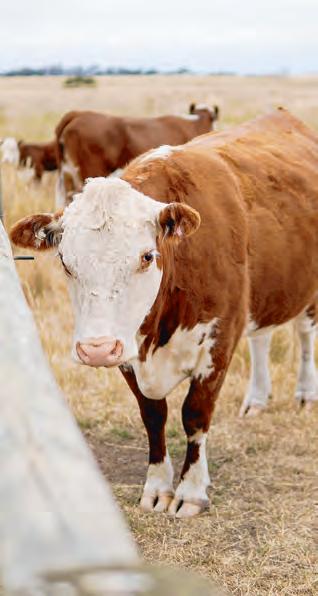




















































































A landmark independent review has urged the Grains Research and Development Corporation to lift research spending to accelerate ambitious science and build long-term capacity for Australian grain growers.
GRDC chair, South Australian grain grower Sharon Starick said the review pointed to a clear investment target.
“The review identified $60 million a year as the sweet spot – a level that balances affordability, system capacity and return for growers,” Mrs Starick said.
“It creates space for more strategic research, the kind of ambitious, higher-risk work needed to reach new frontiers and deliver the next wave of breakthroughs for Australian growers.”
The report, prepared for GRDC by consultancy ACIL Allen, recommended pairing extra funding with stronger support for people and partnerships.
“The review also recommended an increased focus on investing in talent to build research capacity to ensure Australia can keep delivering the innovation growers need to stay competitive into the next decade,” Mrs Starick said.
“Our current portfolio is underpinned by our 2023-28 RD&E plan which was informed by extensive consultation and engagement with growers, so we know it is fit for purpose.”
The analysis highlighted a gap in earlystage discovery science in GRDC’s mix.
“ACIL Allen found – like much research and development in Australia – GRDC is
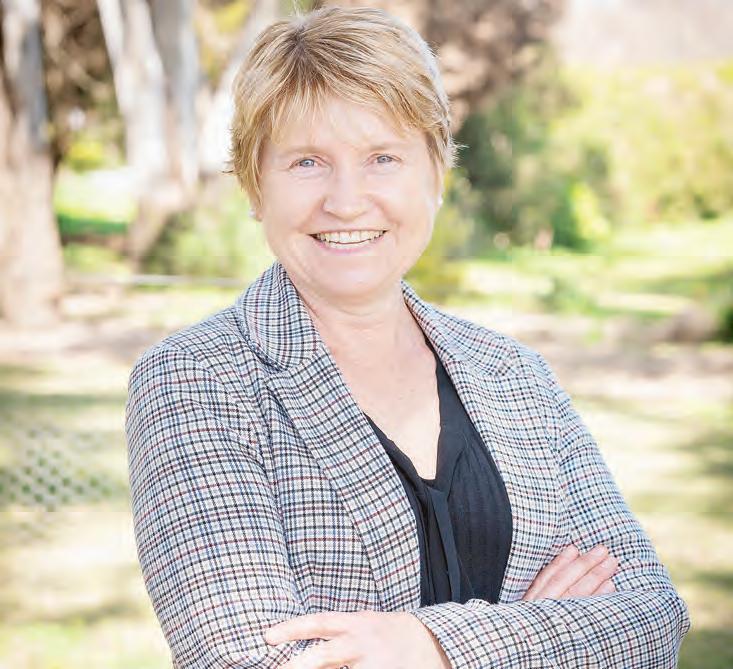
underinvested in strategic, early-stage science with just eight per cent of our investments in this space,” she said.
“So, this increase will effectively allow
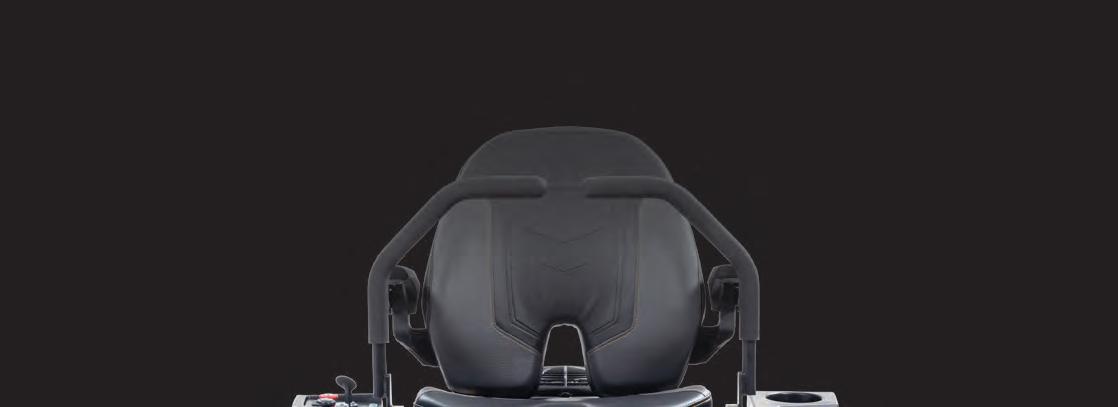

us to lift investment in this key space, in addition to maintaining our current RD&E aligned investments.”
Mrs Starick said the shift would
require new funding models and career pathways.
“We need to give researchers the time, support and certainty to take on big, complex problems over seven to 10 years – not just short project cycles,” she said.
“That means more flexible investment, longer term partnerships and clearer career pathways, so research can happen when and where it’s needed with the right people in place to deliver it.”
The review also noted the strong returns GRDC investments deliver and argued targeted growth could boost impact.
“We know that GRDC’s RD&E investments currently deliver between $6 and $9 return for every dollar invested,” Mrs Starick said.
“The ACIL Allen review has identified additional investment could deliver even greater impact for industry if we focus on select major issues facing our sector.”
If adopted, the recommendation would lift GRDC’s total annual RD&E investment from a forecast of about $275 million to roughly $335 million by 2028–29, a phased rise aimed at expanding strategic research and capacity building.
GRDC has begun consulting grower groups, research providers and industry bodies to shape priorities.
“This is a once-in-a-generation opportunity to reinvest in ways that are progressive, prudent and grower-led,” Mrs Starick said.
A summary, fact sheet and short video from the report authors are available at grdc.com.au for stakeholder review.

























BY LUCA CETTA
FOR James “Rags” Boylan it has been a process two decades in the making.
What started as an idea to bring a new product to the Australian market is coming to fruition, with recognition on the national stage.
It may be a far cry from Smoky Bay to the Sydney Opera House, but in the small western Eyre Peninsula township, the razorfish - a marine delicacy which West Coast communities have known about for years - is emerging as a culinary delight.
Mr Boylan, who owns and runs Boylan Oysters at Smoky Bay, said it has been a long time in the making.
“About 20 years ago I first had the inkling that it would be a great industry if it could get off the ground, as everyone knows how nice razorfish are,” he said.
“Whenever I went to take it forward there were barriers of ‘you can’t do this or you can’t do that’ and that slowed the process.
“Approval and boxes needed to be ticked on the application process with many different environment and government departments to make sure there was a future in this venture.
“We started this in 2005 and started with deepwater razorfish, trying to grow them in deep water in cages, but to do it properly you had to get them in the sand.
“It was a long journey, but I am very grateful to now have a lease and licence for razorfish - the only one in the country.”
Mr Boylan said the process of commercialising razorfish was only starting to be realised.
His company, Australian Razorfish, has partnered with Tasmanian Oyster Company, which operates a hatchery out of Kellidie Bay in the Coffin Bay area.
Parent razorfish stock has been taken from Smoky Bay to Kellidie Bay, where they are spawned before returning to the water at Smoky to grow.
Australian Razorfish, which operates alongside, but separately, to Boylan Oysters, has its own barges, shed and staff.
Mr Boylan said there were two pieces of the puzzle required to “make this dream come true”.
The second was securing the hatchery, but before that was the marketing of the item.
“For the Tasmanian hatchery to come on board, we couldn’t do so until we had a value, so the marketing came first, because if it was only 10 cents each they would not have
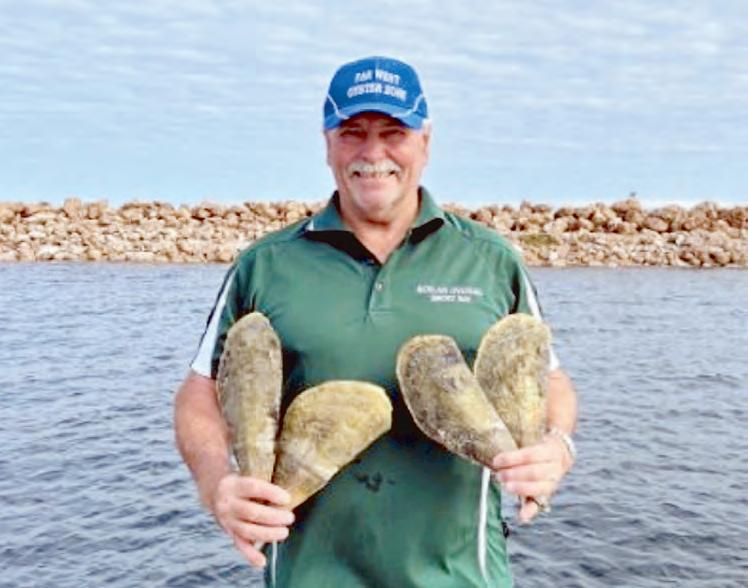

“
It makes me get out of bed in the morning knowing that you are pioneering something and doing something nobody has ever done before”
touched it,” Rags said.
“Once we got the market value we could move forward and the hatchery took us on as a partner.”
Exactly what it was worth Mr Boylan would not say - “it is quite lucrative” was his only comment - but the product is mainly being sold to restaurants in Sydney.
“The top end of restaurants in Australia are the ones that are using the product,” he said.
Helping that demand was recent national recognition.
After winning a state-based award, Australian Razorfish was entered into the 2025 delicious. Harvey Norman Produce Awards, where it won the One to Watch award at a ceremony hosted at the Sydney Opera House in August.
“That gave us a lot of exposure right across
the board; we felt like we have actually made it,” Rags said.
“You can go and advertise and do whatever to let the world know you’re here, but to be put on the Australian stage of an event of this calibre, you don’t have to do much promoting as you have massive exposure.”
Through Primary Industries and Regions SA, Mr Boylan was granted permission to relocate some razorfish from Streaky Bay to Smoky Bay, to ascertain the market value.
That, he said, got the ball rolling, and he expected production to ramp up further.
“We achieved what we wanted to achieve, we have a value, using razorfish we relocated to service a small market, but the very top end,” Mr Boylan said.
“We have only got a limited supply at this stage, so it is not going to many restaurants.
“When we get the spat rolling through,
which should be before the end of the year, production will go through the roof and it will be opened up completely.”
Mr Boylan said razorfish had plenty of appeal as a delicacy.
“It’s more grainy than a scallop and the texture is unique. It is not as dense as abalone,” he opined.
“It is pretty unique and [restaurants] are after something that has not been on the market before.
“This is something the fine diners are looking for.”
As Australian Razorfish grows, work continues at Boylan Oysters - keeping Mr Boylan busy.
But Rags said he loved putting together what was essentially a new product.
“It makes me get out of bed in the morning knowing that you are pioneering something and doing something nobody has ever done before,” he said.
“That is very unique and it does get you going.
“There are no scripts, you are doing trials to find the best way you can seed them, grow them [and] harvest them.
“Everything is a learning curve, which I love.”
THE Department of Primary Industries and Regions (PIRSA) believes it has uncovered the key to reducing fruit fly populations and protecting the region’s horticulture industry.
Despite staff from PIRSA’s Fruit Fly Response Program visiting up to 4000 properties each month across outbreak areas, they still can experience restricted or partial access.
PIRSA said the small number of properties is often where detections are at their highest, especially in hotspot areas including in Renmark, Cooltong, and Chaffey.
PIRSA’s Fruit Fly Response Program general manager Jason Size said the link between obstacles to property access and increased fruit fly detections was clear.
“The highest fruit fly activity is in the areas where we have restricted access,” Mr Size said.
“Gaining access to these properties to
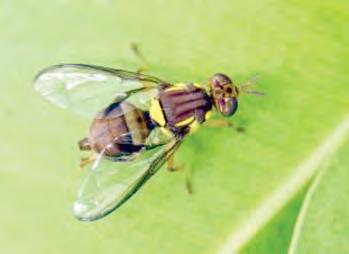
The Department of Primary Industries and Regions believes it has found the key to reducing fruit fly populations. (File)
complete our work is key to reducing detections.”
PIRSA is working closely with the community, with progress already being seen in the Riverland’s fight against Queensland fruit fly (Qfly).
Field teams developed flexible arrangements in partnership with residents where access was previously not achievable, resulting in a 62 per cent reduction in access issues in three months.
“We’re really pleased with the progress we’re making in accessing properties, and our preference is always to work directly with residents – not to take formal action,” Mr Size said.
“If we leave a card or letter requesting access to your garden, call the Fruit Fly Hotline on 1300 666 010 to arrange a time for us to visit.”
Field teams are assigned different roles during garden visits, such as checking for signs of fruit fly, hanging traps, applying organic bait, removing fallen or infested fruit, or carrying out hygiene checks.
The on-ground eradication efforts are supported with weekly sterile fly releases by plane, which help reduce fruit fly num-
bers and prevent new detections, with releases scheduled over Chaffey, Cooltong, Crescent, Paringa, and Remark until January 2026.
“We’re using every tool at our disposal to fight fruit fly in the Riverland, and the ongoing support of the community is essential to making it work” , Mr Size said.
In a 12-week period from July 14 to October 6, 2025, of 57 Riverland outbreaks, 31 detected no flies, whereas flies were detected in 26 instances.
The end dates for all outbreaks are as follows:
Riverland: December 30, 2025
Ceduna: November 11, 2025
• Glynde: December 20, 2025, and
• Salisbury North: December 6, 2025.
For the latest movement restrictions, visit fruitfly.sa.gov.au/outbreak-map.
























BY SOPHIE CONLON
A Riverland-based citrus business is working hard to ensure it is ready for when plastic produce stickers are banned in South Australia.
The ban, part of the State Government’s plastic phase out, was initially supposed to come into effect on September 1 this year.
However, industry push back resulted in the government pausing the ban’s rollout until September 1, 2028, which would bring it into line with other states.
Venus Citrus marketing team member Elle Aggeletos said the company was one of many initially calling for the State Government to push back the sticker ban.
“We were actually on the team to keep the stickers in, because South Australia was going to do it a couple years before the rest of Australia and it just wasn’t feasible,” she said.
“We had so many stickers that would have gone to waste and the price increase to get fully compostable stickers was insane, especially on such short notice.
“So we were part of the team to push it back to 2028 with the rest of Australia.”
Knowing the ban is still incoming, Ms Aggeletos said it was time to get a “bit of a jump on things” and investigate new ways to label the fruit.
So, Venus Citrus partnered with Natural Branding Australia to be one of the first in Australia to laser etch its fruit labels.
“We sent them some of our fruit and they did samples where they are in Melbourne and they looked really great,” Ms Aggeletos said.
“So we said ‘come down here and give it a try’ and they brought their machine and spent about two weeks doing trials on our fruit, which was great.”
She said the trial, which took place in August, had only had good results.
“It’s been really positive so far,” she said.
“I would say 95 per cent of the feedback has been extremely positive and we’ve had quite a bit of media coverage on it which is really great because it’s new and interesting.”
The laser etched fruit was sent to wholesalers around Australia and was handed out at the Royal Adelaide Show.
Some people questioned the need for labelling - whether by stickers or laser etching - and Ms Aggeletos said it mostly came down to branding.
“Venus is known as quite a premium, more high end citrus brand,” she said.
“[Citrus at the supermarket] could have come from Spain or wherever, so by having those stickers, or that branding on there, you know you’re getting that better quality fruit.”

It only cauterises the very top layer of the skin of the fruit … It doesn’t penetrate through, it doesn’t affect the flesh of the fruit.”
It could also help customers differentiate the variety of fruit.
“We have Venus, which goes on navels and mandarins and things like that, and then we have a sub-brand, which is Beloved,” Ms Aggeletos said.
“There is Beloved Pink and Beloved Red which is for our pink flesh cara caras and blood oranges, so that will help differentiate what kind of fruit it is.”
When it came to the laser etching, Ms Aggeletos said it did not impact the quality of the fruit.
“It only cauterises the very top layer of the skin of the fruit,” she said.
“It doesn’t penetrate through, it doesn’t affect the flesh of the fruit or anything like that.
“So, so far it has held up quite well.”
Ms Aggeletos said the cauterised skin would also hold up against zesting.
“You would be able to go over it because it is a heat laser, so it’s just a burnt mark into the skin,” she said.




“It wouldn’t actually affect anything, especially if you are using the zest and putting it in a cake, it’s going to get cooked anyway.”
With the trial over, Ms Aggeletos said she could see the laser etching working well for Venus Citrus into the future.
“In the long run it would be more cost effective than the stickers,” she said.
“Because this is only their prototype machine, not everything is completely worked out.
“They are still working on it, so everything is going to be a bit slower than the really advanced machines we have to apply the stickers at the moment.
“But we think once it’s fully up and running, they’ve sorted any issues out and we have quite a few machines going the time will be quite similar to the regular sticker machines.”
For now, Venus Citrus has gone back to using stickers, but Ms Aggeletos said trials would continue next year.
“We’re slowing down as we don’t have

that much fruit at the facility at the moment and because they have taken their machine back to Melbourne we have gone back to using stickers,” she said.
“Next year, probably around the same time, between June and the end of August we might do a second lot of trials and see how it goes next season when ever ything is busy again and go from there.”
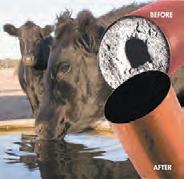

























BY LACHLAN SMITH
IN the heart of South Australia’s far north, where the red dirt stretches to the horizon and drought weighs heavily on the land, one woman is quietly travelling hundreds of kilometres to help keep rural communities afloat - not with hay or water, but with hope.
Based in Quorn, Dorothy Crosby is Rural Aid’s mental health and wellbeing counsellor and community representative for the region.
Her role spans a vast 300-kilometre radius, though her reach often extends even further.
“I visit farmers when possible when I am travelling through a region of SA,” Ms Crosby said.
For many farmers, long days of isolation, financial stress and harsh weather conditions can make it hard to ask for help.
That’s why Rural Aid’s service, which provides free mental health and wellbeing support, has been designed to meet farmers where they are - literally.
Ms Crosby connects with farmers across Australia through Telehealth, but when local producers are struggling, she will meet them face to face on their own properties.
It’s a crucial difference, she says, that makes people more comfortable opening up.
“It’s about being a safe person they can share the stress they are dealing with,” she said.
“Being available to listen to how the farmer is managing their unique situation is a valuable support.”
The toll is not just financial.
Some producers have been forced to make heartbreaking decisions, including putting down livestock when feed runs out.
Others struggle with anxiety, communication breakdowns, or the relentless uncertainty of farming in a changing climate.
“They might have anxiety, they might have stress, they might have communication challenges that they need help with,” she said.
Beyond one-on-one counselling, Ms Crosby also plays a vital community role.
As a representative for Rural Aid, she speaks at schools and local events about farming, mental health, and resilience.
She helps organise Rural Aid morning teas and barbecues - simple gatherings that provide a powerful reminder of community connection.
“This helps them know they are not alone and that others are facing the same challenges,” Ms Crosby said.
When disaster strikes, Rural Aid steps in with practical support.
The organisation provides free fodder,



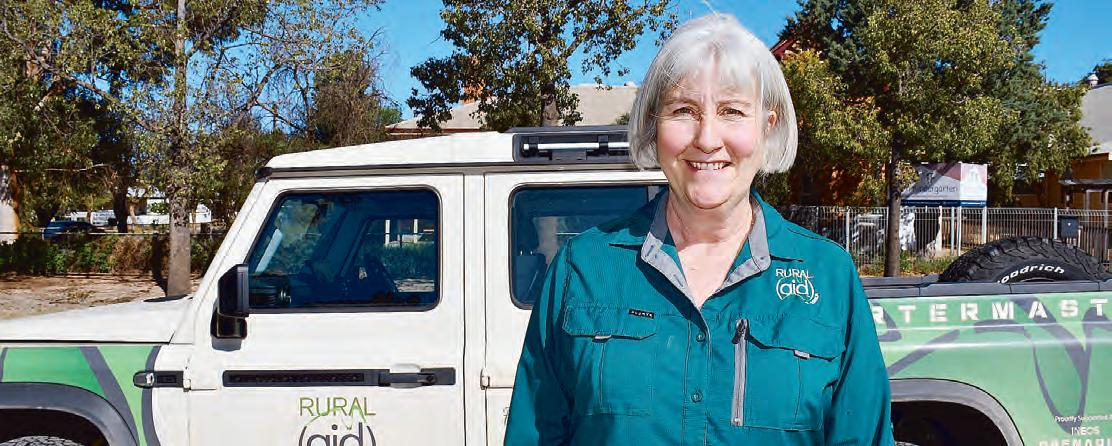
drought,” she said.
“
Farmers around here are loyal to each other and they help each other ... it’s just knowing you are not alone”
water and hay to registered farmers, helping them survive the toughest times.
“Sometimes there are gift cards and prepaid visas as well,” Ms Crosby said.
“Once a farmer registers the disaster team arranges a delivery to a group of other registered farmers in that area.”
Recent hay drops have reached farmers across the Mid North, Eudunda, Hawker, the Gawler Ranges, the Eyre Peninsula and Quorn.
“It is not a hand-out, it is a help-up … it is just helping them keep their core breeders,” she said.
While recent rains have turned some landscapes green, Ms Crosby said the recovery was fragile.
“It is that classic green drought when we are not out of the woods yet,” she said.
“For the farmers that de-stocked who only have their core breeders, they do not have the income coming in from their regular stock allowance.”
With livestock prices high and limited wool or meat sales, rebuilding herds and flocks is a slow process.
“It is an ongoing area to rebuild after the
Rural Aid’s reach goes beyond emotional and financial assistance.
Through its Farm Recovery Program teams of volunteers, known as the “Farm Army” , travel across the country to help producers complete essential work.
“Volunteers on the ‘Farm Army’ come from all over Australia to help farmers with projects that farmers need assistance with,” Ms Crosby said.
“They drive all over Australia to the different regions where the farm recoveries are happening.”
From fencing to concreting, volunteers divide into teams to tackle jobs that farmers simply do not have the capacity to finish.
“It just lets the farmers know they are not alone,” she said.
Ms Crosby believes the strength of the Rural Aid model lies in its personal touch; the human connection that often opens the door to deeper support.
“Sometimes the farmers might ring me as a conduit because they know me - I might be the person that they want to ask the question to,” she said.
“In all the regions they have got somebody who represents Rural Aid that they can contact.”
Despite their resilience and self-reliance, she said even the toughest farmers needed to know it was okay to ask for help.
“There might be personal areas that are going on in their lives or stress that is ongoing and the drought is what tips them over,” Ms Crosby said.
“It’s an honour to do it - all of us understand if your financial budget is stretched

and you cannot see a way to fix it, it can feel overwhelming.”
Through one-on-one conversations, Ms Crosby helps farmers develop tools to manage stress, offering guidance in a setting that feels familiar and safe.
“Farmers around here are loyal to each other and they help each other,” she said.
“It’s just knowing you are not alone.”
Rural Aid will respond to disasters as they occur, with the organisation connecting with key stakeholders in the region facing challenges in order to provide support.
It is important that farmers are registered well in advance so they can get the help needed when a disaster hits.
“There has been hundreds of hay drops in South Australia across the past year and water drops as well,” Ms Crosby said.
Support for Rural Aid also comes from local communities.
Across Australia, people are hosting fundraisers to keep the service going - including one in Melrose next month.
“Somebody’s doing fundraisers to raise funds for Rural Aid because they appreciated the support they received,” Ms Crosby said.
“There are a lot of different ways that people do it creatively all across Australia.”
For Ms Crosby, it all comes back to connection — between people, land and purpose.
Whether it is through a quiet conversation on a dusty farm track or a barbecue shared among neighbours, she is helping farmers remember something vital: they’re never truly on their own.
To contact Ms Crosby or access Rural Aid services phone 1300 327 624 or visit the Rural Aid website.

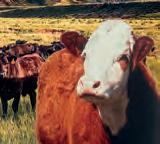



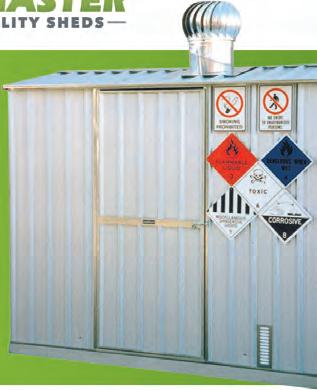
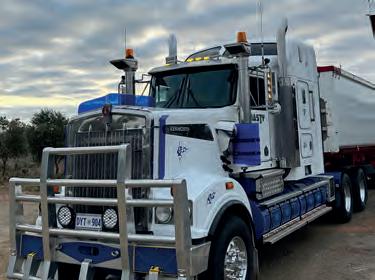

























BY BEVAN JONES
AUSTRALIAN consumers are becoming more adventurous with their taste buds and as farmers seek more resilient and profitable crops in an ever-changing drier climate, unusual fruits such as quandongs and jujubes are now making their way into markets, fine-dining menus and farm gates.
Quandongs, with their bright red skin and tangy, tart flavour, have been a staple food for First Nations people for thousands of years and they are drought resilient and thrive in harsh and arid conditions.
Jujubes, originating from China are commonly known as ‘Chinese Red Date’ and are eaten fresh or dried and have been used in traditional Chinese medicine for thousands of years.
With climate change putting more pressure on traditional crops, more growers are beginning to experiment with hardy alternatives and quandongs like jujubes are naturally suited to the Australian environment.
JUJUBES
Jody Miltenoff is the founder and director of Jujubes SA with his son Marcus, also a founder of the company.
Jujubes SA runs a specialised jujube nursery and has an orchard where it trial varieties for fresh and dry fruit production.
The journey began for the Milenoff family when Jody and his wife purchased a hobby farm at Cambrai in 2000.
Jody is a builder by trade, and the property it was purchased to renovate and fix up the homestead.
Marcus said Cambrai could be quite dry and dusty, especially in summer, so they were looking into what could grow on the property which would be suitable for the type of weather conditions.
“Around 2014, Dad was looking into what we could grow on property and what would survive the conditions, on bore water,” he said.
“With salty ground water we needed to find a crop that would survive, we looked into all sorts of exotic fruit trees and stumbled across jujubes, and it ticked all the boxes.
“Once established they are an extremely hardy tree and drought resilient; they originated in China and the Middle East with hundreds of different varieties in existence.
“They grow in all conditions, even all the way to 45 degrees in desert-like conditions.
“Dad ran into growers in the Riverland and Western Australia and got lots of information about them and we found out there was an emerging market and a growing interest and people were wanting more of the trees - and that’s how it came about.”


Marcus said jujubes were well suited to Australia’s drier climates, particularly in the Murray-Darling and Mallee regions.
“They’re very hardy once established and require approximately 50 per cent less water in comparison to citrus and other fruit trees,” he said.
“We toured through parts of Northern China, in Shanxi Provence in 2018.
“We also had the owners of the Tianzhirun Jujube Co visit us here in Australia.”
“They believe that we have the best climate in the world to grow jujubes.
“The Tianzhirun Jujube Co conducted research at Flinders University to develop functional foods that were based on jujubes.
Marcus said people could pick fruit off trees after six to 12 months from planting.
“We raise the jujubes from seed on wild jujube root stock and then graft onto the desired jujube variety,” he said.
“We advise our clients to remove the majority of fruit though to allow the trees to grow for the first couple of years.
Along with the culinary experience, he said jujubes provided several health benefits.
“Jujubes are high in antioxidants, polyphenols, flavonoids and minerals, 17 minerals have been identified in a recent study on
South Australian fruit,” he said.
“They are a rich source of vitamin C.
“Extensive research over decades in China have found potential benefits in fighting oxidative stress, anti-inflammation, improving relaxation and sleep, anti-depressant effects and help to fight off cancers.”
According to Mr Miltenoff, social media was a good way of finding export markets.
He said the business had tested the market with its jujubes by sending dried fruit to Japan after people had reached out.
The majority of the fresh fruit is sold to local and interstate wholesale markets and local Asian grocery stores.
Although jujubes are well known throughout Asian communities, more education and marketing is required to expand market adoption across the broader community.
With climate change putting more pressure on traditional crops, more growers are beginning to experiment with hardy alternatives and quandongs like jujubes are naturally suited to the Australian environment.
QUANDONGS
Quandongs also have great health benefits including high levels of vitamin C and antioxidants and products such as quandong jams are becoming popular in Australia.
Brenton Whellum is an expert in quandongs and has had a fascination for them since he was a child.
Mr Whellum and wife Teesha established Nuthin but Natives, an Australian native plant nursery at the Booleroo Centre in South Australia, and they take great pride in growing the beautiful native flora of Australia.
Mr Whellum said he recalled picking fruit from quandong trees since he was small, and he always had an interest in learning more about them which led to becoming an expert and growing them himself years later.
“I fell in love with the bush and plants at a young age and I particularly loved quandongs when I was a child and I always knew where they were, and remember being young on horseback and picking them off the tree,” he said.
“There were all sorts of different flavours and I just remember munching on them.
Mr Whellum said while growing them was not without its challenges, it was something he enjoyed.
“Quandongs can be finicky in their early years, they are prone to parasites such as native quandong moths and harvesting them is labour intensive with fruit often ripening at different times,” he said

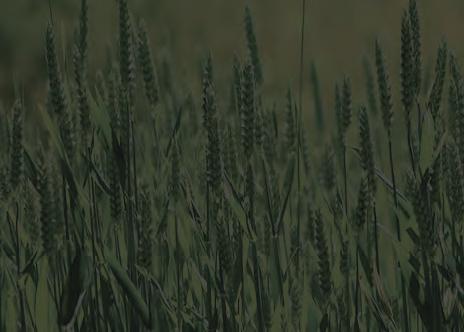












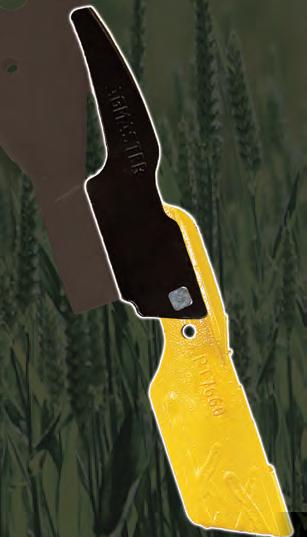

































NEW research released by AUSVEG has, for the first time, quantified the staggering cost of compliance, regulation, and red tape weighing down Australian vegetable growers.
The Horticulture compliance and regulation: reducing the burden by 2030 report reveals that those pressures cost the industry an estimated $213 million annually, threatening productivity, profitability, and the long-term viability of Australia’s vegetable sector.
The launch comes alongside the 2025 AUSVEG Industry Sentiment Report, which paints a worrying picture of grower confidence.
The July survey shows that two in five vegetable growers are actively considering leaving the industry within the next year due to challenging business conditions, with a further two in five likely to follow if a viable exit strategy existed.
It marks a rise from an average of one in three since January 2025.
AUSVEG chief executive Michael Coote said the results underscored an urgent need for action.
“As sentiment in the vegetable industry has plummeted and remained at record lows, Australian vegetable growers have increasingly called out that overwhelming
THE feather&PECK story is a farm-first story.
With a nine year track record and multiple farms adding hens to their enterprise, it shows that sustainable agriculture is not just environmentally responsible - it’s commercially viable.
What began in 2016 as a cattle farming operation over two Fleurieu farms has evolved into a thriving enterprise producing more than 150,000 pasture-raised eggs weekly across seven partner farms.
Mobile hen caravans move to fresh pasture each week, allowing chickens to forage whilst regenerating the soil.
Guardian Maremma dogs, championed by the now retired poster boy Ollie, provide an innovative solution to predator control.
Tangible benefits include improved pasture quality, reduced carbon footprint, and increased yields across all farm enterprises.
The hens work as natural land managers enhancing rather than depleting the soil.
Alistair Just, from Ashley Park Pastoral,
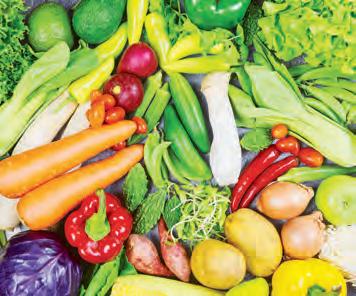
compliance burden is taking an unsustain-
requirements, but also the raft of audit, certification and other obligations imposed by service providers, supply chain partners, retailers, regulatory bodies and industry codes of conduct,” Mr Coote said.
The ongoing compliance burden, alongside rising input and labour costs, poor retail pricing, and limited capacity for capital investment, has contributed to declining profitability across the industry.
According to the July survey, 62pc of growers reported being financially worse off compared to the previous year, while 53pc expect conditions to deteriorate further in the coming year.
The report also identifies 34 actionable recommendations aimed at reducing duplication, improving efficiency of certification and audit processes, and streamlining government procedures.
AUSVEG plans to establish an industry taskforce to implement the recommendations, a move seen as critical to reversing the industry’s declining sentiment.
“Growers need to be spending less time filling in forms and doing repeated, timeconsuming audits, and more time getting on with their real jobs, producing the worldclass vegetables that Australians depend on,” Mr Coote said.
able toll on their productivity, profitability and future viability, as well as their mental wellbeing,” Mr Coote said.
“For the first time now, we have a true measure of those pressures.”
The report, produced in collaboration with Corporate Value Associates (CVA) Australia, provides a forensic examination of both large and small vegetable growing businesses.
It found that compliance costs now account for 4 per cent of total operating costs, equating to 42pc of average vegetable industry EBITDA of 9pc.
“Compliance isn’t just about government
The Horticulture compliance and regulation report highlights that compliance requirements have grown significantly in number, scope, and complexity over the past 30 years, now covering around 50 areas of business operations.
“Vegetable growers accept that certain compliance is necessary, particularly around food safety and the wellbeing of consumers, employees and themselves, but with the burden of compliance now equating to an estimated 42 percent of vegetable growers’ EBITDA, it is clear that even moderate compliance efficiencies will have material productivity and profitability benefits,” Mr Coote said.
He said addressing the issues was not only vital for growers but for consumers.
“The warnings in our Industry Sentiment Report are clear – unless we see smarter, not harder, compliance regimes in the vegetable industry, and the key issues facing growers addressed, more and more will leave, supply will drop, and veggies will cost more for consumers,” he said.
With compliance pressures now formally quantified, the industry faces a pivotal moment. Implementing these recommendations could deliver immediate productivity gains and safeguard Australia’s future food security while giving growers the breathing room they desperately need.
has produced eggs for 18 months.
“Once we rotate the hens on we use a modified rotary hoe to incorporate the manure into the soil,” Mr Just said.
“We then plant a 15 grain mix cover crop of different annuals and perennials including herbs, grasses, clover, radishes and even sunflowers that grow taller than the cattle.
“These plants build nitrogen and increase the depth of the top soil.”
Carly Bussenschutt, of Marapana Farm at McHarg Creek, is the newest feather&PECK farmer partner.
She is a third generation Kangaroo Island prime lamb producer, an agronomist and a 2013 Nuffield Scholar.
Her husband Adam was raised on a broadacre cereal farm on Yorke Peninsula.
They love the system of the hens and enjoy having Maremmas around.
Ms Bussenschutt said the decision to run hens had been a positive move.
“We wanted to scale our farm without buying more land,” she said.
“By creating a pasture raised egg enterprise we can get more value out of our land whilst improving it.”
For farmers considering diversification, the feather&PECK model offers a proven pathway: regenerative practices that strengthen existing enterprises and create new revenue streams.
It is agriculture that builds rather than extracts - something every regional South Australian farmer needs.
feather&PECK eggs can be found in major retailers including selected Woolworths stores, Drakes, and Foodland, alongside independent grocers, green grocers, butchers and cafes across South Australia.
The yellow-and-white checked cartons, featuring Ollie prominently, tell a compelling story that resonates with increasingly conscious consumers who care where their food comes from.
Visit www.featherandpeck.com.au for more information.
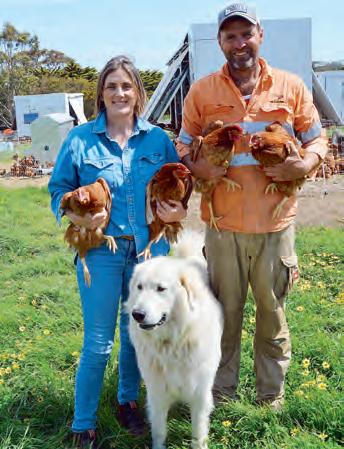




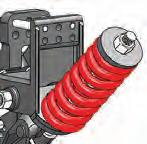



















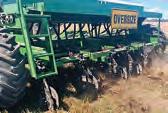






































































































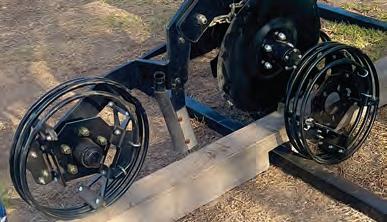


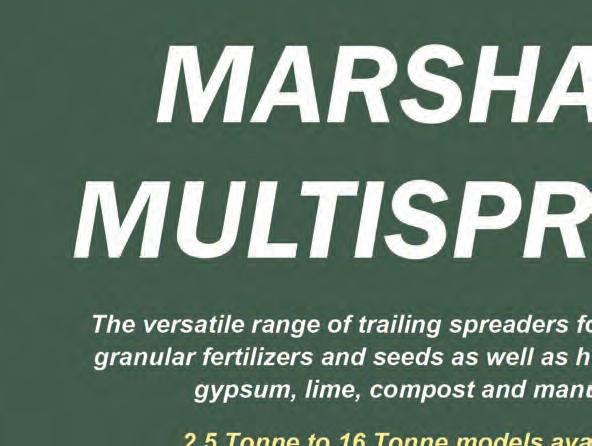
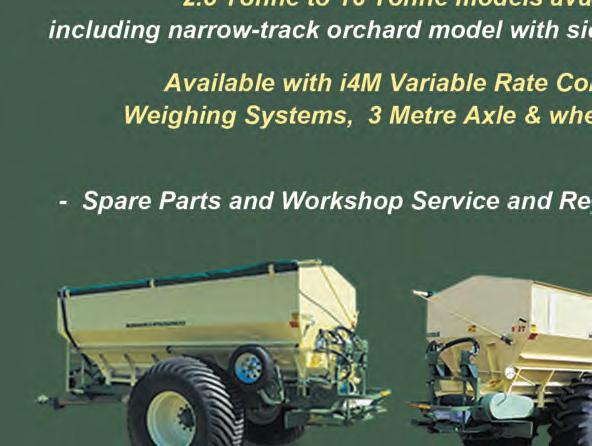




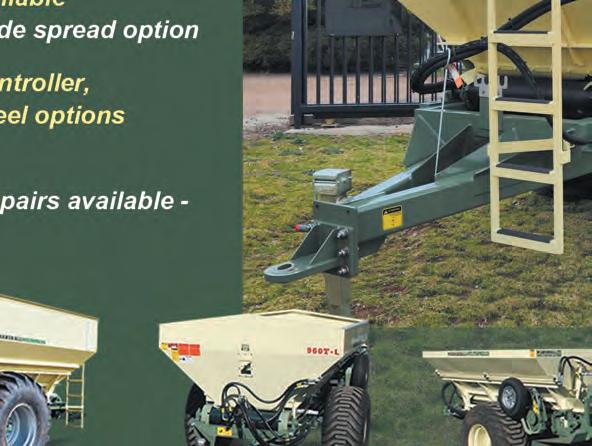



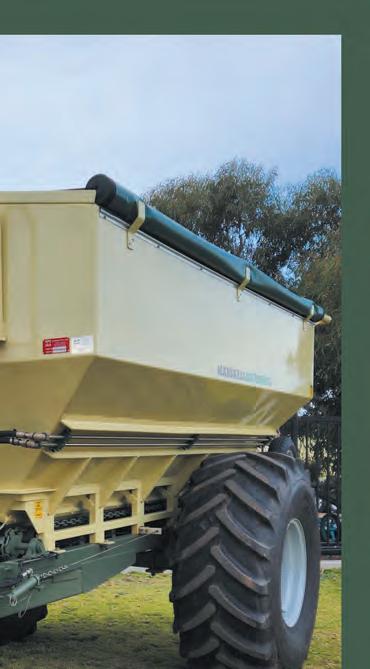
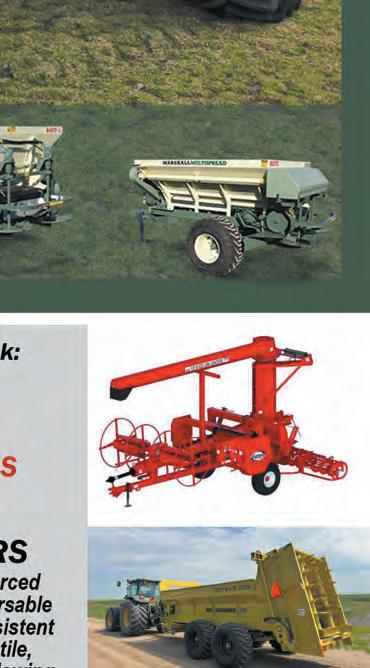


























BY JACK CHURCH
THE life of a mum and dad farmer has been made increasingly difficult in South Australia as drought conditions, stock prices, and permits are causing mental and physical strain.
In Australia farmers have one of the highest suicide rates per occupation, and with recent challenges in the industry the number of producers struggling has only risen.
However, damning new legislation could provide significant relief to South Australian farmers, who are advocating for more control of their water on their own properties.
Independent South Australian Senator Sarah Game has proposed changes to the current dam legislation in South Australia, which would allow South Australian farmers to have one dam – up to five megalitres in volume, and a wall height of no more than three metres – for every 100 acres of land they own, without needing a permit through the Landscape Board of South Australia.
Ms Game said the current dam permit legislation was “overly-restrictive” , with farmers only collecting a tiny percentage of rainfall in South Australia.
“These farmers are facing one of the worst droughts on record, yet the State Government seems unwilling to even consider helping them in this fashion,” she said.
“Adopting this measure would show that the State Government is serious about supporting the mental health of our struggling farmers.”

The current legislation on dam permits was introduced in 2013, aimed at protecting the region’s limited water resources and ensuring that water continues to flow to where it’s needed most.
Following Ms Game’s call for change, Paul Wainwright from Hills and Fleurieu Landscape Board said the motion to ease dam restrictions is of serious concern, particularly given the mounting pressure on the region’s water equity.
“Many catchments in the Mount Lofty
Ranges are already over-allocated,” Mr Wainwright said.
Further dam development would place unsustainable pressure on an already stressed system. Additionally, around 30 per cent of water stored in dams is lost to evaporation.
“This isn’t about restricting farmers, it’s about ensuring long-term water security for all.”
Founder of Food Producers Land Owners Action Group Australia (FLAG) Peter Manu-
el, from Strathalbyn, has farmed the land for nearly 40 years.
He said the red and green tape put up by the government does nothing but hinder the mum and dad farmer.
“If we want to put in another dam we shouldn’t have to go through engineer reports, we know how to do it,” Mr Manuel said.
“I don’t want a massive great dam that takes feed from my stock, I want a dam that’s big enough so if we go through a drought period again there’s going to be enough water in it for farmers like me to survive.”
Mr Manuel said an ideal legislation would allow him to clean out his dam without permits, and give farmers control of the land they bought and own.
“There’s nothing there to actually help the mum and dad farmer, it’s all about hindering us,” he said.
Touching on the subject of increased mental health problems in farmers, Mr Manuel said the situation was worse than many can even imagine.
“I remember doing a speech in Rockhampton and women were coming up to me and an older one said that when her husband goes out in the back paddock, she didn’t know if he’d come back or not,” he said.
“Look, I love farming; but I tell you what, it ain’t easy.”
Mr Manuel and many other farmers are hoping for change and government grants, which will help them feed stock in this dry period, with many hoping for rain, or at least, a future without dam permits.



























A new social media series is putting regional communities and farmers in the national spotlight, with BASF Agricultural Solutions Australia recently launching ‘Ask a Farmer’.
The national initiative is designed to bring Australians closer to the farmers who grow their food, giving them a chance to get answers to questions they have always wanted to ask.
A mix of curious, fun, and controversial topics are explored, including crop sustainability and food waste to on-farm technology, floods, and drought, to life in regional communities.
It is hoped the series will break down barriers between city and country, sparking honest conversations and showcasing the diversity, dedication, and heart of Australian agriculture.
From vineyards to crop fields and vegetable farms, Ask a Farmer highlights the people, families, and communities working hard to provide fresh, sustainable food.
BASF Australia and New Zealand head of agricultural solutions Pavana Wall said the campaign puts farmers at the forefront.
“At BASF, we often talk about helping farmers do the biggest job on Earth, and Ask a Farmer brings that to life in a very real way,” she said.
“It’s about showing who we are here for –
the farmers who grow our food, care for the land, and face real challenges every day.”
The series will be fronted by meteorologist and broadcaster Jane Bunn, who said it was good to see that consumers have the opportunity to ask questions.
“When it comes to farming, the best insights come from those who grow our food, so why not ask a farmer directly?,” Ms Bunn said.
“I was drawn to this project because weather and farming are so closely connected – it’s something I see every day in my work.
“Farmers make decisions based on the conditions we forecast, and those decisions affect the food on our tables.
“Being part of Ask a Farmer is a chance to help bridge the gap between the city and the country, and to share the incredible stories and lives behind the food we all rely on.”
South Australian farmers and agronomists Zack Zweck from Kadina, Justin Zweck from Blyth, and Nathan Zweck from Hart will be featured throughout the campaign.
New topics will be released each week across BASF Agricultural Solutions Australia social media channels.
To see farmers answer questions, visit crop-solutions.basf.com.au/ask-a-farmer or follow BASF Agricultural Solutions on LinkedIn or Facebook.

WHEN harvest is done, one simple step will put you streets ahead for 2026.
Before clocking off for the break, lock in a Case IH Combine pre-season service.
With the season still fresh, you can sort any niggles early, secure guaranteed parts and finance deals, and set up for a smoother, more productive year.
Pre-season inspections include detailed reports with recommendations that will boost performance, reduce downtime, and keep machines in top shape - really paying off.
Want to know if it is worth it? Here is what local farmers have to say.
Robert Thiele, Monarto South “I’ve been farming this property for 52 years, running cropping and sheep, and my family’s been here much longer.
“We bought our first Case IH header from Brenton Ramsey in 2003, and it was the best decision - I couldn’t be happier. I’ve stuck

in a Case IH Combine pre-season service to stay ahead of the pack. (Supplied)
with the brand and Ramsey Bros sincetheir service is magnificent.
“We do a pre-season service on the header every year.
“Dad always said, ‘do it straight after harvest’ , and we used to write down any little thing that needed doing.
“They take photos, provide a detailed report, and spot issues early, so downtime is minimal and machines are ready when we
need them.
“And if anything goes wrong after that, they come up and fix it fast.
“The priority service from the Murray Bridge team - Corey, Jake, Adam, Jacob and Eric - is fantastic.
“I’d definitely recommend getting the pre-season service. It’s thorough, reliable, and makes running the farm that much easier.”
Alistair McInnes, Milang
“Our family farm is a mixed farming operation - cropping, sheep, and a bit of hay and harvest contracting - and we know how important reliable gear and support are.
“We know all about in-season breakdowns, and we’re keen to stamp them out - they never break down sitting in the shed!
“We’ve been with Ramsey Bros at Murray Bridge since 2009, and they’ve always looked after us.
“Even though they’re a bit further than local dealerships, they do everything to keep

us going.
“If something breaks down during the season, even on weekends, they’re quick to help, and the team is organised and easy to deal with.
“We’ve done pre-season services on our Case IH header for four years, ever since switching from another brand, and they’ve made a big difference.
“The machine’s great, but it was the preseason service and after-sales support that made it really appealing.
“They check everything, list issues and help prioritise, which is especially useful when budgets are tight.
“They’ve spotted things we’d miss, giving us peace of mind and reducing the risk of major breakdowns.
“We head into harvest knowing machines are ready; if anything comes up, they jump on it. They’ve always looked after us, and that’s why we stick with them.” Places are limited, so book today.
Located at 107 Cormack Road, Wingfield SA, WESS is South Australia’s largest independent welding distributor for sales, service, hire, and repair.
As a 100% Australian owned company, WESS leads the way in cutting, welding, and metal fabrication. Our local expertise, top-tier products, unbeatable prices, and commitment to customer support make us South Australia’s trusted one-stop welding shop.






























By Bev Story
A late start to the season, and minimal rain for a couple of months, has not stopped some Eyre Peninsula farmers producing good cereal crops this year.
Farming in the Cowell and Cleve districts, Leonie Mills and her husband Jon also run Morley Merino Stud as well as a commercial flock of sheep.
At the time of the Morley Stud annual onproperty auction on Friday, August 22, the Mills’ family already had well advanced cereal crops, despite minimal rain.
Ms Mills said their Tomahawk Clearfield wheat crop had been sown about the second week of May, after a late break in the season.
“It is doing really well - it looks fantastic,” she said.
Being a fast growing variety, the couple expected it would be ready to harvest by the time they finished their barley harvest - which got underway on Sunday, October 19.
That was to depend on how much rain fell during thunderstorms in late October.
“It is pretty close now, so I expect we will reap it in the next fortnight (as at October 22).”
Ms Mills said the wheat crop was sown over stubble to conserve moisture from the summernot that there was much this year.
“We were very fortunate to receive 30mm in early September - that was a very big rain for us
She said the practice of direct drilling was their preferred method of sowing, unless “we have a weed issue”
Coming on the heels of an extreme hay shortage throughout all of southern Australia this year, she said “we ended up with minimal reserves” of hay left. They had already cut wheat for hay this year to replenish those stocks.
While some areas of Eyre Peninsula endured a couple of months without significant rain during winter, Ms Mills said they had been luckier than some.
“We were very fortunate to receive 30mm in early September - that was a very big rain for us,” she said. “September is often a make or break month for us.”
She said it was hard to tell but she expected the Tomahawk crop to yield between two and a half and three tonnes a hectare.

ACROSS the Southern Rangelands, pastoralists and land managers are set to benefit from a landmark initiative aimed at strengthening grazing practices and improving ecosystem health.
The Smart Grazing, Stronger Lands project promises hands-on support for pastoral businesses looking to adopt climate-smart tools and technologies.
The project, funded through the Federal Government’s Climate-Smart Agriculture Program, under the Natural Heritage Trust, builds on a successful pilot that demonstrated how grazing management decision-support tools could be integrated effectively into pastoral enterprises. SA Drought Hub Knowledge Broker and project coordinator Tony Randall said the initiative would provide practical, locally driven assistance.
“This project brings together a range of experienced and trusted natural resource management organisations, grower groups and service providers from across Australia’s Southern Rangelands to offer pastoral businesses locally driven support through demonstration sites, training, peer-to-peer learn-
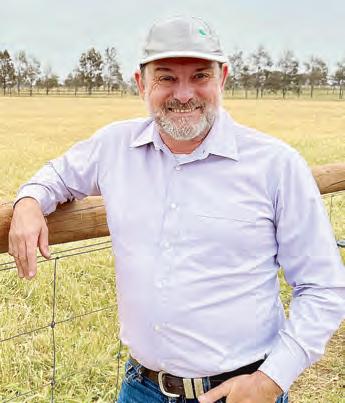
ing and expert guidance,” Mr Randall said.
Demonstration sites will be established where pastoralists can trial and adopt technologies to enhance both grazing manage-

ment and land condition.
“We will be establishing demonstration sites strategically across 1.5 million square kilometres of Australia’s Southern Rangelands and will be working with pastoralists to trial and adopt decision-support tools and technologies to improve grazing management and ecosystem health,” he said.
The project aims to fast-track the adoption of proven technologies that enhance land condition and business resilience. “The broader aim of the project is to accelerate the use of proven, climate-smart technologies that improve land condition and overall business resilience,” Mr Randall said.
Historically, uptake of grazing management tools has been limited by time pressures, lack of confidence in technology, and the need for hands-on support.
Smart Grazing, Stronger Lands addresses those barriers through training, extension services, and collaboration with partners who have already seen success in the pilot phase.
SA Arid Lands Landscape Board general manager Jodie Gregg-Smith, said the project
would enrich the work done in the board’s Building Pastoral Sustainability program.
“The connection across the Southern Rangelands with this project will lead to some valuable shared learning and management tools that will lead to a broader understanding of the challenges and solutions across state lines,” Ms Gregg-Smith said.
“With the context for Southern Rangelands management being unique, this program will enable a tailored suite of options to support grazing management and continued collaboration across landscapes and industry.
“It is the perfect example of how the Drought Hub model can work at scale and embed applied learning and adoption more broadly.
Led by the University of Adelaide through the SA Drought Hub, the project will work alongside a wide network including the Southern NSW Innovation Hub, Grower Group Alliance, CSIRO, regional landscape boards, and local service providers with grazing expertise, ensuring strong support for pastoral businesses across the Southern Rangelands.
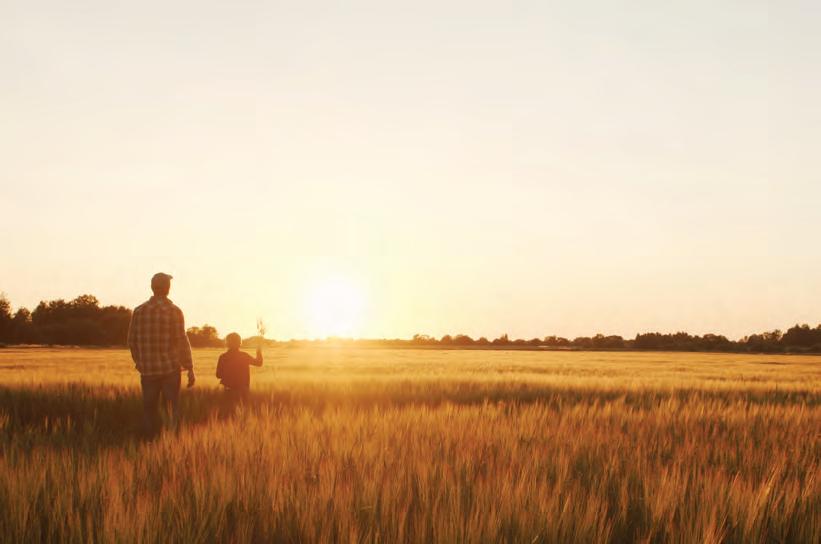
























BY NERALIE BAILEY
THE Mid North and Spencer Gulf regions drew a large number of attendees for a Carbon Ready Ag Conference held in August.
Attendees had the opportunity to network and hear from experts across the carbon farming sphere, including keynote speaker Kate McCabe, who has been the finance director of McCabe AgCo for the past 25 years.
McCabe AgCo is an Australian multi-generational, family-owned agricultural producer of grain and livestock, farming at Hamley Bridge in South Australia’s Mid North and Glenville in the central west of NSW.
Ms McCabe manages the finance functions for the business, integrating sustainability and natural capital management into its agricultural practices.
She also consults for government and industry organisations providing economic analysis for sustainable agricultural projects.
Her presentation focussed on the practical side of sustainability and emissions reporting, what it means in practice ‘on farm’ , and how to make it manageable to get real value.
She grew up on a farm and initially had no interest in agriculture.
“I couldn’t wait to get down to what I thought was the ‘big smoke’ in Adelaide and study and I saw myself in a finance or corporate banking role in perhaps Sydney or New York,” she said.
“Life took a very different direction when I married the farmer next door, and so that is where my interest in farming really started.
“We have a multifaceted challenge that we’re faced with; feeding the world while we have a warming climate.
“That’s what really prompted me to study a Masters in Global Food and Ag Business.”
Her studies focussed on greenhouse gas emissions, natural capital - the world’s stock of natural resources and ecosystems such as forests, minerals, soil, water, and biodiversity, that provide essential goods and services to support life and the economy - and development economics.
She enjoys combining practical experience on the farm with her corporate accounting and finance background and interest in research and consulting work.
“It’s a really exciting balance for me at the moment,” she said.
“When I first started looking at emissions and emissions data and how we were going to report, it felt like another compliance box that we were going to have to tick.
“Then we realised it could be a tool to improve how we run the business.
“There was a shift in thinking from bur-

Fungicide and Herbicide
Spraying•Barrel Pruning•Tote Bins and Grape Bin Trailers•Seeding Vineyards, Headlands and Small Paddocks•Deep Fertiliser
Ripping•Cultivating•Discing and Rotary Hoeing•Experienced in Organic Vineyards and Sustainable Winegrowing
Please call Melissa Eaton on 0419 037 557 mel@valleyvineworks.com.au PO Box 12, Watervale SA 5452 12767201-EA20-25
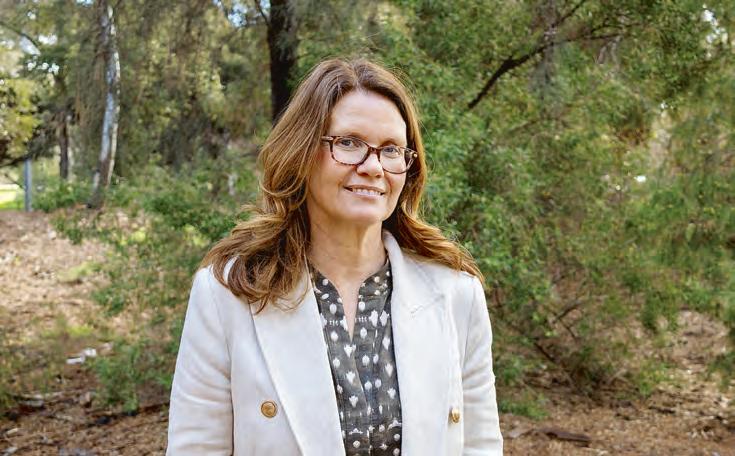
measure and manage their greenhouse gas emissions.
The tools, specific to sectors such as dairy, sheep, beef, and cropping, allow users to estimate emissions to create a carbon baseline for their farm and explore ways to reduce emissions.
“I find in cropping there is a push back when I say carbon farming because all people think about is soil; soil sequestration (land management techniques can increase the rate of carbon storage in soils) and planting trees,” Ms McCabe said.
“People can’t relate it back to cropping; we want to think of reduced emissions as a form of carbon farming.”
For carbon farming, soil testing has to be to a depth of 30 centimetres .
She said McCabe AgCo needed to understand the benefits for what was a costly undertaking, but they found the sampling validated what remote sensing had told them.
” In SA we have a great story to tell; our low emissions profile is a real selling point and the proof is in the data so let’s make that proof work for us.
den to benefit.
“We decided to formalise all of our sustainability initiatives and we called that our resilient farming project.”
Ms McCabe said sustainability has long been a priority for the business, beginning in the 1990s with minimum till.
It is the practice that significantly reduces or eliminates the use of the plough, minimising soil disturbance to protect soil health, improve its structure, and conserve organic matter.
Instead of turning the entire soil surface, the method involves cultivating only the planting areas, often leaving crop residues on the surface as mulch.
The goal is to reduce erosion, increase soil biodiversity, save time and costs, and enhance overall soil fertility and water-holding capacity, ultimately leading to more resilient and productive farming systems.
“In 2003 we had our first zero till and in 2006 started our chicken manure spreading program; those were our first activities,” Ms McCabe said.
“My introduction to emissions in a cropping context was about 15 years ago when SANTFA’s (South Australian No-Till Farmers Association) research and development
Magnetic Grinding Papers
• No more gluing
• No more wasted time
• Bonus Retrofit Galvanised Steel Faces for Aluminum Grinding Discs!
• Aluminum Discs with Steel Faces now available
• Steel Discs (available at Field Days only)
• Purchase online or at Field Days
Wireless Control Handpieces & Counters
• Put more control, safety and efficiency in your hands
• Based on the superb Heiniger Icon Handpiece (Available when certified) (still waiting)
manager Greg Butler described carbon, or greenhouse gas emissions, as waste and that’s something that reality resonated with me.
“He said fertiliser, if it’s not applied at the right time or in the right conditions, is lost to nitrification.”
Nitrification is a biological process in the nitrogen cycle where microorganisms oxidize ammonia into nitrite and then into nitrate.
It is a crucial step for plants, as they can absorb nitrate for growth, making the nitrogen available in the food chain.
“That also has implications for productivity and profitability; that’s what we try to focus on,” she said.
“How do we reduce waste as far as emissions?”
Since 2022, the business has used the Greenhouse Accounting Framework (GAF) tool to measure emissions on a paddock by paddock basis and participated in the Northern and Yorke Landscape Board’s carbon footprint baseline project which has been helpful in validating the results that were seen in their calculations.
GAF tools are a set of Microsoft Excelbased calculators developed to help farmers






“Soil health is a really strong focus for us; with 400mm rainfall it’s hard to get really big changes but we want to keep improving our soil health and understand what the constraints are,” she said.
Ms McCabe said there were big differences between the management of properties in the Mid North and in NSW, which has 600mm rainfall, and while they might not be able to sequester carbon to the same degree in SA, they can consider ways to reduce emissions and increase biodiversity.
“The reality for farmers is that the data load is already heavy and adding emissions reporting can feel like it’s just another spreadsheet, another login, another job that we have to do at the end of the day,” she said.
“There are always many different stakeholders that we report to wanting data in different formats, so how do we meet their needs and then use this information for better decisions?
“The approach we take is to collect the data once and use it many times.
“On farm it means designing systems so that the data we collect for compliance also feeds into our sustainability reporting, our supply chain commitments, and then really importantly our own decision making.
“These numbers don’t just tick compliance boxes; they tell us about efficiency on our farms and we have looked at data in a management context.
“In SA we have a great story to tell; our low emissions profile is a real selling point and the proof is in the data so let’s make that proof work for us.”

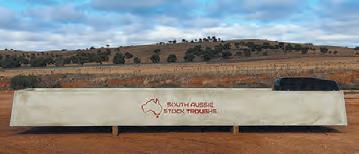
























BY IFARMWELL
A new farmer-led campaign has been launched to encourage South Australian farmers to collectively take care of themselves and each other during challenging seasons.
Weather it Together is a campaign led by farmers – for farmers, acting as a friendly reminder about practical steps members of farming communities can take to maximise their wellbeing, regardless of the season.
The campaign is driven by Associate Professor Kate Gunn and the ifarmwell team at the University of South Australia, developed with farmers, backed by industry groups and funded by the Department of Primary Industries and Regions (PIRSA) State Government’s $73 million Drought Support Package.
Founder and Director of ifarmwell, Assoc Prof Gunn said the program encourages farmers to embrace four key behaviours: keep connected, focus on what you can control, get active and ask for help by speaking openly about challenges with family, friends and professionals.
“Farmers are used to facing challenges and solving problems – they’ve done so for generations, but they should not feel they have to face them alone,” she said.
Associate Professor Gunn understands the issues from both a personal and professional perspective, having grown up on a farm near Streaky Bay and worked as a clinical psychologist.
“It can be very overwhelming when your


future is uncertain due to something beyond your control – something you can’t simply fix – like the weather,” she said.
“This campaign is about focusing on what you can control, getting active, lifting each other up and sharing the load – all things we know help farmers maintain good mental health.”
Associate Professor Gunn said the campaign was not only important – it was timely, as it followed one of the most severe dry periods in South Australia’s history.
“Although parts of the state have now enjoyed some rain, unfortunately that rain has not washed all of the worries away,” she said.
“For example, it will take a long time for many farming families to recover financially.
“Findings from previous droughts suggest that the full emotional impact of drought does not actually peak until the most intense dry period is over, so this campaign will be relevant and important for some time.”
Coordinating the rollout of the Weather it Together campaign, from the ifarmwell team at the University of South Australia, is former ABC rural journalist Annabelle Ottens (Homer).
“As someone who has grown up in rural Queensland and now lives in South Australia’s Mid North, I’ve experienced my fair share of dry seasons and understand the challenges farming families face when faced with adversity,” Ms Ottens said.
“I am delighted to roll out this campaign
in partnership with farming and community groups across South Australia.”
Caltowie farmer Ben Lehmann said it was important people remind each other to speak about their challenges.
“This campaign is about saying, ‘you’re not alone’ – no matter what the season throws at you,” he said.
“When times are tough, it’s the people around you who make the difference –whether that’s catching up for a coffee, talking on the phone or knowing where to find the right support.”
Numerous industry groups are backing the campaign, including Primary Producers SA, Grain Producers SA, Livestock SA and the SA Dairyfarmers’ Association.
Minister for Primary Industries and Regional Development, Clare Scriven, said the State Government was committed to providing support.
“This campaign is about practical support, but also about reminding farmers and their families that it’s okay to reach out, to talk, and to share the load,” Ms Scriven said.
“By working together, we can help ensure our farming communities are strong, resilient and prepared for whatever the future holds.”
Over coming months the campaign will appear on various media and then spread into clubs and pubs, GP clinics, service stations and community hubs.
For more information and to access the farmer-friendly resources, visit weatherittogether.org.au


























BY KAITLYN GIBBONS
WITH a vision to combine her love of education and farming, Narelle Zanker is offering locals and visitors an experience like no other.
Alongside her husband, Joel, she owns and operates Dairy Adventures, an agritourism business located in their own backyard at Mannum.
The business allows visitors to get up close with cows and learn firsthand where milk comes from, offering a hands-on glimpse into life on a modern dairy farm.
Mrs Zanker grew up on her family’s dairy farm and then went on to spend four years as a full-time teacher.
While she loved both teaching and farming, she knew she could not pursue both full time.
Guided by a lifelong dream to share farm life with others - and encouraged by her husband - Dairy Adventures came to life and is now celebrating its first year of operation.
The business provides a unique and immersive experience that goes far beyond simply observing farm life.
It caters to a wide range of visitors, including school groups, families, aged care residents, and corporate teams, with activities tailored to suit each group’s interests and needs.
Guests can bottle-feed calves, hand-feed a pet cow named Elvis, fill buckets of grain, tour the dairy, and even try milking a cow.
Mrs Zanker said Dairy Adventures offered visitors an interactive opportunity to experience modern dairy operations in a personal and educational way.
“I still get that connection with people and then rather than educate them about subjects and the curriculum, I can just focus solely on what I am passionate about – dairy farming, cows and farming in general – and give people an exposure in a hands-on and interactive way,” she said.
“It’s not just about seeing the cows; it’s about understanding where our food comes from and the work that goes into running a farm.
“We want people to leave with a deeper appreciation of farming and a memorable experience they can talk about for years.”
Mrs Zanker said the flexibility of the business model had allowed it to attract visitors from across South Australia, from school excursions and corporate team-building events to families seeking a unique day out.
Behind the business is a strong foundation of family support, which has been crucial to its growth and operation.
Mrs Zanker works closely with her husband and parents on the family farm, com-
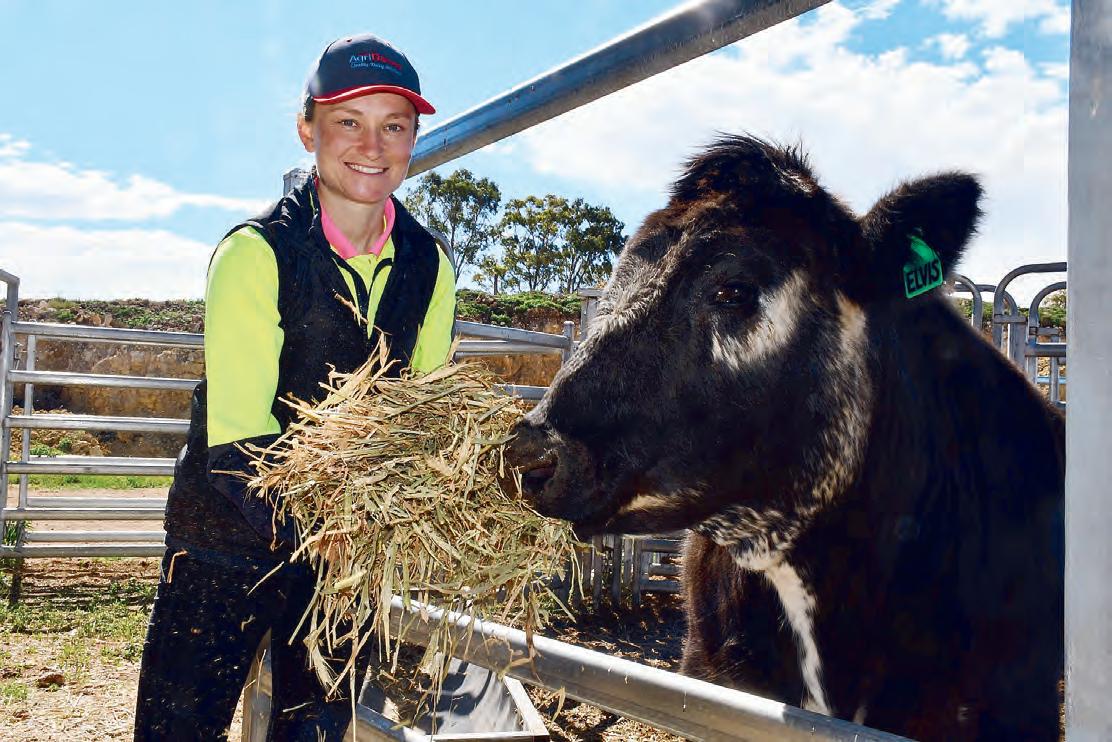
“ We want people to leave with a deeper appreciation of farming and a memorable experience they can talk about for years”
bining operational management with handson work and leadership.
“I thank my husband, Joel – I met him three years ago and we’ve been married nearly two years,” she said.
“It was when we got married that he’s like ‘you said when we started dating that you wanted to start an agri-tourism business, so what are you doing – get started.’
“He helped push it along which was really good and then Mum and Dad have been the best supporters, they’ve been all for everything that we’re doing.”
Since its launch, Dairy Adventures has grown steadily, with the combination of hands-on activities, educational experiences, and personal engagement helping it stand out in the regional tourism sector.
Visitors return time and again, drawn not only by the opportunity to experience farm





life but also by the genuine connection the Zankers create with every guest.
Recently, Dairy Adventures was named a finalist in the 2025 South Australian Tourism Awards, recognised for its innovative approach to agri-tourism.
“It’s good to be recognised and it means quite a lot to be a finalist,” Mrs Zanker said.
“If we were to win, it would be very surreal.
“We’re not going in with big heads, if we win, we win, if we don’t, we don’t, just being a finalist has been amazing.
“It’s mixed emotions that we were named a finalist and knowing that we’re up against the best in SA.”
While accolades are significant, Mrs Zanker said the primary focus remains on growing the business and providing meaningful experiences for visitors.
“I don’t know where Dairy Adventures will go completely, but I’m excited to see what’s going to happen,” she said.
“We’re constantly thinking of new ways to expand and improve what we offer, from new activities to more educational opportunities for everyone who comes to the farm.”
For the Zankers, the success of Dairy Adventures is about more than awards or recognition - it is about sharing a love of farming, creating memorable experiences, and inspiring a connection to rural life.
“To me and Joel, it means we’ve created something that people love,” she said.
“We feel blessed that we’re able to offer something that everyone seems to love and we can do what we love and get recognised by doing what we love.”
For more information, visit: https://www. dairyadventures.com.au/

























BY HARRY MEAD
DESPITE challenging conditions across the state over the past 18 months, stud stock breeders managed mostly positive returns across the 2025 ram sale season.
The season started slowly but optimism grew alongside the wool market as the heavens opened and strong meat prices sustained.
Those in the industry are ready to put the dry spell behind them, with optimism high for strong improvements in the 2026 season.
Elders SA stud stock marketing manager Tom Penna said the turning point for the season was the July rains, generating renewed confidence.
“Before that, the season was terrible, but the rain seemed to set things off with higher prices for mutton and lamb, coinciding with a lift in the wool market,” he said.
“Those four things accumulated and the selling period was a lot more buoyant than we thought it was going to be.
“We did have some tough early sales, which were small offerings in farming areas where people had gone out of sheep, mainly in the Murray Mallee.”
Mr Penna said the outlook for wool looked to be very good for southern areas, which were reliant on livestock.
“The demand for protein, being lamb and mutton, looks to be very high as well,” he said.
“Coming out of drought, lower lambing percentages and a big drop off in numbers, it’s going to be a supply issue that’s going to keep the prices very buoyant.”
Mr Penna said the bigger, more established Merino studs seemed to do better, benefitting from a solid, widespread client base.
“The other thing that helped those sales were the pastoral area clients who really provided a solid base in the sales,” he said.
“If we were in drought in the bush, we wouldn’t have had anywhere near the success of the sales.
“The British breeds began strongly and got better as the season went along, with people having confidence in the lamb products.
“The sales have been exceptionally good, because the concern all along has been the lack of ewe numbers.”
Mr Penna said the volume of rams sold was lower due to growers stepping away from sheep, following drought conditions.
“But those people who are in sheep are investing a little bit heavier in their rams, they’re buying a few less, but they’re paying a bit more to get that quality in,” he said.
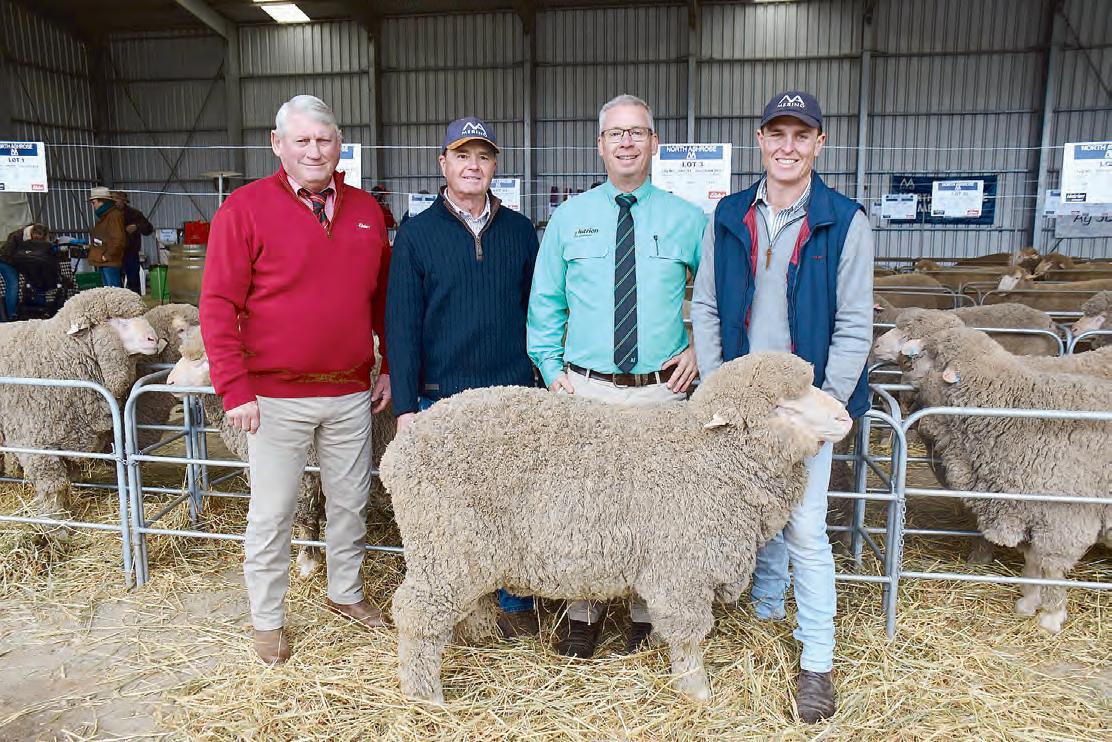
AWN sheep and wool specialist Jared Phillips agreed it was a slower start to the season, but the final result was not too far off a solid season.
“Everyone was a bit more conservative, particularly on the Merino side but even with cross-breds, though they held up a bit more due to meat prices,” he said.
“Overall there was some excellent value for buyers across the board, buyers were getting great genetics for a competitive price.”
Mr Phillips said success in the 2026 season would depend a lot on the coming six months, in particular the rainfall and availability of feed.
“I think we will see a return to an average year, then hopefully after we’re back to a positive year, but we’re still slaughtering more than we’re producing,” he said.
“We won’t see a massive increase in orders, so it’ll still be tough in terms of volume, but averages should hold.
“In the medium to long term with a lack of volume in the wool side it’s looking positive, especially for those who stayed in sheep.”
Mr Phillips said offerings were down across the state, with clearances holding steadily.

Cut down on your chemical costs with







A new, cost effective, versatile ag input, Pyro Ag® contains around 300 constituents, from acetic acid, methanol, phenol, ester, aminos, acetals, ketone, formic acid, growth hormones such as gibberelins, auxins, betaines, cytokinins and plant nutrients. All these elements work synergistically, for greater crop production.
“It’s been tough, and potentially will still be tough in the short term, but with the wool, lamb and mutton prices and a lack of volume it is generally looking like a reasonable time to be in sheep,” he said.
Quality Wool livestock agent Cody Jones said expectations across the state were probably subdued compared to last year, coming off the back of the uncertainty of last year’s season.
“We had expectations offerings would be back, and didn’t have any expectations for full clearances but most exceeded and a number of them even exceeded expectations for sale averages,” he said.
“For the studs we were involved in, most studs exceeded when it came to presentation and depth of catalogue.
“It’s a real credit to stud principals for not dropping any quality in their presentation.
“There’s been quite some progress from studs in terms of the ASBVs they’re providing, and those characteristics really shone through this season.”
Mr Jones said concern for supply, especially from volume buyers such as China, could drive a positive future.
“Overall, in the next six to 12 months at least, there’s a real positivity on the wool
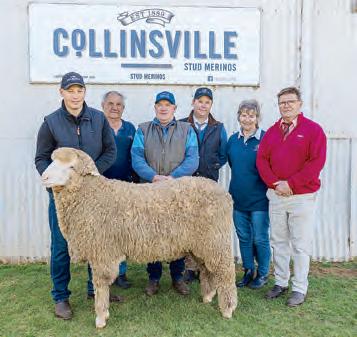
front,” he said. “Those who stayed in the industry will benefit, and now with restock prices, there’s a real premium for buying in breeding ewes.
“There’s a shifting mindset of growers looking to get back to a self replacing mob back into their enterprise.”











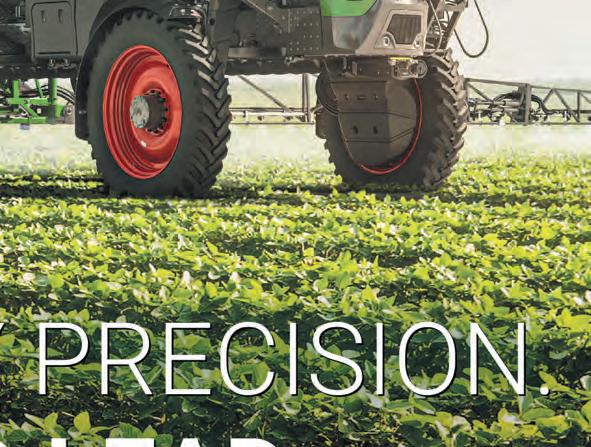
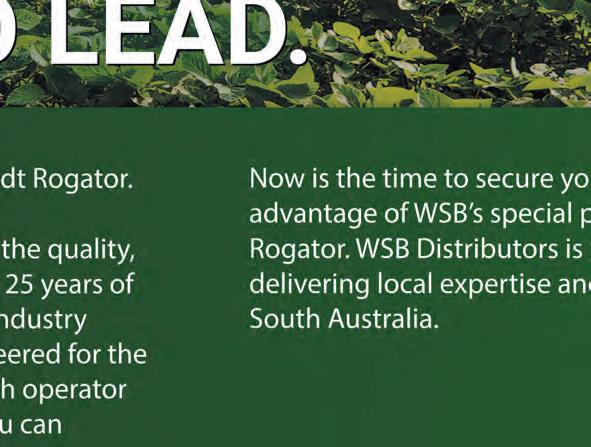

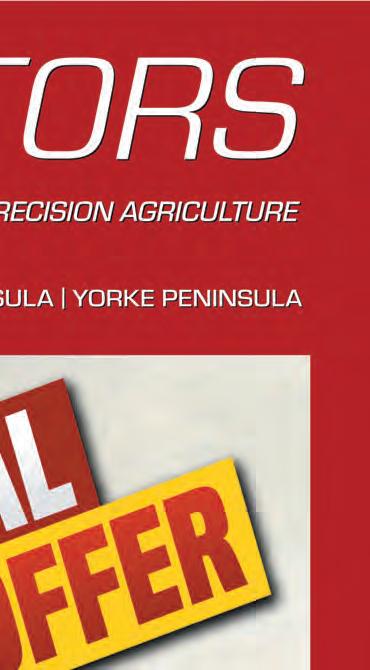

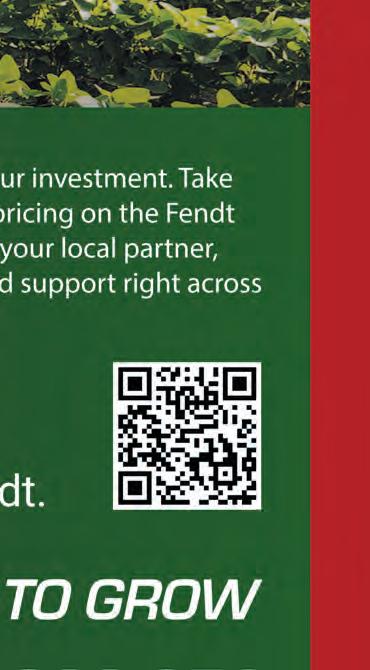

























BY JARRAD DELANEY
WITH the idea of paddock to plate, we may be aware of a fruit orchard, a veggie patch, a wheat field or livestock grazing in a paddock.
However, when it comes to mushrooms the start of the line involves a complex process of composting raw materials and growing in vertically stacked climate controlled rooms.some straw, some manure and many days of work and maintenance.
Pure Mushrooms produce more than 45 tonnes of mushrooms (1.2 million mushrooms) per week, employing more than 80 full time staff.
Mushroom varieties include White and Swiss brown in sizes ranging from small buttons to large opens, from its farm at Woodcroft, on the southeastern edge of the metropolitan area.
The mushrooms are distributed across Australia to major retailers, including Coles and Woolworths, independent retailers such as Foodland and Drakes as well as fruit and vegetable shops and food service industry.
However, to grow mushrooms you need nutrient-rich substrate to grow them.
This is where the Pure Compost facility at Port Wakefield comes into the picture.
Commissioned in 2018, the facility produces about 125 tonnes of ready to grow substrate out of the 200-tonne capacity to send to the growing facility in Woodcroft each week.
At Port Wakefield they start by making the substrate by composting raw materials sourced throughout the region.
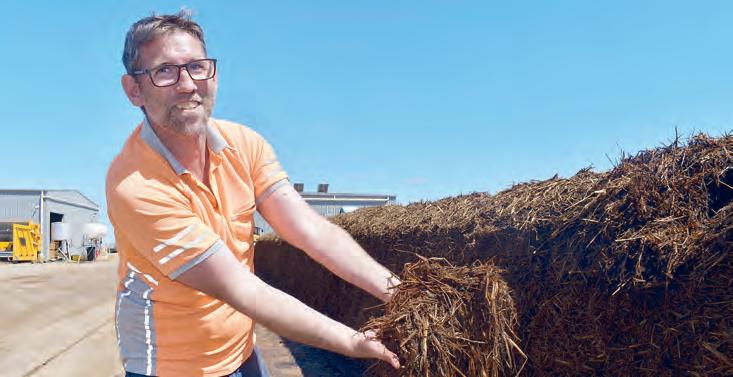
“
Last year we were forced to source a majority of our straw from Victoria, because there was very little available locally (in South Australia)
Pure Compost production manager Kevin Siebers said the main ingredients of the compost are wheat straw, which had usually been sourced from the local region, chicken manure sourced from the 13 farms in the surrounding area, and gypsum from Meningie. However, in recent times it has not been


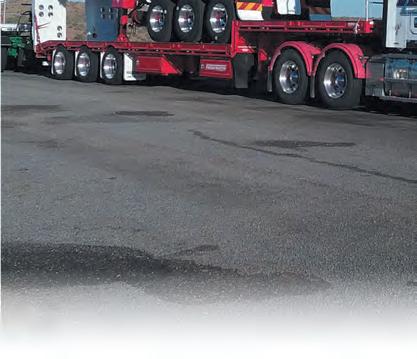
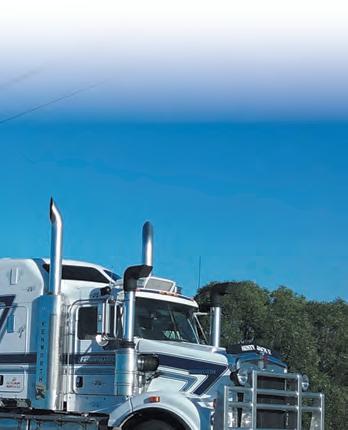
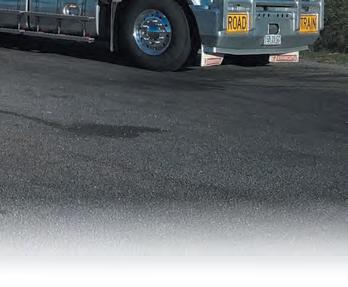
easy to source at least one of these ingredients.
“Last year we had a struggle to get wheat straw from surrounding farmers,” Mr Siebers said.
“We used to have straw from a one to oneand-a-half hour radius around us.
“Last year we were forced to source a majority of our straw from Victoria, because there was very little available locally (in South Australia).”
However for the team of seven working at the facility, the creation of compost is a labour intensive process, involving the operation of heavy and specialised equipment as well as the maintenance and observation of multiple batches at any one time.
Using recycled water stored in a lined dam onsite, dry straw bales are placed in the wetting down bay where water is irrigated for a week.
The wet bales are then moved to a bunker where they are aerated for a week from air generated by fans to encourage bale heating.
After that, the composting process begins in earnest, as the bales are broken apart, and other raw materials are added in conjunction with copious amounts of water to increase the moisture content to about 75 per cent.
These elements provide carbon, nitrogen ratio and moisture levels required to begin the composting process while gypsum is used for regulating the pH.
The raw materials are mixed together using a large compost turner which forms windrows, which are required to be mixed multiple times to ensure homogeneity of the raw materials.
The compost is relocated to enclosed bunkers where it is placed on high pressure aerated floor to ensure it remains completely aerobic at all times to encourage microbial activity for decomposition and to reduce odour.
CONTINUED PAGE 21




























































FROM PAGE 20
Each batch is transferred across three bunkers where continuous mixing occurs as well as the addition of water for rehydration.
Mr Siebers said there was careful maintenance involved, as a certain level of moisture and temperature is needed for producing disease free, high performing compost.
“Temperature is about 40 degrees (celsius) in the bales after wetting but climbs to 60 degrees after adding the other raw materials before we move it into the bunker and allow it to go up to 80 degrees,” he said.
“The different temperature ranges activate different organisms.
“These different organisms are required to create a selective growing medium for mushroom cultivation.”
After about 14 days in the bunkers, the compost is moved with front end loaders and specialised equipment to the 40-metre stainless steel insulated tunnels where it is located on a plenum floor (ventilated floor) for ‘pasteurisation’
All of the compost mass is brought to within 1.5 degrees celcius by the circulation of about 45,000m3 of air per hour and is raised to 58 using specialised climate control units and software developed in the Netherlands.
The process is used to eliminate competitor moulds and pathogens which may be present which would cause disease risk when growing mushrooms.
The substrate is later cooled to 25 degrees where mushroom spawn produced in Sydney is carefully added to inoculate the compost.


Mushroom growing substrate is produced in three distinct phases known in the industry simply as phase one, two and three.
Phase one in initial mix to pasteurisation normally takes three weeks, phase two is the pasteurised compost which is inoculated with mushroom spawn which is a one-week process and phase three is the substrate, where the spawn has fully colonised the compost, which takes 2-3 weeks to occur.
Mr Siebers said the work at the compound was not what many people would think about when they saw mushrooms at the supermarket or at the fruit and veg shop, but educating people of the production process could create more appreciation for the
effort that goes into producing them.
Producing phase one compost can be a dirty job, but it is required in order to create a nutritious food source for the growth of healthy tasty mushrooms.
“Even if people have been to a mushroom farm, they would still not understand the other half of what is required to cultivate mushrooms which starts at phase one,” he said.
“There’s a lot of work in the compost process, and each week we handle multiple batches.”
Certainly, even with mushroom production, more of an effort is being made to inform on the entire process, with organ-
isations such as the Australian Mushroom Growers Association and Hort Innovation Australia providing resources and information campaigns about everything from start to finish.
Next time you add mushrooms to your salad, on top of your pizza or to your pasta or stir fry dish, think of all the hard work that goes into bringing them to your kitchen counter, including the people who get their hands dirty in more ways than one.
Find out more about how mushrooms are produced at australianmushroomgrowers. com.au, and for more information on Pure Mushrooms visit www.puremushrooms. com.au
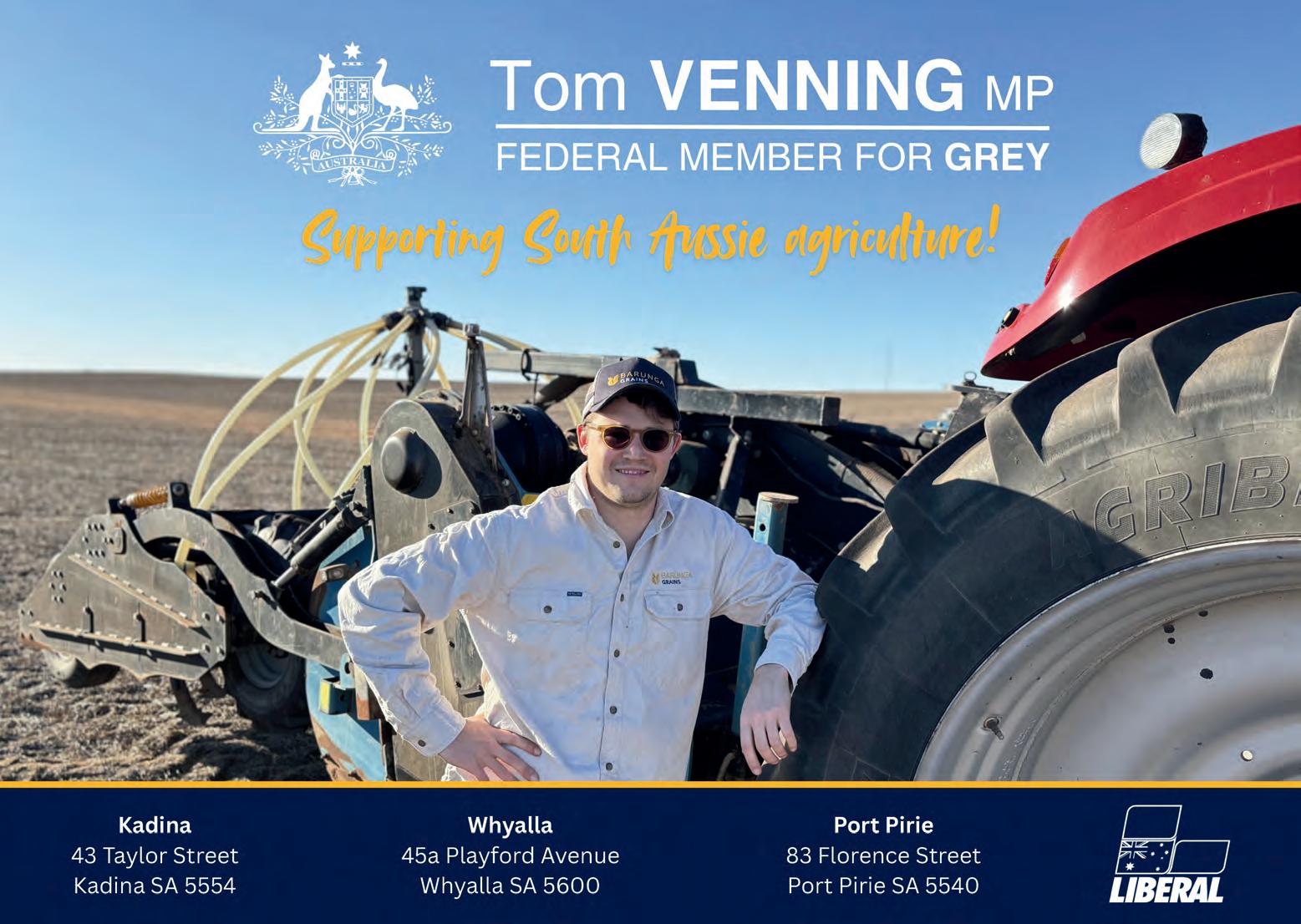
























BY HARRY MEAD
GEORGE Seppelt was one of nine finalists for this year’s South Australian Rural Ambassador of the Year title.
The Jamestown local, who proudly represented the Northern Agricultural Shows Association as its ambassador, claimed the crown at the state final.
Mr Seppelt was proclaimed the winner at the SA Country Shows Annual Awards Dinner on September 2, recognising his outstanding contribution to the show movement and his regional community.
The title marks his second state-level recognition, after being named a Young Rural Ambassador state finalist in 2018.
His connection to the Jamestown Show has been inspired by his father’s service as president of Jamestown Show Society.
From an early age, Mr Seppelt was immersed in the show community, later taking on roles ranging from running a petting zoo to serving as media and marketing secretary, announcer, and committee member.
At a state level, he has also contributed through the South Australian Agricultural Shows Next Generation Group, helping deliver initiatives such as the Young Farmers Challenge at the Royal Adelaide Show.
Beyond his show commitments, Mr Seppelt brings his passion for aviation to the agricultural sector.
As one of Australia’s youngest flight instructors and a consultant in aviation, he has worked with farmers to integrate aviation into their operations, delivering innovation and practical benefits to rural communities.
Mr Seppelt said it was a highly unexpected accolade and he was quite emotional after the reveal.
“I actually spent the whole acceptance speech crying, which showed how much I care about the award, but it also makes me look like a bit of a sook!” he said.
“I was so confident that I wasn’t going to win after seeing the other finalists, that I hadn’t actually booked the rest of the week off work, as the winner stays down for the remainder of the show.
“That was a very quick phone call to work to say I’ve won, I won’t be coming back to work this week.”
Mr Seppelt said he had met some inspiring people from various shows, which was a key message he was championing.
“I have only come across friendly people at country shows, I’m yet to meet a nasty person,” he said.
“We just get along so well, I feel it is a really inviting environment to be around.
“There is a role for everyone in ag shows,
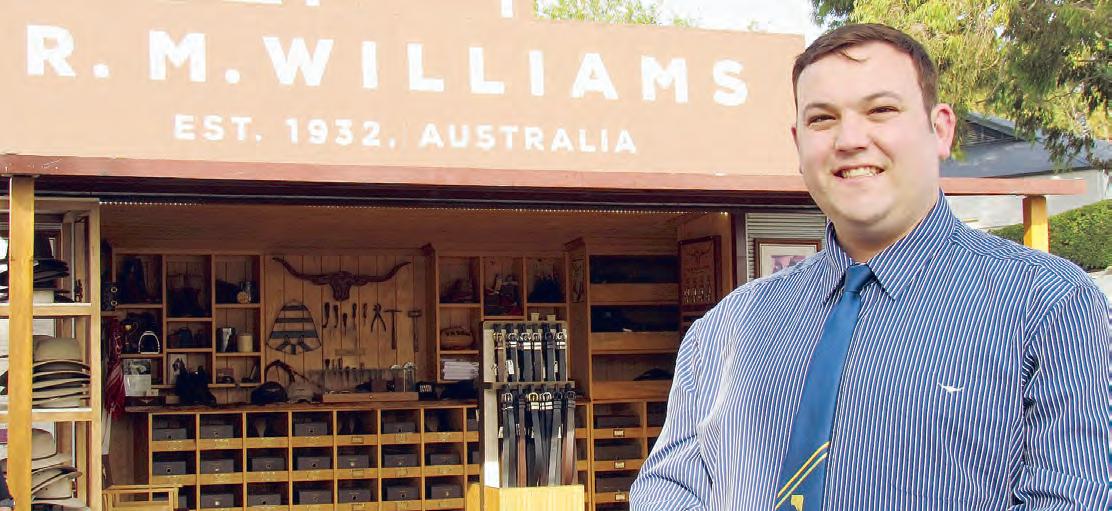
“
There is a role for everyone in ag shows, whether it be website design, score recording, stewarding, or judging livestock, there’s really a job for anyone.”
whether it be website design, score recording, stewarding, or judging livestock, there’s really a job for anyone.
“The easiest way to get involved is to rock up to your show and say, hey I’m here.”
The Seppelt family has had a lifelong involvement in country shows - the late Simon Seppelt being a legend in country show circles with his son George exhibiting since his early childhood.
“The award is an absolute culmination of that passion, our whole family have gone through shows and been involved,” he said.
“I first showed a chook when I was four or five-years-old, and now we’re here, I’ve been involved ever since.”
Mr Seppelt will have a busy schedule, visiting Cape Town, South Africa in November for the Royal Agricultural Societies of the Commonwealth Conference.
Following his trip abroad, he will head to Brisbane for the national competition at the Ekka Royal Queensland Show next year.
Mr Seppelt was grateful for the support he has had along the way, and iterated how influential it had been.
“The award is not possible without the valued sponsors, and without the Jamestown

Show supporting me through the award, I would never have been able to get to a national level,” he said.
Caitlin Marshall, representing the Southern Country Shows Association and the Coonalpyn Show, and Emma Gallagher of the Naracoorte Show have earned first and second runner-up in the Rural Ambassador Awards.
Aimed at 20 to 30-year-olds, the awards recognise young people who make a meaningful impact in regional communities.
The 2025 Rural Ambassador Award state finalists were:
• Caitlin Marshall: Southern Country Shows Association & Coonalpyn Show – Southern Ashlee Allegretto: Northern Agricultural Shows Association – Mid North Emma Gallagher: Naracoorte Show –South East
• George Seppelt: Jamestown Show & Northern Agricultural Shows Association – Northern
• Jacqui Palk: Central Districts Show Association (CDSA) – Central Jenevieve Heinrich: Copper Coast Show Society & Yorke Peninsula Show Societies
– Copper Coast / Yorke Peninsula
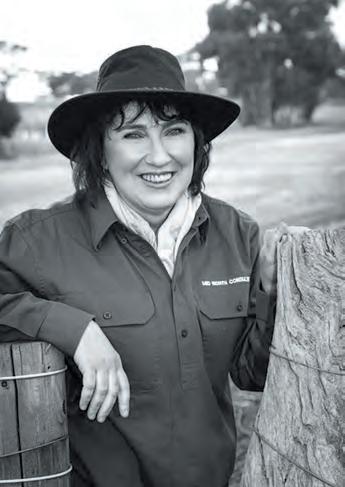
• Rebecca Clifford: Kimba Show Committee
– Eyre Peninsula
Shona Laucke: Border Shows Association –South East
Thomas Wurfel: Pinnaroo Agricultural Society – Mallee / South East
SA Country Shows youth competition coordinator Jacqueline Francis said the quality of finalists was very high for 2025.
“Their collective presence not only elevated the standard of competition - posing a significant challenge for our judging panel - but also fostered invaluable networking opportunities among emerging rural leaders,” she said.
“This exceptional group of ambassadors exemplifies dedication, vision, and a deep commitment to the future of South Australian country shows.”
Sponsored by PIRSA, the program offers participants a platform to share their experiences, build skills, and deepen connections with South Australia’s primary industries.
Finalists were interviewed about their involvement in local shows, community activities, goals, and interests, with judges considering their presentation, enthusiasm, knowledge of rural life, and commitment to the agricultural show movement.
























BY BEVAN JONES
WHEN most people think of climate solutions in livestock, ideas such as improved feed, better farm management, or capturing methane from manure usually dominate the conversation.
But South Australian business CH4 Global is rewriting the script.
In 2023, it introduced “Methane Tamer” , its revolutionary methane-reducing feed supplement formulation targeted for beef feedlot cattle.
The company has put itself firmly on the global stage with the launch in January this year of the world’s first pond based, commercial scale EcoPark at Louth Bay in the Eyre Peninsula - dedicated to growing Asparagopsis, a native seaweed found in South Australian and New Zealand waters.
This isn’t just any seaweed. Studies have revealed that it can cut methane emissions from cattle by up to a staggering 90 per cent.
The success of the groundbreaking innovation has been nothing short of remarkable.
CH4 Global has been featured in the New York Times and Time Magazine and earlier this year was recognised as a top 50 global leader in sustainable development by CNBC.
The business has further cemented its position as a leader in climate-smart agriculture and for their efforts to reduce methane emissions in the agriculture sector.
US-based agriculture publication Agri Business Review Magazine named CH4 Global as the Greenhouse Gas Mitigation Solutions Company of the Year for 2025 and in August, CH4 Global was awarded “International Ag Tech Startup of the Year” at the fifth annual AgTech Breakthrough Awards program conducted by AgTech Breakthrough.
AgTech Breakthrough is a leading international market intelligence that recognises the top companies, technologies and products in the global agricultural and food technology markets.
CH4 Global began in 2018 when it was founded by South Australian Steve Meller, with the mission to create methane-reducing products from seaweed for the livestock industry.
CH4 Global head of external relations Adam Main said the company was “humbled” by winning the award.
“To get validation for six years of really hard work developing a disruptive climate change technology is just so rewarding and it shows an understanding and appreciation of the journey that we are on,” Mr Main said.
“We have been pretty strategic in putting
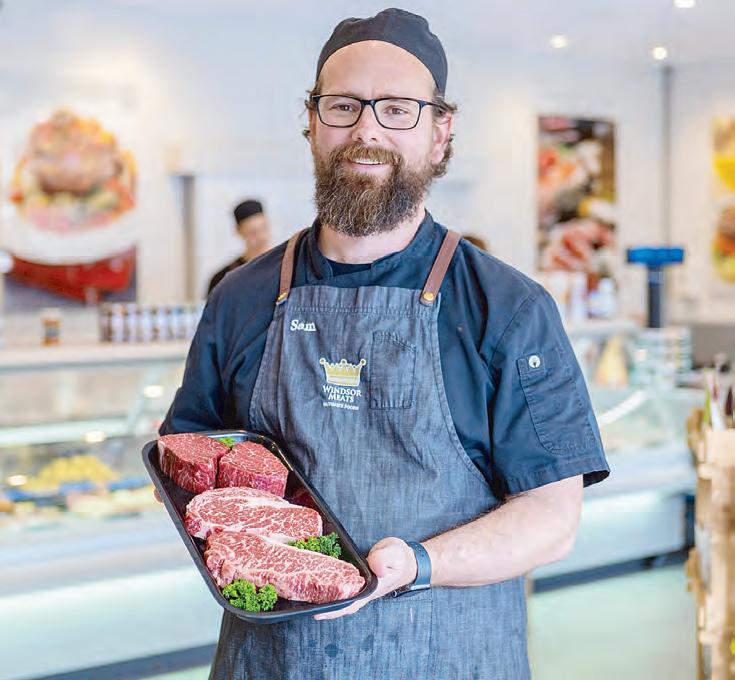
ourselves out there for recognition and any recognition we like but to get recognition on this scale is humbling and just phenomenal.
“It was definitely surprising and what better way to celebrate than with some low methane meat on the barbecue and a couple of beers.”
Mr Main paid credit to the people behind the idea of feeding seaweed to cattle.
“Credit to the science people behind this and the dedication of the CSIRO and Dr Robert Kinley who had a vision to trial and test Australia’s seaweed through early research and discovery to see if there was a benefit for animals,” he said
“They developed it and we came in and agreed and took it from science to commercial reality.
“We are supportive of the CSIRO and to understand what we can do with this red seaweed and the massive impact across the globe that it can have.”
He said success had come from staying true to the original intent of science, which was to feed cows whole seaweed with no synthetics, chemicals or additives which was great for the environment.
Windsor Meats, which is located in Malvern, five kilometres out of the Adelaide CBD, has recently become the first retailer in the world to stock low methane, “guilt free” beef as part of a collaboration with CH4 Global.
Windsor Meats owner Sam Burt said its reputation was what led to the collaboration between the two companies and they were delighted to be approached.
“They approached us looking for other businesses that might be interested in stocking their product and offering it to consumers,” Mr Burt said.
“They liked what they saw from us and we have built a reputation of not just a retail butcher shop, but also as an influencer on an overall industry as well.
“Windsor Meats is really excited to be working with CH4 Global and incredibly proud to be the first butcher shop in the world to be able to offer our customers a much more sustainable meat product.
“The timing is perfect as well as consumers are becoming far more curious about where the food is coming from and focused on about sustainability.”
Mr Burt said the store had received a positive response from customers with regards to the methane tamed beef.
“From the moment we began selling wagyu fed with Methane Tamer for 400 days, we’ve been overwhelmed by a positive public keen to know more and to try what we know is the first environmentally-friendly beef,” he said.
“Our website traffic increased astronomically, our foot traffic from new and existing clients grew and we’ve been able to have conversations with our customers about why we’re selling wagyu that has been methanetamed.
“People are coming back multiple times to buy more CH4 Global beef, and they’ve said it’s because we’re giving them a sustainable choice.
“Climate change can be a difficult beast to tame as a butcher, and over the years we’ve adapted to compostable and more environmentally-friendly packaging, which benefits our business and our customers.
“They’re seeing the opportunity to buy better beef as a positive.
“Being able to sell a new product is good for our industry as well.
“Other butchers want to know if it’s selling [yes it is, and well!], whether it tastes any different [it doesn’t, and we can guarantee the wagyu is amazing], and whether it’s worth paying a small premium to be able to make a difference [our consumers think so].
“We all need to diversify to stay relevant, and we’re changing while making a difference for the climate.”
Mr Burt said wagyu beef was not for everyone due to its high price point which made him more excited about how customers would respond when seaweed fed angus beef begins to sell to the public.
“Wagyu beef is not for everyone, it has a much higher price point than a standard cut of beef but for what it is it fits in quite well quite comparable to other wagyu available,” he said.
“Since its inception it has been quite consistent with what we have been selling which has been really good and we are excited about what the future brings with angus beef that is being processed currently.
“It opens us up to a broader spectrum of consumers and as it is a mid to higher tier of quality without the high price point of wagyu it gives our customers the chance to give it a go.
“We are for reducing methane throughout the cow’s life so it has no effect on flavour and texture.”
WITH a 90-acre campus as their backyard, boarders at St Peter’s College enjoy a spacious and inspiring environment - one where they can explore their passions, feel a sense of belonging, have the courage to be themselves and make the most of every opportunity.
At the heart of this experience is the School and Allen Boarding House.
More than just a place to live, it is the hub of the boarding community, where each boy is personally known and individually valued.
Boarding at St Peter’s College is a true partnership between students, families, teachers and boarding staff, creating an exceptional environment for growth and learning.
The boarding team is dedicated to fostering a culture of inclusivity and care, prioritising kindness, connection and a true
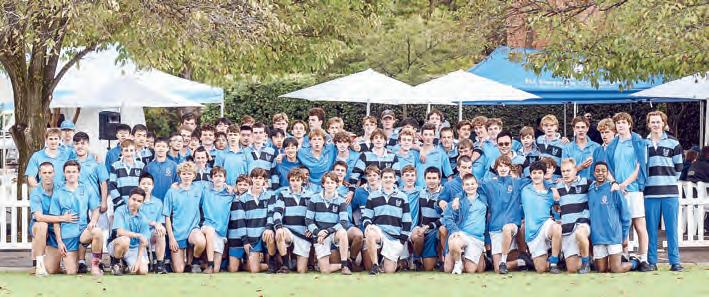
sense of family.
This approach ensures every boarder feels supported to develop independence, resilience and lifelong friendships.
House Captain Harry Clark, who grew up in Naracoorte, speaks highly of the
bonds forged within this community of boys from rural, regional, interstate and international backgrounds.
“The School and Allen House culture thrives on a sense of community and brotherhood,” he said.
“I am greatly appreciative of the friendships and connections I’ve formed, and I value the role the boarding house has played in supporting my personal growth at SPSC.”
The school acknowledges the commitment families make in choosing boarding and works hard to ensure parents feel connected and reassured that their sons’ wellbeing and development are always the top priority.
With strong support networks, a welcoming environment and access to outstanding academic and co-curricular opportunities, boarding at St Peter’s College provides the foundation for lifelong learning and success.
To find out more about boarding at St Peter’s College or to book a school tour, visit the school’s website or contact Amanda Bruce, Director of Enrolments, on 8404 0400 or enrolments@stpeters.sa.edu.au



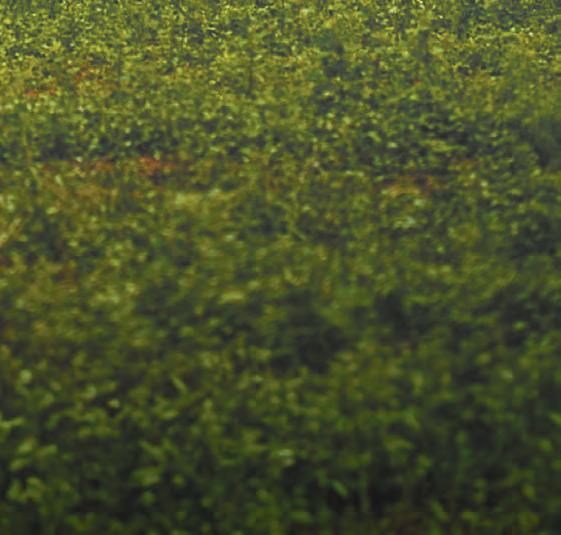

























BY LACHLAN SMITH
AS South Australia’s fire season approaches, the Country Fire Service (CFS) is urging regional and rural residents to develop a bushfire action plan to ensure the safety of their families and properties.
Each household is encouraged to create a Bushfire Survival Plan, with every family member involved in both the preparation and execution.
Region 4 CFS regional commander Sindy McCourt said the plan should cover key decisions, including where the family will go if a fire threatens their home, when they will leave, and what they will take with them.
“Families can start preparing their property right now by cleaning their gutters and mowing their lawns, removing any flammable materials including wood piles, debris and fallen branches nearby,” Ms McCourt said.
“They need to assess if their home is defendable.
“Do they have enough clear space around them?
“Do they have adequate water if the power goes out?
“People should ask themselves if they know how to block their gutters and fill them with water if such a need arises.”
She stressed the significance of emberproofing homes, as sparks and embers often cause houses to ignite during bushfires.
“It doesn’t take long to go through the document as a step-by-step guide for a plan
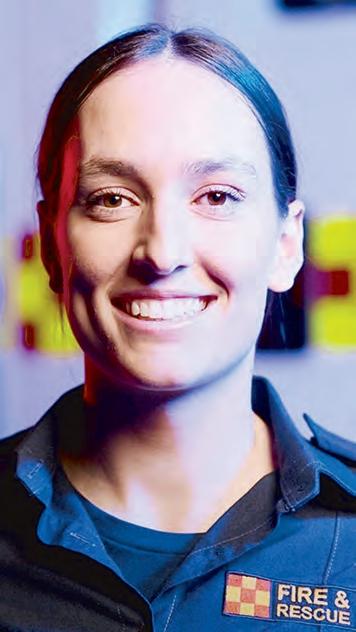
on the CFS website but it also prompts you to think about the areas you should be considering or the areas you need to address before you make the decision to leave or stay and
SINCE 2019, Regional Workplace Safety (RWS) has been empowering South Australian businesses to achieve realworld safety and compliance.
Founded and directed by Shay and Melissa Clifford, RWS delivers practical, cost-effective health, safety, environment, and quality (HSEQ) solutions that make sense in the field, not just on paper.
From its base in Clare, RWS now supports more than 250 clients across South Australia and interstate.
Their services span civil construction, telecommunications, transport, agriculture, and commercial building, providing everything from ISO-aligned management systems and safety documentation to on-site safety advisors and audit preparation.
RWS’ flexible subscription packages start from $250 per month, offering scalable safety support for every business size.
For high-risk or infrastructure projects, RWS provides qualified on-demand safety advisors from just $73 per hour, delivering compliance oversight, toolbox facilitation, and incident management tailored to project needs.
The company has also expanded into traffic guidance scheme design and auditing, further enhancing its capability to support DIT and local government works where road and public interface management are critical.
As a family-owned and operated business, RWS stands apart through its integrity, accountability, and commitment to client value.
defend,” Ms McCourt said.
“Within your plan, it will talk about areas like whether you prepare to leave early or whether you’ll stay and defend.”
The CFS encourages residents to practice their Bushfire Survival Plan and consider working with their community to develop a bushfire safe group.
“If there is more than one of you wishing to participate in this, you can build a group and CFS can send somebody over to help you work through those areas,” Ms McCourt said.
“We run many community programs for preparedness.”
Residents can also stay informed daily through the Warnings and Restrictions section of the CFS website, as well as the ABC emergency broadcast network, and CFS social media channels.
“Warnings are based on the Australian Fire Danger Ratings System and there are different levels of heightened alertness that can guide how you are going to behave on any particular day,” Ms McCourt said.
Extreme or catastrophic fire risk days are especially dangerous.
“When you come into an extreme day, the fire is going to move very fast,” Ms McCourt warned.
“There probably will not be time to make decisions about packing your bags and leaving – this is where planning is important.”
Families are advised to leave home early for safer refuge on such days.
The CFS website also features maps outlining Bushfire Safer Places and Bushfire Last
Resort Refuges, giving people guidance on safe locations in their area.
“If you look at the Bushfire Safer Place page on the CFS website and search for the town closest to you, it will highlight locations to use if you need to leave early,” Ms McCourt said.
“It doesn’t mean there will be someone there to look after you, it just means that within that area, you would be safe if you were in there.
“Meanwhile, Bushfire Last Resort Refuges are a space or building which you could go to during a bushfire in your area.
“It is an area that may provide a minimum, temporary level of protection from the immediate life-threatening effects of radiant heat and direct flame contact in a bushfire.”
Residents can also download the Alert SA app, which provides notifications for all types of emergencies. “Listening to ABC Radio is paramount during any emergency, especially during a fire,” Ms McCourt said.
“They are partners in ensuring that we get the right community messaging out to the people that need to know and then the website.”
South Australian districts have various start and finish dates for the bushfire season, and Ms McCourt urges residents to check the dates each year.
“People need to look at this each year and validate that they have got the right dates for their area,” she said.
For more information on bushfire preparedness visit the CFS website at cfs.sa.gov. au or contact your local CFS Region office.

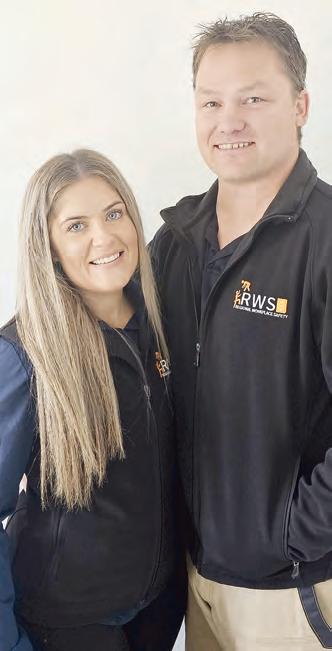
Tractors and other equipment can come into contact with electricity infrastructure. (Supplied)
Its mission remains clear, to make safety accessible, achievable, and grounded in common sense.
With a reputation built on trust and results, RWS continues to set the benchmark for regional safety excellence.
“Safety
Regional Workplace Safety Pty Ltd (RWS) was established in 2019 in the aim of providing much needed WHS support to regional businesses. It has grown substantially and continues to do so as word of mouth spreads about our common sense, cost effective advisory services. We have over 20 years’ experience in agriculture civil construction, building, engineering, work at heights, traffic control, and general safety management.
RWS offer auditing services, documentation building and editing, facilitation of toolbox meetings, various WHS training sessions, online reporting systems, incident management and reporting, injury return to work, mental health first aid support, drug and alcohol testing, test and tag of 240v items and much more…
We assist organisations in becoming ISO certified and improving all levels of understanding across industry. Safety and quality work hand in hand and it’s important to understand how effective management of these critical areas can develop the right practices and culture.
We currently operate out of Clare and Adelaide in South Australia.

























BY MAHALA GAINER
AS the climate shifts across Australia, a project started in a town around 50km north of Adelaide is drawing on the deep ecological knowledge of First Nations Peoples to transform sheep farming for a hotter, drier future.
Kicking off at Roseworthy SA Drought Hub, the drought and climate resilient sheep farming systems project aims to help sheep adapt to dry conditions by developing drought-resistant feed, creating cooler microclimates and improving land health.
Building on previous research by The University of Adelaide, the new project is being led by the university in partnership with Murdoch University while drawing knowledge from Traditional Land Owners.
Red Centre Enterprises, a South Australian owned and operated First Nations business, has partnered with SA Drought Hub on the sheep drought resilience project, offering a plethora of knowledge from Traditional Owners on native plants, ecosystems and land care practices.
“This sharing of knowledge, operating under best practice frameworks, is an important key to building a truly resilient and sustainable agricultural model nationally and for our regions,” a spokesperson for Red Centre Enterprises said.
The company is helping design feed base systems using native plants, with consideration for medicinal benefits and planting groups.
Only in the early stages, the five-and-ahalf-year-long project will soon expand to additional research sites across Australia.
The sites will include new plantings to create microclimates and tailored systems for pregnant and lactating ewes.
SA Drought Hub’s knowledge broker Tony Randall said First Nations insight is vital to the project’s goals.
“An integral component of this project involves system co-designed with farmers, grower groups, industry stakeholders as well as working with First Nations Peoples to incorporate their knowledge of plants and the ecosystem into the design of the feed base, with the aim of improving the system as a whole to be more productive, profitable, and drought resilient,” he said.
Engaging with Elders, community mem-

“
We are sharing knowledge on how to see the land not as a resource to be maximized, but as a living system to be nurtured
bers, and knowledge holders, Red Centre Enterprises contributes knowledge to the sheep project on the medicinal properties of plants, how different species benefit from growing together, and the nutritional value of diverse food mixes - insights that could also benefit sheep and other livestock.
“First Nations knowledge of the medicinal benefits of plants will be included in this plant design, alongside the use of plant families or communities and orientation of plants to provide optimal shade and shelter,” Mr Randall said.
After parts of Australia had their driest year on record in 2024, the first National Climate Risk Assessment was released in September, revealing much of the country is likely to spend more time in drought, with southern and eastern Australia likely to be hit the hardest.
With droughts becoming more common, the SA Drought Hub and seven other sister hubs that opened their doors in 2021, are delivering knowledge, innovation and new practices to help farmers adapt.
Although the research is based at Roseworthy, the project has two other sites set up in South Australia, one in the Mallee and further north in the state, to test the research in low rainfall regions.
Looking across the country, the project will be setting up additional sites across Australia in low rainfall areas including Victoria, Central Western New South Wales and the Western Australian wheat belt.
Each site will be adapted from the model in Roseworthy to suit the conditions of the region, with around a dozen locations set to be involved.
First Nations Advisory Group chair Ian
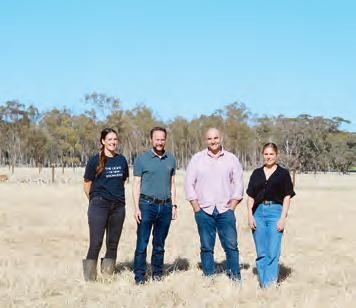
Hamm visited the Roseworthy site earlier this year during the 2025 National Drought Forum.
“One of the interesting parts of it was the engagement of some Traditional Owners and the use of native plants in helping livestock respond to heat stress,” Mr Hamm said.
“One example was there were some native grasses in the area that support sheep, in particular with lactation issues when they’re under heat stress.
“It means that ewes can still feed their lambs.”
Funded through the federal government’s Department of Agriculture Fisheries and Forestry Future Drought Fund, the project aims to address concerns surrounding a decrease in the profitability and fertility of sheep due to climate change.
The Red Centre Enterprises spokesperson said the partnership with the hub was more than just innovation in the agriculture sector, but also an example of how ancient wisdom could “heal the land, nourish our animals, and enrich our collective future”
“Integrating Australia First Peoples wisdom into modern agriculture projects is multifaceted, rooted in sustainability, biodiversity, and a profound understanding of ecosystems, just to name a few,” they said.
“We are sharing knowledge on how to see the land not as a resource to be maximized, but as a living system to be nurtured.”
WHEN Riverland student Cameron Dixon moved from Berri to Adelaide to begin his university journey, he was looking for more than just a place to live; he wanted a community.
At St Mark’s College, he found exactly that.
A proud Glossop High School graduate, Cameron had already made his mark back home, helping to livestream the local footy competition, a contribution that earned him the 2019 SANFL Award for Best Community Football Coverage.
After finishing school in 2021 and taking a gap year, he followed friends and cousins to St Mark’s College.
For Cameron, the strong sense of community at St Mark’s echoes the support and connection he had always known in the Riverland.
Since arriving, Cameron has thrown himself into college life.
From serving on the Charitable Committee in his first year to becoming film maker and arts & cultural officer in his second, he has embraced opportunities for growth and leadership.

In 2025, as St Mark’s celebrates its 100th anniversary, Cameron proudly leads as College Club president, and he will be returning in 2026 as Assistant Dean.
“It’s a real privilege to give back to a place that’s given me so much,” Cameron reflects.
“Representing the Riverland as president, working alongside such talented people, and guiding the next generation of leaders has been incredibly rewarding.”
One of his highlights has been speaking before more than 1,000 people at the College’s Centenary Gala Dinner, where generations of collegians came together to celebrate a century of community, learning, and opportunity.
Although the research is based at Roseworthy, the project has two other sites set up in South Australia, one in the Mallee and one further north in the state, to test the research in low rainfall regions.
He’s also delighted that in 2025, his younger brother Matthew has joined him at the college.
“St Mark’s has been a home away from home; a place where you can grow, lead, and be supported,” Cameron said.
For 100 years, St Mark’s has provided students like Cameron with more than accommodation; it has offered a supportive environment where young people can live, learn, and thrive.
With over 250 students from across Australia and the world, the College is nestled
in Adelaide’s beautiful parklands, just a short walk from university campuses, public transport, and the vibrant cultural life of the city.
Students enjoy private furnished rooms, all meals, utilities, and outstanding facilities, including a library, gym, and study spaces.
Beyond this, they benefit from academic mentoring through more than 50 tutors and workshops, a dedicated wellbeing team, and a thriving calendar of sporting, artistic, cultural, and social activities.
Each year, St Mark’s awards more than $500,000 in scholarships, prizes, bursaries, and other forms of financial support, ensuring students from all backgrounds can seize the opportunities on offer.
As the college looks to its next century, applications for 2026 are now open.
Spaces are limited, and students with strong academic goals and a passion for leadership, sport, culture, or the arts are encouraged to apply.
To learn more and begin your application, visit the St Mark’s College website today.
























A state-of-the-art facility sitting just outside of Two Wells in the state’s north is operational again after a tumultuous period.
Produce juggernaut Perfection Fresh had its Korunye site all but shut down last year with the arrival of Tomato Brown Rugose Fruit Virus (ToBRFV).
The State Government quarantined the glasshouse after the virus was detected in August 2024, with hundreds of jobs immediately negatively impacted.
Now, after an extensive period involving hundreds of thousands of tests, the state is free of the virus.
Perfection Fresh has contributed a large amount of those tests, with group chief executive Rod Quin proud of the position the company now finds itself in.
“We have undertaken more than 100,000 tests on our property and no virus has been detected, we are confident we stand as the cleanest production site in the country,” Mr Quin said.
“This is testament to the world-class biosecurity and control measures we have in place.”
Mr Quin stepped into the role midway through this year, taking over from Michael Simonetta who announced his intentions to step down early in 2024.
At the time of the quarantine, Mr Simonetta said while Perfection Fresh appreciated the State Government’s effort “the lockdown of our operations is entirely unnecessary”
Now about a year on, Mr Quin has expressed his thanks for the actions of the state.
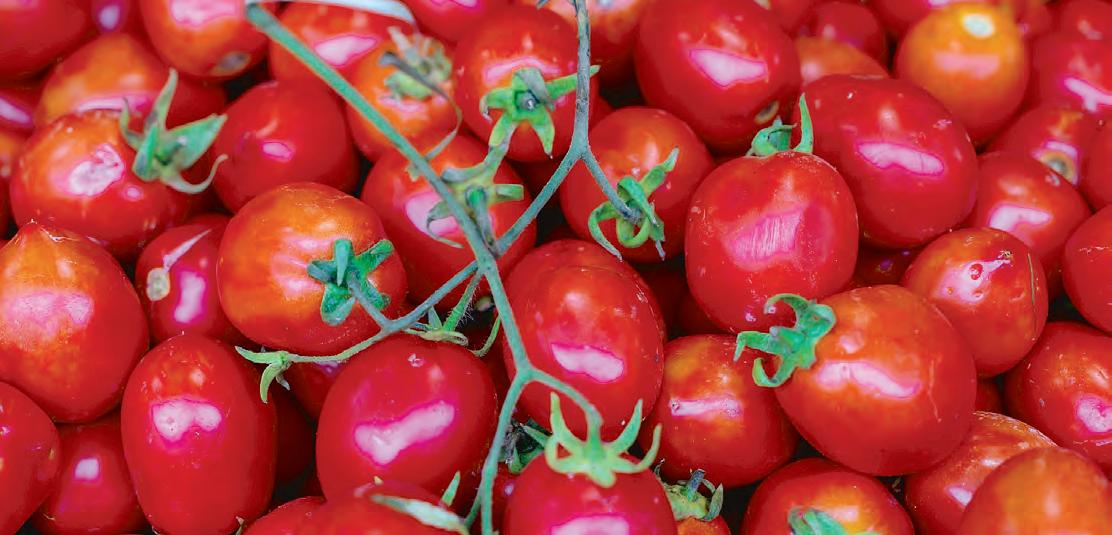
“Thank you to Minister [Clare] Scriven, her team, PIRSA, and everyone who helped get us to this point,” he said.
“This declaration will not only help restore important market access for South Australian growers, but also strengthens supply chains, supports jobs across regional communities - including around 100 direct roles at our Two Wells site and many more indirectly - and ensures consumers can en-
joy the premium quality fruit and vegetables they know and expect from South Australia.”
Ms Scriven has been at the forefront of the effort to control the virus and was pleased to announce the state is now in the clear.
“This is fantastic news for South Australia’s tomato growers, supporting them to be able to trade more freely interstate without any restrictions relating to this virus,” she said.
“Our growers, industry groups and PIRSA staff have worked tirelessly together to manage this virus, and this declaration is a direct outcome of that commitment.
“This is a great example of how rigorous biosecurity measures not only protect our industries but also support trade and market access, ensuring South Australia’s reputation as a clean, green, premium producer remains strong.”
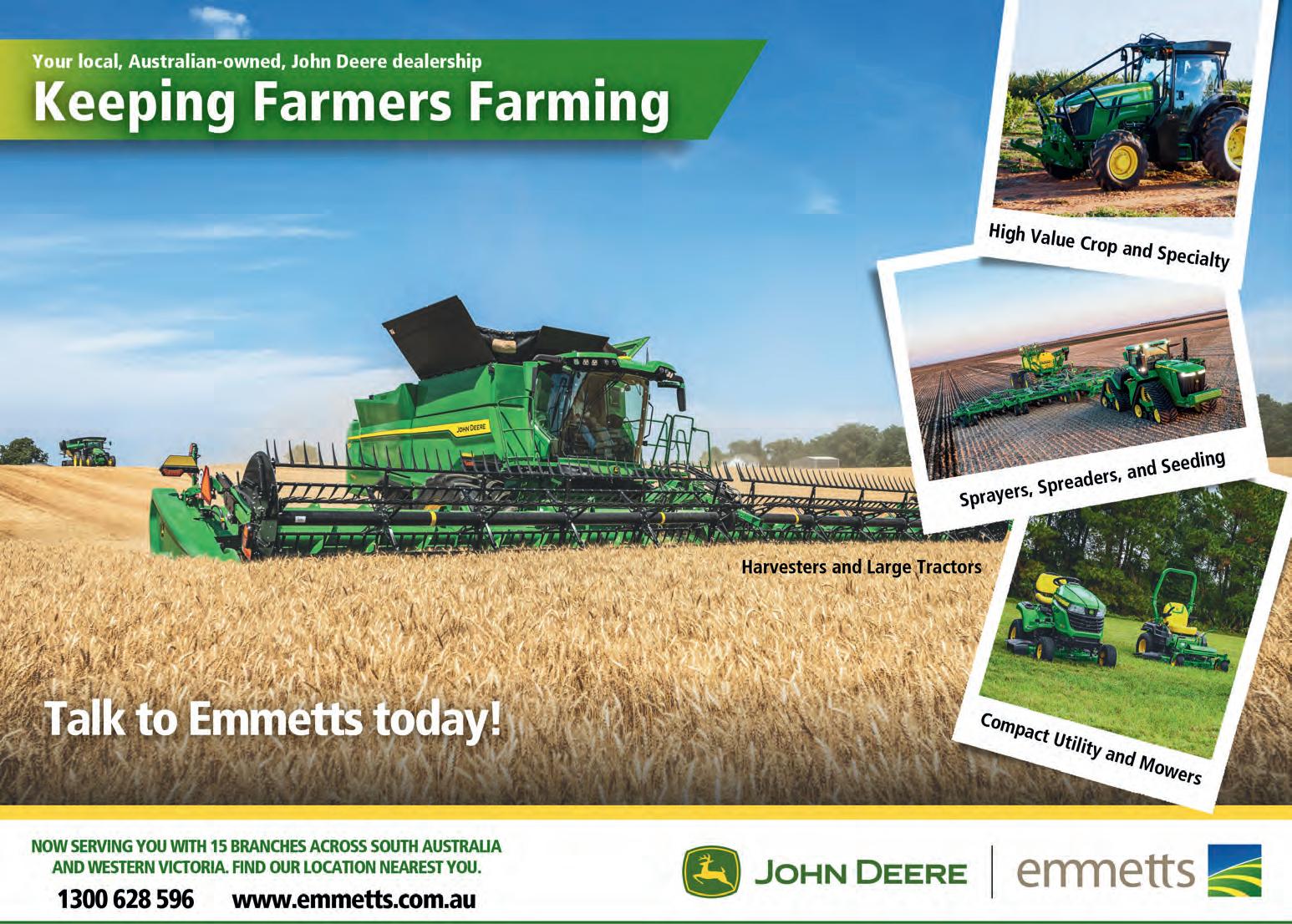
























Regional South Australia was well represented at the recent Royal Adelaide Show as SA Today journalist SOPHIE CONLON caught up with some familiar faces.
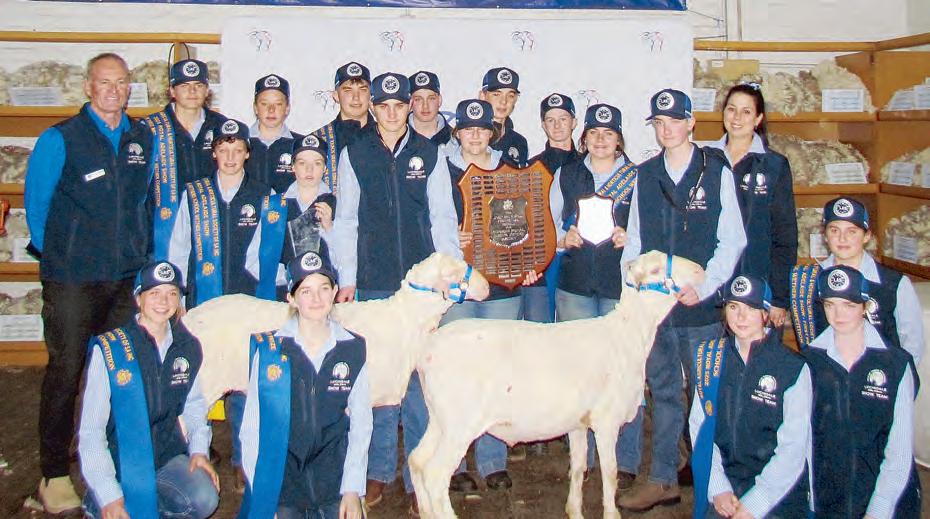
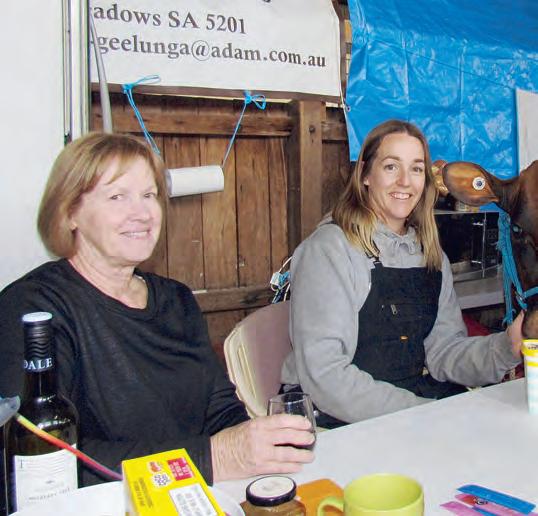
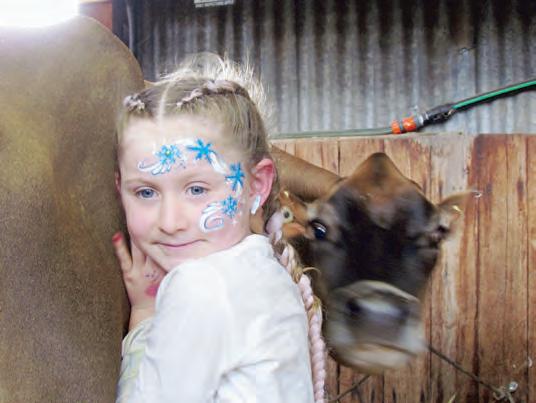
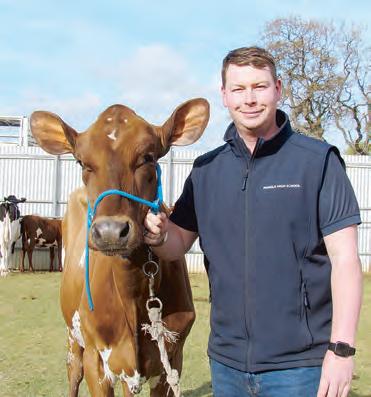
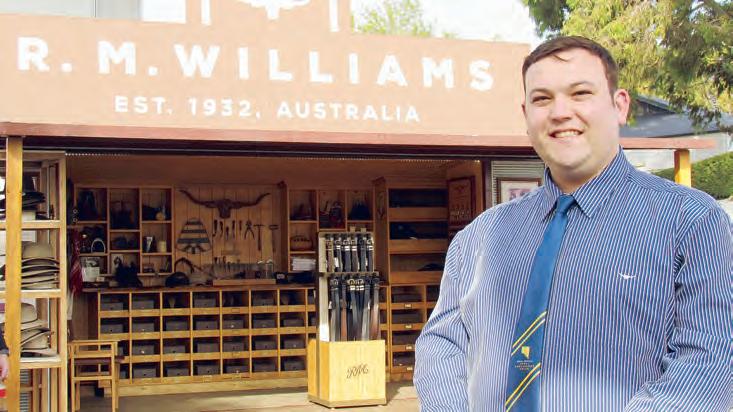

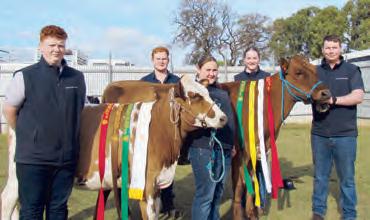




























BY DANI BROWN
A broad cross-section of the Fleurieu Peninsula’s red meat industry came together for the Hands On Beef and Sheep Forum at Parawa Hall.
Hosted by the Parawa Ag Bureau, the free four-hour forum on Thursday, October 2 allowed about 50 attendees to learn more about best practices, planning, and rebuilding after a tough season.
Among those in the crowd were producers, agricultural science students, researchers, livestock consultants, and veterinarians.
The guest speaker lineup was headlined by University of New England adjunct professor and beef breeding enterprise owner Dr Alex Ball.
He was joined by Dr Colin Trengove, who spoke about heifer and ewe management strategies, and Meat and Livestock Australia (MLA) director Dr Stephen Lee, who presented MLA Updates for 2025.
Bureau member Glen Tilley said Dr Ball shared his experiences in research, genetics, and meat quality in a relevant way.
“Alex really emphasised planning and having a drought plan,” Mr Tilley said.
“He challenged people on their business practices, emphasising that knowing their cost of production was essential.
“Another area that producers will need to practice more routinely will be their compliance levels in environmental compliance and animal welfare compliance, which is very important.
“He has had a beef and sheep prop-


erty himself; he’s been through a very hard drought cycle himself, so he spoke from his experience and he wasn’t just telling us what to do.”
Dr Ball shared his knowledge on genetics and getting the right balance of traits that influence profitability.
“By using genetic tools, we can identify and be more accurate and efficient when it comes to breeding goals,” Mr Tilley said.

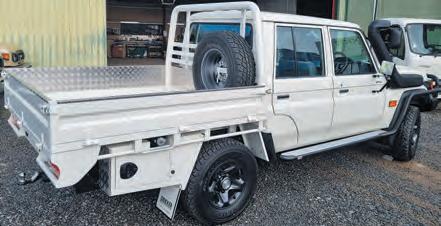

Standard Tray Features Include:
•Trays specifically built to suit individual make and model
•Checkerplate floorsweep out floor
•Large colour coded mudgaurds & mudflaps
•Heavy duty steel sides (reinforced with RHS tube on the top edge & ends)
•Heavy Duty RHS rectangular front load rack is standard, other pipe and tapered options available
•Trays are sandblasted, zinc treated & coated to your preferred finish

Specialising in Heavy Duty All Steel Trays, Wood Floor Trays, Tipping Trays, Toolboxes, Underbody Slide Out Drawer & many more extra’s
•Sides are 260mm high (310mm from floor), made from zincanneal sheet
•Welded frame, floor and dropsides
•One spare tyre bracket (LC79 only)
•Tie rails located along sides and rear of tray
•2 x Aerial/Spot light mounts
•Bushed hinges
•Tail light protectors
•Dog tie
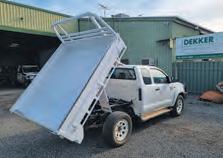
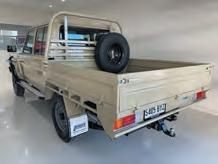
Producers could see the benefits of being able to see the strengths and weaknesses in their animals and being able to balance them with future ram and bull purchases, or selection within existing genetics.
Dr Trengove highlighted health treatments and supplements, management around deficiencies, and correctly timing lambing and calving so it matches feed availability.

Dr Lee talked about new programs the MLA has available, and also its annual general meeting and Updates event happening in Adelaide on November 20, which Mr Tilley said would be “good for producers to attend”
The forum was run as a Connecting Communities Event, sponsored by the Department of Primary Industries and Regions (PIRSA).

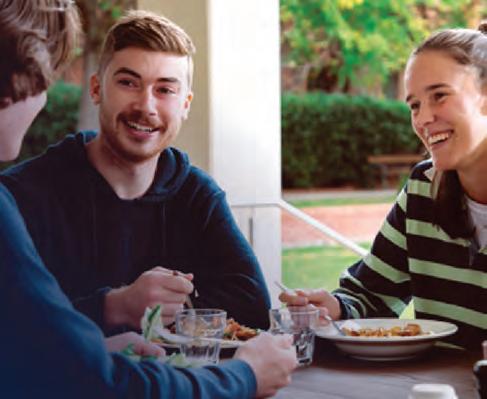





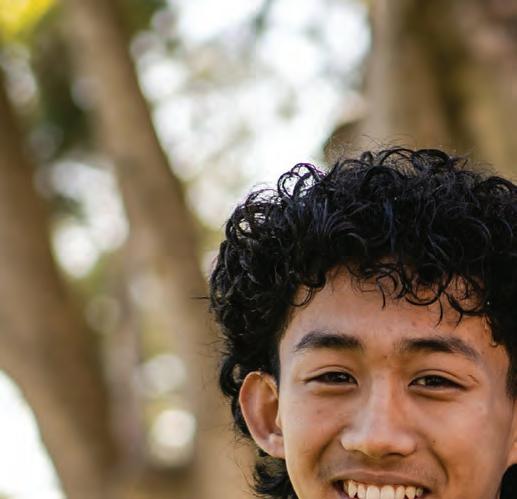




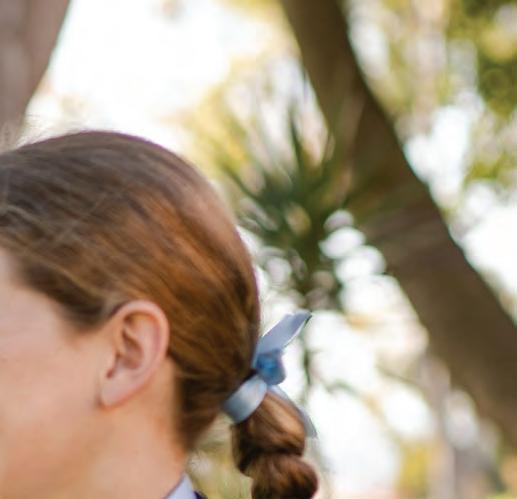



Sacred Heart College is a place of welcome, belonging, family spirit and student achievement, both within and outside of the classroom.
As a co-educational secondary college for girls and boys

























A farmer-led mental health program is expanding across regional South Australia, with new resources and initiatives designed to support drought-affected communities.
The growth has been made possible through funding from Preventive Health SA.
Farm Life psychologist Steph Schmidt has refreshed and strengthened the tools available for farmers and primary producers, launching an online hub and publishing the Farm Life Handbook.
Ms Schmidt said as she experiences the drought, she knows the toll it can take on a person, family and community.
“As a farmer living through drought myself, I know how exhausting and isolating it can be,” she said..
“As a psychologist, I also know that practical tools and strategies can make a real difference.
“That’s why it’s so meaningful to me to share resources that are built from both research and lived experience.
“It’s exciting to see these resources reaching farmers across South Australia, offering practical and effective strategies shaped directly by first-hand knowledge of the challenges of farming life.
“Our goal is to not only educate, strengthen wellbeing and raise awareness in communities, but also to up-skill everyone in how they can take care of themselves, support others and connect with what help is out there and accessible to them.”
The handbook offers farmer-informed strategies for managing stress and building resilience, and will be used in workshops de-
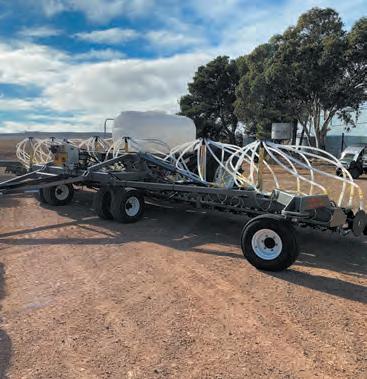
livered by partners including Breakthrough Foundation and Skylight Mental Health, as well as at community training events.
The support package extends beyond workshops.
Through the 2025–26 Suicide Prevention Community Grants, eligible sporting clubs, community groups and Aboriginal Community Controlled Organisations in drought-affected areas will continue to receive funding to enhance evidence-based responses and provide compassionate support for people bereaved by suicide.
Preventive Health SA funding will also see at least eight Men’s Table programs rolled out in the next year, beginning in the South East and later extending to all drought-impacted regions.
Following consultation with communities, Preventive Health SA will continue funding new programs that strengthen connection and deliver practical wellbeing tools for farmers and primary producers.
Men interested in joining or supporting a Table can visit www.themenstable.org or call 1800 636 782.
Ms Schmidt said as she experiences the drought, she knows the toll it can take on a person, family and community.
“As a farmer living through drought myself, I know how exhausting and isolating it can be,” she said..
“As a psychologist, I also know that practical tools and strategies can make a real difference.
“That’s why it’s so meaningful to me to share resources that are built from both re-


search and lived experience.
“It’s exciting to see these resources reaching farmers across South Australia, offering practical and effective strategies shaped directly by first-hand knowledge of the challenges of farming life.
“Our goal is to not only educate, strengthen wellbeing and raise awareness in communities, but also to up-skill everyone in how they can take care of themselves, support others and connect with what help is out there and accessible to them.”
Preventive Health SA chief executive Marina Bowshall said the extra funding needed to be readily available.
“Regional mental health care must be practical, accessible and responsive,” Ms Bowshall said.
“Investing in mental health support programs and resources tailored to these affected communities is essential to their long-term wellbeing.
“We are working closely with rural communities to deliver effective and respectful support that acknowledges the unique challenges they are facing.”
Phone support is available 24 hours per day, every day through Lifeline: 13 11 14 or Emergency Triage Liaison Service on 13 14 65 for urgent matters (South Australia only).
People needing mental health support or advice can contact Medicare Mental Health Line 8.30am -5pm on weekdays at 1800 595 212.
Visit www.sahealth.sa.gov.au for more information on the Drought Mental Health Support.
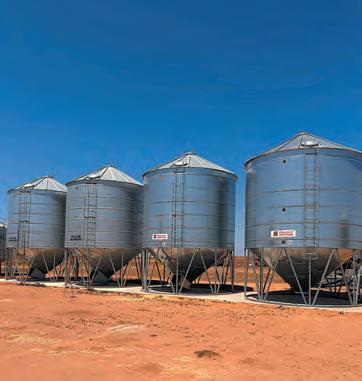
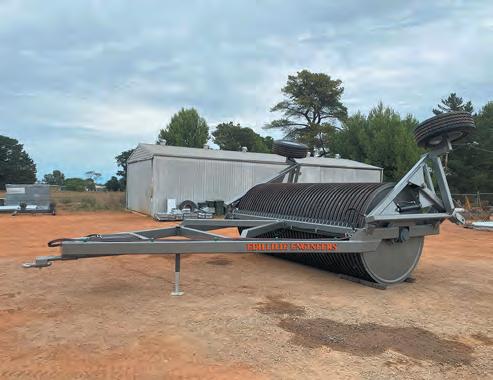
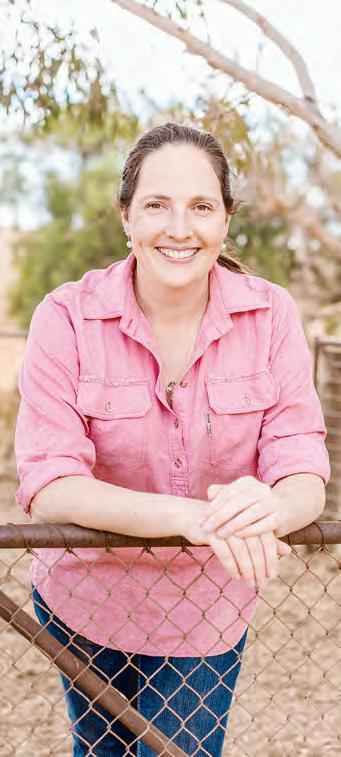

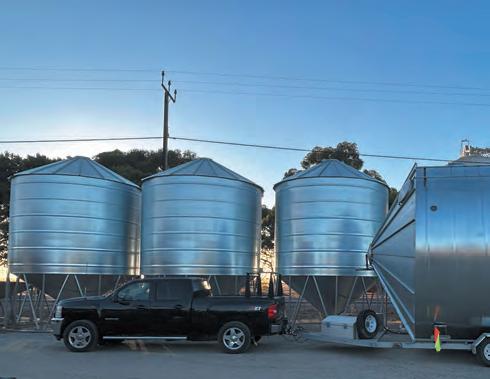

























BY GRDC
SOUTH Australian grain growers are set to benefit from a raft of new research thanks to investment from the Grains Research and Development Corporation (GRDC) and the South Australian Grain Industry Trust (SAGIT).
SAGIT is investing a total of $2.36 million in new projects this year. Contributions from other collaborators, including GRDC’s contribution of more than $400,000, brings that figure up to $3.12M.
GRDC’s co-investment supports four projects to establish new markets for noodle wheat, mitigate frost risk, provide gross margin/risk data to growers, and explore the potential of lentils.
Acting Senior Regional Manager – South Courtney Ramsey said the projects in which GRDC has co-invested are highly relevant to growers across South Australia.
“We have co-invested in projects that align with GRDC’s RD&E strategy to deliver value to growers,” she said.
“Our ongoing partnership with SAGIT has delivered great results in the past and we’ve worked together again to identify research ideas to tackle local priorities for grain growers.”
An Australian Export Grains Innovation Centre-led project aims to establish a new high-value hard noodle wheat market in SA.
This project seeks to increase returns for growers by boosting and stabilising the demand for suitable Australian Hard wheat
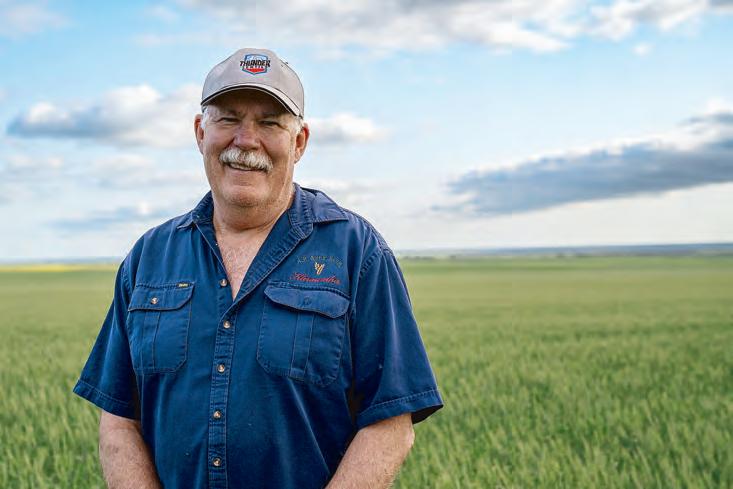
varieties intended for premium noodle markets in Asia.
Ag Excellence Alliance has received cofunding to update the SA Farm Gross Margin/Risk Guide for 2026, 2027 and 2028.
The guide will give growers data to inform their crop and livestock business management decisions.
AgXtra is leading a project which will evaluate and compare the safety of various herbicide treatments and use on lentils on typical Upper South East and Murray Mallee soils.
The project will see whether lentils are a

Balco Australia is contracting cereal hay and straw of all grades for the 2025 season from around South Australia.
Hay
suitable option in cereal-canola dominant cropping systems and on soil types where faba bean and lupin rotations are limited by profitability, marketability and scalability.
The research will also investigate the yield comparison between lentil varieties at Malinong to address barriers to adoption of new varieties in the Upper South East.
Lastly, a project led by the South Australian Research and Development Institute (the research division of SA’s Department of Primary Industries and Regions) will explore novel frost risk mitigation strategies for lentils.
The team will test if products like hormones (to help flowers recover) and bactericides (to protect from microbes) help lentils recover better from frost, compared to not using these products.
SAGIT chair Dr Andrew Barr said GRDC’s co-investment helped boost the 2025 project offering following the 2024 drought.
“The drought meant there was a belowaverage harvest and, as a result, SAGIT’s income was clearly affected,” he said.
“We got more than 60 applications for new research projects and without GRDC’s co-investment, we would have only been able to fund 20 of those.
“From SAGIT’s point of view, we are delighted with the working relationship we have with GRDC and the mechanism by which we can co-invest in areas of shared priority.”
More information on each co-investment can be found on the GRDC website:
A new high-value noodle market for SA growers – Phase II
Production of 2026, 2027 and 2028 Farm Gross Margin/ Risk Guide for SA • Novel frost risk mitigation strategies for lentils
Upper SE and Mallee lentil herbicide safety and variety performance.
Details of all SAGIT-funded projects for 2024-25 are provided on the SAGIT website.
SAGIT is the unique state-based grains research body that administers funds gathered through a voluntary levy on South Australian grain receivals.

























SOUTH Australia’s unique landscapes, wildlife and regional communities are set to benefit from a new round of investment through the Landscape Priorities Fund (LPF), which directs money raised through Green Adelaide’s metropolitan landscape levies into projects that deliver long-term environmental and agricultural outcomes across the state.
The fund, administered by the Department for Environment and Water, supports large-scale initiatives that address shared priorities across regional landscape boards –from biodiversity protection and sustainable land management to climate resilience and economic sustainability.
This year’s round of LPF funding has been allocated to a series of major projects that highlight South Australia’s commitment to caring for its land, waters and wildlife.
Among them is the Climate Resilient Landscapes (CRL) project, which is helping communities adapt to changing conditions through improved land management, habitat restoration, and local partnerships.
On behalf of all landscape board general managers, Jodie Gregg-Smith from the SA Arid Lands Landscape Board said the project showed how regional landscape boards were taking a strategic approach on climate resilience.
“We’re collectively addressing a key priority while developing unique projects that align with each region’s local needs,” Ms Gregg-Smith said.
“Working together like this demonstrates the potential for future whole-of-state ini-

tiatives and addressing the bigger issues at the right scale.”
Other initiatives supported through the 2025–26 funding round include:
The Kangaroo Island, Eyre Peninsula and Murraylands and Riverland landscape boards will offer practical knowledge on property management plans, and soil health through workshops, demonstration

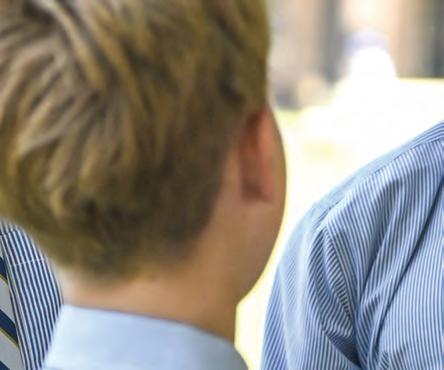

feral pigs, camels, donkeys and horses to both native ecosystems and pastoral enterprises in the SA Arid Lands.
• Water usage and storage will be highlighted by the Hills and Fleurieu board while a Waterwise Farming project by the Northern and Yorke will help develop a water audit tool which will be used to help make informed decisions.
• A project on Kangaroo Island focused on enhancing the long-term viability of the glossy black cockatoo, one of South Australia’s most iconic and vulnerable species.
The funding also includes $400,000 for the SA Drought Hub to help amplify resilience-building outcomes in line with the hub’s objectives.
Together, the projects represent a strategic approach to managing South Australia’s diverse environments – ensuring that funds raised in the city contribute to tangible, measurable benefits across the regions.
Programs such as these also play a key role in connecting communities and empowering local people to take part in managing their natural resources.
sites, planning sessions and producer-led steering groups.
• Targeted management of peat soils in the lower Limestone Coast, aiming to improve soil health, water retention and carbon storage capacity while supporting agricultural productivity.
A cross-regional biodiversity and pest control initiative tackling the threat posed by


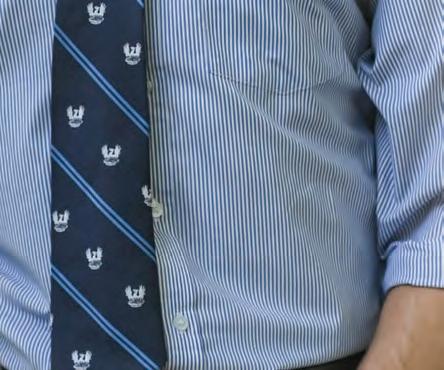
By addressing issues such as climate change, habitat protection and pest management at a landscape scale, the fund supports healthier ecosystems and more resilient industries.
For South Australians wanting to learn more about the current or upcoming funding rounds – including project outcomes, eligibility criteria, and regional priorities –further information is available at landscape. sa.gov.au.
































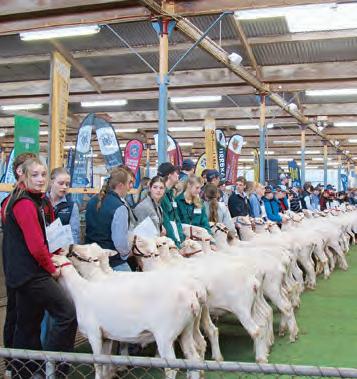
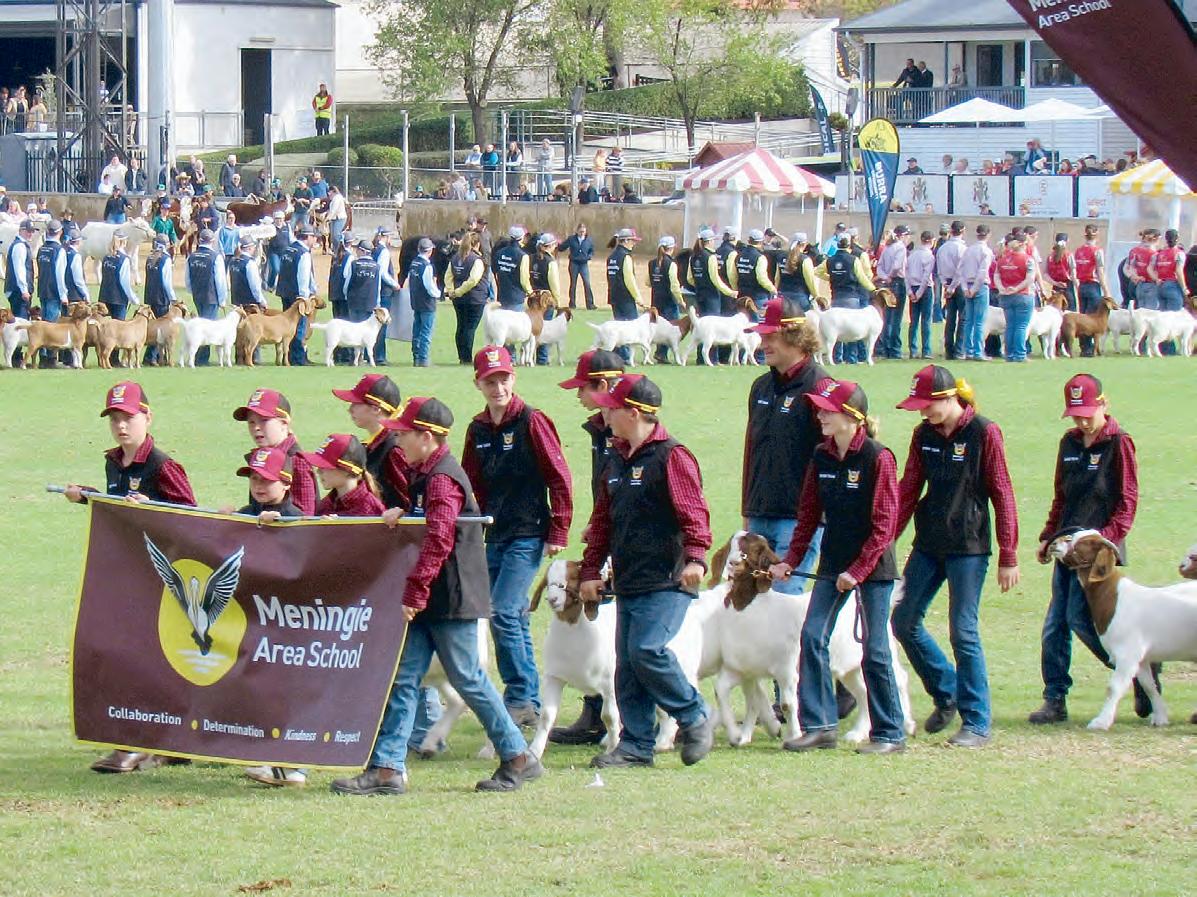
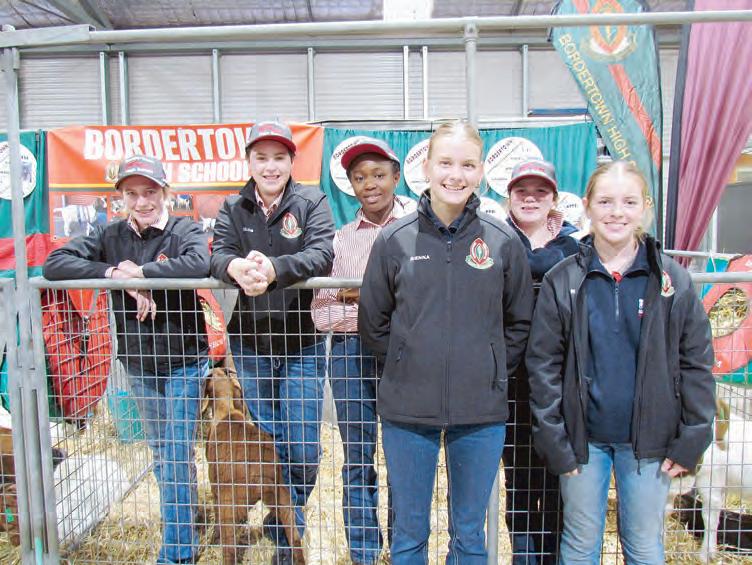


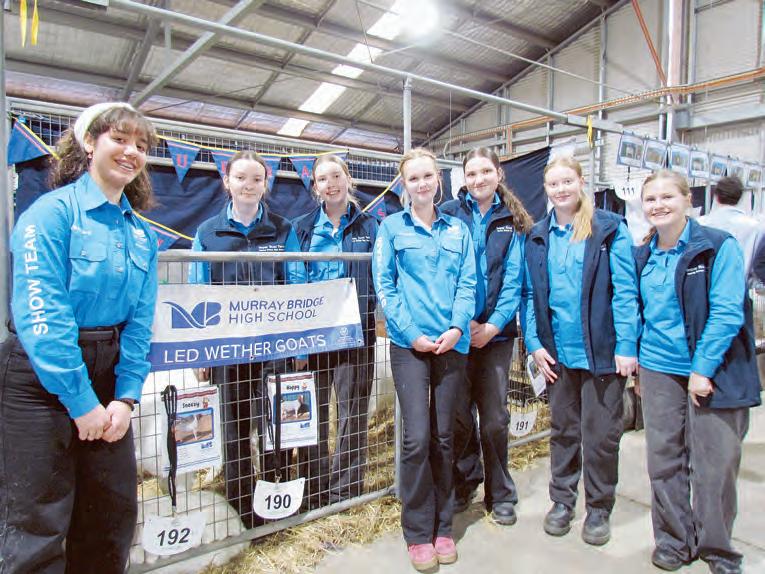


























BY CAROLINE RHODES, PPSA CEO
SOUTH Australia’s economic future will stand or fall on the fortunes of its regions.
If we want a prosperous state, we must champion the industries that sustain our communities - and none are more critical than agriculture.
Our agriculture, food and wine industries contribute more than $17 billion to the state’s economy each year and support tens of thousands of jobs.
They underpin regional communities, drive exports, and secure our global reputation for safe, sustainable food and fibre.
Put simply: when agriculture prospers, SA prospers.
Yet with drought once again weighing heavily on families and businesses across the state, we are reminded that prosperity cannot be taken for granted.
It must be secured.
That is why next year’s State Election matters so profoundly.
The policies put forward will determine whether SA unlocks the full potential of its agricultural sector or continues to treat it as a legacy industry instead of the driver of growth that it is.
Nationally, agriculture contributes more than $90 billion to the economy, supports 275,000 jobs, and generates over $70 billion in exports each year.
Here in SA, the opportunities are greater still across grains, wine, livestock, dairy, for-
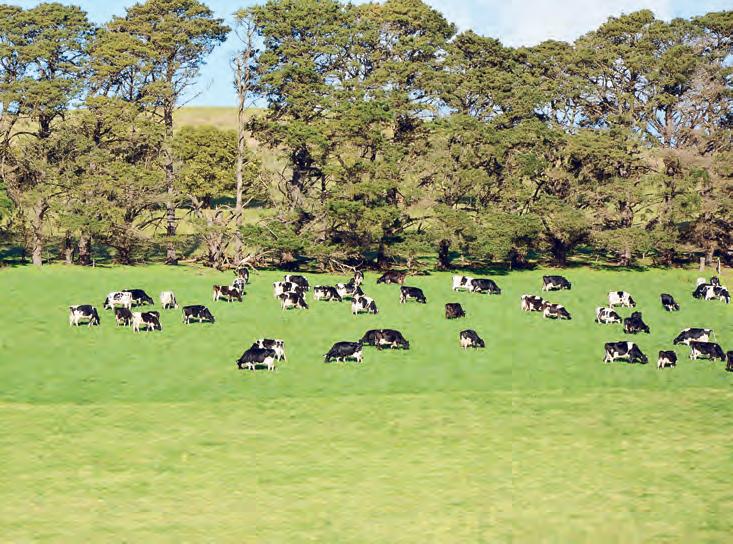
estry and horticulture.
Producers are ready to adopt new technologies, expand into new markets, and adapt to climate pressures.
What they need is for government to match their ambition.
That means clearing the path, not creating new regulatory hurdles.
It means investment in productivity and innovation, not more red tape.

It means recognising that affordable, reliable energy is the bedrock of competitiveness and that as we move towards net zero, land use conflict must be properly managed.
Water security is another non-negotiable.
Farm dams, storage and access to reliable stock and domestic supply are critical to building drought preparedness in dryland agriculture.
Without them, resilience is a slogan, not a reality.
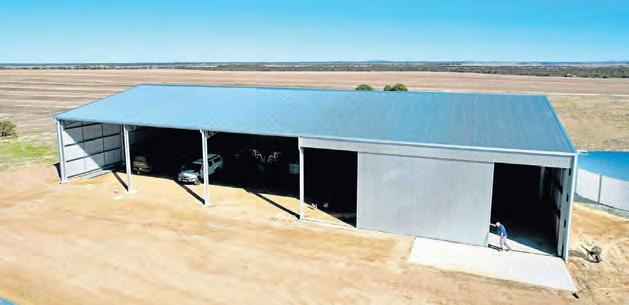
Equally, regional South Australians deserve access to the same services their city counterparts expect.
Health care, childcare, education, digital connectivity and infrastructure are not luxuries.
They are the foundations of thriving communities and a skilled workforce.
Without them, we cannot expect young people to build futures in the regions, nor can we grow the workforce agriculture requires.
The election will also test how seriously our leaders take climate adaptation.
Timely, low-interest drought loans, targeted investment in biosecurity and natural resource management, and policies that drive innovation across the value chain are essential.
Standing with regional communities in times of stress is not charity, it is an investment in the industries that sustain the whole state.
The National Farmers’ Federation is right: productivity growth in agriculture is a win for farmers, for consumers, and for the broader economy.
For SA, the stakes are even higher.
Our state’s prosperity is inseparable from the strength of its regions.
As we look to next year’s state election, PPSA will be calling for policies that unlock that potential.
SA’s future depends on agriculture.
The choices we make now will decide whether our state merely survives or thrives.

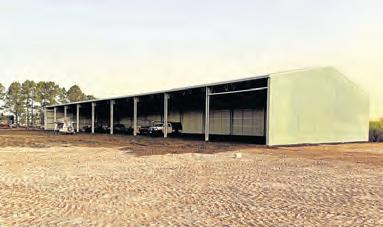
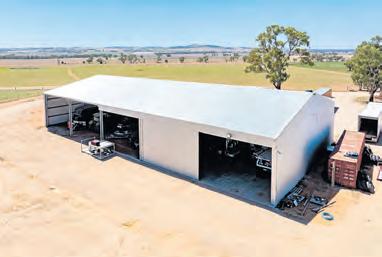
























BY MICHAEL SIMMONS
COWS Create Careers is an initiative that raises the profile of the dairy industry and teaches students in schools around the country how to care for a calf.
The project began in 2004 as an initiative of the Lions Club of Strzelecki, starting as a grassroots program that grew to become a national initiative by 2008.
In 2005, the program received its first major funding from the Gardiner Foundation and in 2006, Dairy Australia came on board, committing to a three-year contract with the goal of achieving national coverage.
In 2022, the funding model was revised and the program is now jointly supported by Dairy Australia, the Gardiner Foundation and the South Australian Dairyfarmers’ Association (SADA).
The original working group was made up of members of the Lions Club of Strzelecki, together with Michelle Axford and Sylvia Vagg from the University of Melbourne.
The group shared a passion for the dairy industry and a vision to connect it with the education sector, laying the foundations for the program’s long-term success.
Traditionally, there are around 210 to 220 schools involved each year across 23 dairy regions of Australia.
Each year the program involves somewhere between 11,000 and 15,000 students.
Each year calves ae delivered to participating schools from farms in the region.
When the calves arrive, it is always an exciting moment for the students.
With only around 3 per cent to 4 per cent of students per year living on dairy farms, most have never had the opportunity to be
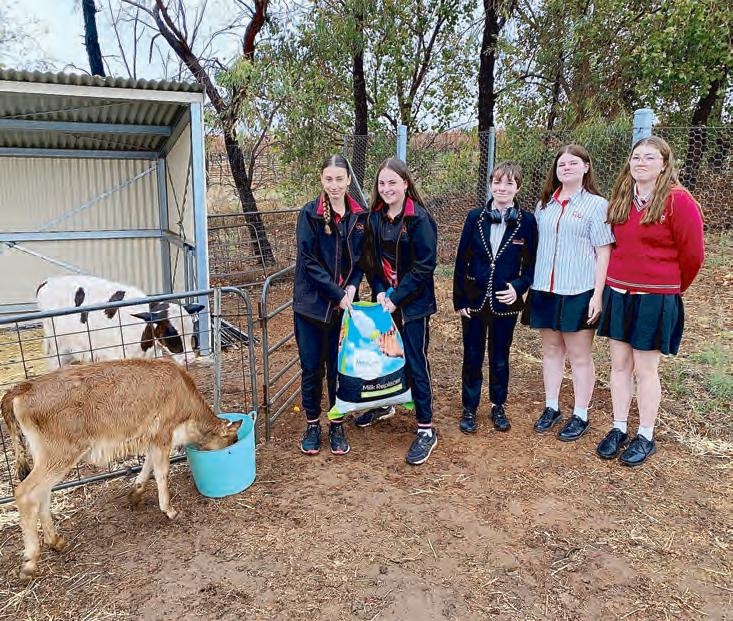
so close to farm animals.
Cows Create Careers national project manager Deanne Kennedy said for many students, it was their first hands-on experience in caring for livestock.
“Over the three-week period, the students take full responsibility for the calves’ care and well-beings,” Ms Kennedy said.
“This includes feeding them milk and water, brushing them to keep their coats healthy
and ensuring their pen is clean, comfortable, and safe.
“Through these tasks, students learn the importance of consistency, responsibility and animal welfare.
“In addition to the practical care, the students also complete curriculum-linked activities about the dairy industry.
“These lessons help them understand where milk comes from, the role of farmers
and the many career pathways the dairy sector offers.”
“By the end of the program, the calves have often become much-loved members of the school community.
“When it is time for them to return to the farm, students are genuinely sad to say goodbye, a reflection of the strong connection they have built through their care and commitment.”
Ms Kennedy said the dairy industry played a vital role in supporting regional communities across Australia.
“For more than 21 years, this program has helped highlight that importance by connecting farmers directly with students,” she said.
“The farmers are the face of the program and they genuinely enjoy being involved, sharing not only their passion for caring for animals, but also the pride they have in producing nutritious food for families across the country.”
For many students, particularly those who live in rural towns but not on farms themselves, this may be their first meaningful exposure to agriculture.
By caring for calves and learning about the wider industry, they gain a better understanding of where their food comes from, the hard work behind it and the value of agriculture to their local economy and community.
The program also plays an important role in raising awareness of the wide variety of career opportunities the dairy industry provides, not just on-farm, but also in science, technology, business and processing.
Cows Create Careers opens pathways for young people to consider future roles within their own regions, helping to strengthen and sustain local communities into the future.
AS crops fill out across South Australia and the countdown to harvest begins, it is a season of both growth and forward planning.
While the grain heads ripen in the paddocks, many landowners are also turning their attention to next year - and to the future of their farms and families.
Whether you are refining your succession plan, exploring a subdivision or preparing for a property transfer, Patterson Conveyancing is here to guide you through every stage with clarity and confidence.
Proudly serving every corner of South Australia, this second-generation, family-
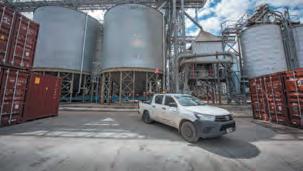
owned business brings more than 35 years of experience supporting rural families, landowners and regional communities.
From land divisions and private contracts to mortgages, leases and estate matters, Patterson’s expertise runs as deep as its local roots.
With offices in Port Lincoln and Whyalla - and a team that regularly travels the state - Patterson Conveyancing meets clients where they are.
As accredited members of the Australian Institute of Conveyancers South Australia (AICSA), it delivers qualified, professional advice grounded in both property landscape
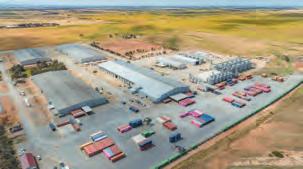

precision and the unique challenges of regional life.
Deeply embedded in their communities, the team’s commitment extends well beyond paperwork.
Through local sponsorships, events, and partnerships, Patterson Conveyancing proudly supports the growth and resilience of regional South Australia.
When it comes to protecting your property and what you have built - from paddock to paperwork - choose Patterson Conveyancing, the South Australian name built on clarity, care and community.





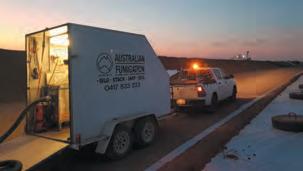









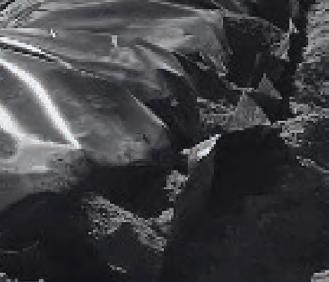
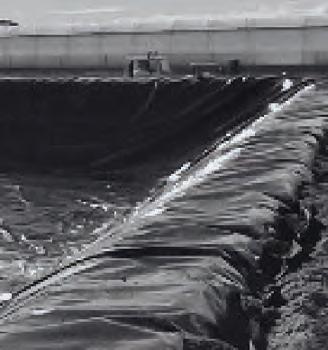

















ADVERTORIAL
ALDINGA Mowers & Cycles (AMAC) has a family-owned and operated business for 35 years.
Brenton and Jane Jaensch purchased the business in 1991, where it began as a small mower and bicycle shop and has since been built up to become a reputable business servicing the Fleurieu Peninsula and SA region.
It offers easy parking, easy-unloading for machinery drop off and repair and an extensive range of lawn and garden care equipment with leading brands such as Stihl, Toro, Walker, Razorback, Rover, Honda , Masport, Victa, Billy Goat, Rapid Spray, Atom and now Hustler.
You name it, they have it.
They also sell Polaris off-road vehicles to cater for farming, recreational and commercial needs and are the SA state distributor with Toro Construction product with a range of compact utility loaders, trenchers and tree care machinery.
There is a servicing department with the ability to offer after sales service and repairs on all the brands they sell.
It is a family affair at AMAC with the couple’s two sons Nathan and Josh Jaensch running the operations going forward and nephew Jason Lepoidevin helping with store and workshop activity.
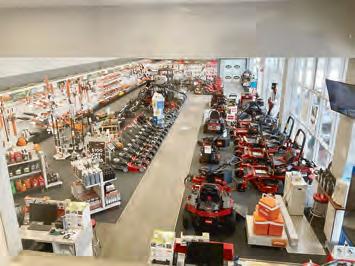
“We have a total of seven staff, six fulltime and one casual. I have stepped away from the business and in 2026 Jane will also be stepping away from day-to-day activity,” Brenton said.
Nathan Jaensch is the sales manager, who handles major sales, offering expertise and advice in new equipment and Josh manages in-store, counter and phone enquiries, which includes spare parts, and there is a large workshop with three qualified technicians.
Contact the team at AMAC on 8557 7041, 0437 321 741, email nathan@amacsa.com. au, visit www.amacsa.com.au or drop into Lot 2 Aldinga Beach Road, Aldinga Beach.
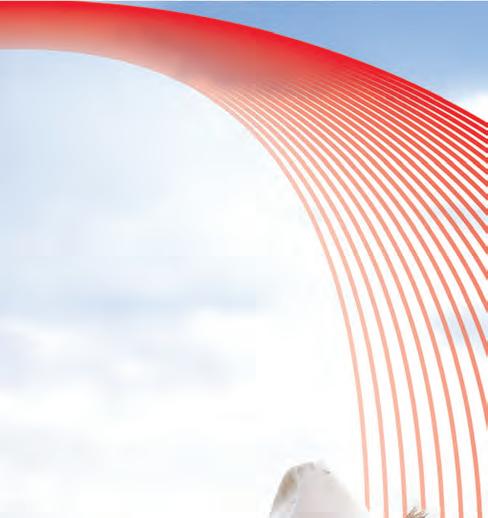
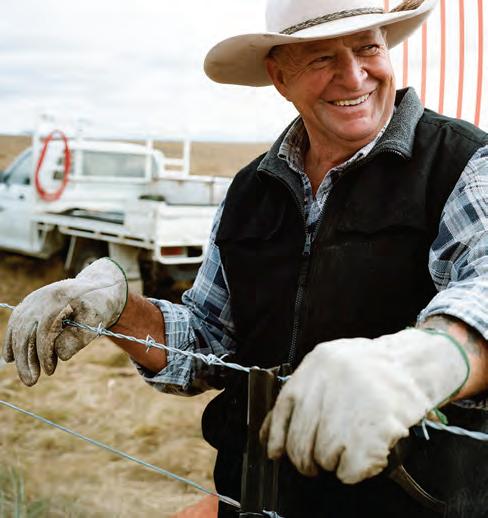









IF another season has passed with little advisor support, then it may be time to explore your options.
What if your reality was having a proactive accountant involved in your business?
RSM is finding that primary producers are requiring, and appreciating, extra support with seasonal planning.
Traditional tax planning occurs in May/ June and is a vital part of the planning process. However, RSM views this as only the final step.
The company encourages farmers to begin the planning process in late September where an advisor can add value by assisting with grain selling strategies, cash flow and planned expenditure, among other things.
Without this knowledge, farmers may need to rely on gut feel, rely on last year as a guide or warehouse grain and make decisions later - often when prices have softened post-harvest.
Thisknowledge empowers farmers to make informed timely decisions with the following benefits:
How much of the harvest to sell for cash in the current financial year and how much to sell in different products to achieve an agreed target profit for the financial year.
• Confidence to sell grain for the best daily


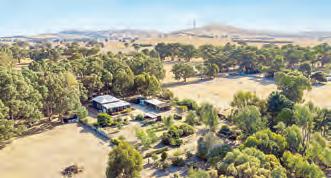
price with the knowledge it should not create unexpected taxation issues for the current financial year.
• Grain proceeds are banked at the right time. Potentially saving on overdraft interest and freeing up cashflow when it is needed. Money not locked up until July when it does not need to be.
• Support with planning for expansion well ahead of time, and other wealth creation strategies to be implemented ahead of last-minute tax planning.
When implementing the above, RSM has found farmers are more confident with their grain selling and planned expenditure decisions.
They achieve year-end tax/income goals whilst also ensuring there is enough cashflow to get through the financial year. Contact RSM to arrange a free, no obligation on-farm consultation.
Boost your off-farm income and investment returns with a tailored investment portfolio. From portfolio reviews to customised superannuation, SMSF and retirement plans, Ord Minnett is an Australian-owned advice with clients to build wealth for generations. Start a conversation
Contact local advisers Brenton Howard on 08 8203 2574 , bhoward@ords.com.au or Stuart Harris on 08 8203 2501 , sharris@ords.com.au or visit ords.com.au
























BY JASON IRVINE
FOR almost 30 years, Rio Vista Olives in Mypolonga has grown into one of South Australia’s most respected names in olive oil production and quality-made products.
The business began when Augusto and Helen Lorenzetti hand-planted olive trees in 1996 in a real labour of love and vision that has seen the grove grow in reputation for its quality products.
In 2016, the couple decided to hand over the reins to the Bettio family - who already had a strong connection with food, land, and community - which took on the business’s operations.
In that time, the new owners expanded the operation by acquiring a grove in Mount Torrens, bringing in new energy, expertise, and ambition, all while honouring the original ethos.
Over time, the Bettio family blended tradition with innovation by travelling, studying, testing, and refining its product, returning to the core belief that premium olive is about respect for the grove, the fruit, and the extraction process.
Rio Vista marketing manager Sarah Asciutto said that in the last decade, the familyrun business knew it needed to stay true to the legacy that had been built.
“Even though we all came from backgrounds outside agriculture, we approached the olive business as we would any craft: with diligence, discipline, curiosity and a willingness to learn,” Ms Asciutto said.
“We went overseas - to Italy, Spain, the US - to understand milling, olive varieties, tasting techniques, and we also invested in certifications, training, and in building local knowhow.
“So, the journey has been part inheriting something beautiful, part immersing ourselves, and part building onward, always with the desire to learn more and a mindset of stewardship.”
From grove to bottle, each step of the process from start to finish is intentional, with the method beginning with cultivation and grove care and then harvesting the olives at the optimal time.
After that, once the olives are collected, they are then cleaned of leaves, twigs, dirt, and other debris, before being milled and crushed into a paste, followed by a malaxation process.
The next step sees the oil separated from solids and water under cold-extraction conditions to maintain quality, before the freshly extracted oil is filtered and checked for chemical and sensory parameters (free acidity, peroxide value, and sensory tasting) to confirm it is truly extra virgin.
Then the oil is bottled and labelled depending on its market and usage before different lines of products get released, marketed,

and sold to retailers, chefs, and direct customers via e-commerce or cellar door sales.
“We treat the process almost as an art form - every batch is handled carefully, with attention to temperature, timing, fruit health, and tasting to make sure we retain as much flavour and beneficial compounds as possible,” Ms Asciutto said.
“Also, we have a passion for agrumato or co-pressed oils, where we cold-press olives together with fresh ingredients (chilli, garlic, basil, turmeric, etc) - this gives vibrant flavoured oils that comes from fruit and fresh ingredients in the pressing, not just infusion after the fact.”
Embracing the industry, Rio Vista is all about promoting the community food feeling while highlighting how quality, simple ingredients can make a difference.
From agricultural diversification and value-adding to employment and skills development, there are multiple dimensions to its importance to the local South Australian region.
Additionally, Rio Vista works to create a regional identity and prestige, generate sustainable land stewardship, support local suppliers and networks, and build cultural and community connection.
With the groves kept biodynamic where possible, Ms Asciutto said it was important for the business to stay true to its roots within the local community and region.
“Rio Vista isn’t just about making oil -
it’s about investing in place, people, and productivity in the South Australian regions” , she said.
Having won multiple awards in recent times - including Best South Australian Extra Virgin Olive Oil in Show at the Royal Adelaide Show with its single variety Koroneiki this year - the family-owned olive grove has constantly been striving for continued success year-on-year.
Ms Asciutto said that its success has been a culmination of uncompromising quality, continuous learning and innovation, authenticity and provenance, a strong brand and storytelling, resilience and adaptability, community and relationships, and awards and external validation.
“This combination - craft, habit of excellence, authenticity, relationships and resilience - is what helps sustain our success” , she said.
From entry and core lines of product including its Nothin’ But Olives range to more premium and reserve lines such as its Augusto and Gigi releases, Rio Vista aims to showcase both the high quality olive oils and uniqueness of a single variety and terroir.
As well, the business offers agrumato and flavoured oils, as well as processing and milling services, grove management, and cellar door experiences with direct sales and tastings.
Ms Asciutto said customers were drawn to Rio Vista, and stayed with the brand for

numerous factors, including flavour and authenticity, transparency and provenance, and an award-winning reputation.
As well, the variety and exclusivity of its products, the connection and story behind each product, extra virgin olive oil’s health benefits, and Rio Vista’s service is also behind the strong customer-base.
“Our customers are often food lovers, chefs, home cooks who can taste the difference, and they appreciate oils that aren’t bland or generic, but expressive, varietal, terroir-driven,” Ms Asciutto said.
“People like that our oils are 100 per cent SA-grown, cold pressed, and small-batch, and our reserve or limited release bottles give customers unique experiences - oils they can’t easily find everywhere.
“Consumers today often want to know who made their food, the values behind it, and feel a connection to the farm, the people, the land, and we work closely with chefs, restaurateurs, retailers, allow tastings, are responsive, and educate people with recipes and food pairings.”
Ms Asciutto said the entire family behind Rio Vista was grateful for the journey to creating some of the best olive oils in the country.
“We’re caretakers, not just producers, so we always see ourselves as stewards of land, olive trees, climate, community and the land is our partner, not just an input,” she said.
“Our mission is more than a product; we want people to rethink olive oil, not as a commodity or bland kitchen staple, but as a vibrant, flavourful, expressive food, like wine - we want people to pair it, taste it, celebrate it.
“We work in small batches, not mass scale and we are intentionally boutique in many of our releases, which means we sometimes must say “no” or limit quantity so we don’t compromise quality because good olive oil cannot be rushed.
“We also want to support local and invest in culture, so that when people choose Australian, South Australian olive oil, they are supporting regional economies, environmental care, food sovereignty - things we believe in deeply.
“We welcome collaboration, whether with chefs, food writers, growers, universities, or community, because we believe in sharing knowledge, promoting best practice, and elevating the Australian olive oil industry as a whole.
“It’s also important to remember that not every season is perfect - we live the risk, as there are droughts, low yields, pests, weather events, but what defines us is how we respond, with resilience and care.
“Finally, I’d say: we are always learning, always listening and that every time someone tastes a bottle and says “that’s amazing,” that pushes us to refine, to be better.”
Rio Vista Olives can be found via riovistaolives.com.au.
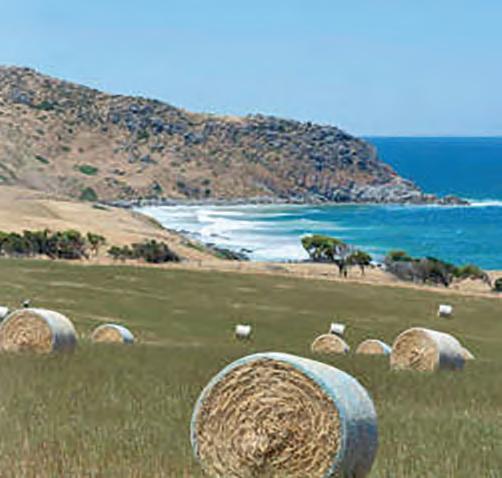


























AS a fifth generation farmer from Bute, I believe that the next chapter of Australian agriculture is still to be written, but its ink must be forged from common sense and a renewed appreciation for what made us great.
The future is not only about adapting to the latest trend; it is about looking back at the sound policies that served us well and viewing today’s challenges not as obstacles, but as invitations to action.
Our goal must be to return Australia to its rightful place as an agricultural superpower.
A critical conversation we must have is about power.
Every farm, every business and every family is being smashed by rising costs, often in the name of emissions targets that simply cannot be met.
The entire agricultural supply chain feels this pinch.
Why are we subjecting ourselves to this when we have the means to produce reliable, traditional energy rain, hail, or shine at a much lower cost?
We must also open a conversation about bureaucracy. Be it on the farm or in industry, this tangled mess slows down and stifles progress.
We cannot thrive when held back by rules that make no sense to everyday Australians. It is time for a new era, where we clear away unnecessary regulations and let you, the makers, the growers and the doers, get on with the business of feeding our nation and the world.
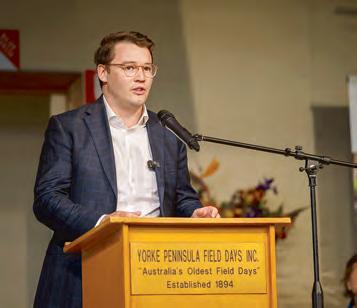
MP Tom Venning is backing Aussie farmers. (Supplied)
We must be relentless in opening new markets, forging new trade relationships, and ensuring the world has access to the finest food and fibre on the planet - Made in Australia.
At Yorke Peninsula Field Days, I made the following remark, as a reminder of the important role farmers play in the lives of all Australians: “You might need a lawyer once, a surgeon twice, a policeman if it all goes wrong, a banker if it all goes right. But everyone on the planet needs a farmer. You need a farmer every single day, three times a day: breakfast, lunch and dinner.”
Let’s give our farmers the power, the resources, and the freedom to do what they do best.
With your support, I will continue to fight for the future of farming.
Grey MP Tom Venning


DESIGNING in the Barossa for nearly 30 years, JBG Architects continues to be inspired by the innovative spirit and resilience that lies at the heart of South Australia’s regional communities.
A hallmark of resilience is innovation and diversification, and JBG Architects has worked with farmers value adding their enterprises into accommodation and tourism experiences.
“As architects and interior designers, we’ve helped clients through each step of the journey, from concept to bringing their vision to life,” director Jamie Gladigau said.
The Barns of Freeling is a standout example, now one of South Australian’s most recognisable accommodation and events venues.
JBG Architects worked with the Schuster family in 2013, transforming a 1920s limestone barn on their working farm into a function space. The project expanded to include boutique custom grain silo retreats and luxurious historic barn suites.
Since its early days, JBG Architects has collaborated with the agriculture and wine industries.
“Regional businesses are elevating their experiences, even during challenging times,” Jamie said.
People are increasingly becoming curious about where their food and beverages come from, resulting in a rise in ag-

ritourism experiences.
JBG Architects sees businesses expressing their unique identity and personality through design.
“Whether it’s a contemporary glass pavilion overlooking sweeping farmland views, or a design inspired by regional history and natural environment, each interpretation creates a conversation between the producer and their customers,” Jamie said.
JBG Architects has worked alongside iconic South Australian family businesses, including Ahrens Group, Beerenberg, Henschke, Yalumba, Angove, Grant Burge, and Slape and Sons.
“Our team continues to be excited by every project that comes our way,” Jamie said.
Residential architecture in the regions reflects a similar approach. Environmentally sustainable design and natural materials are often favoured by clients, for lifestyle, individuality, and regional character, whether a heritage restoration, homestead or new build.
“Architecture is more than buildings,” Jamie said.
“It is about identity. Whether in a stateof-the-art tasting room or walking past a century-old bluestone cottage, you’re experiencing community through its built environment.”
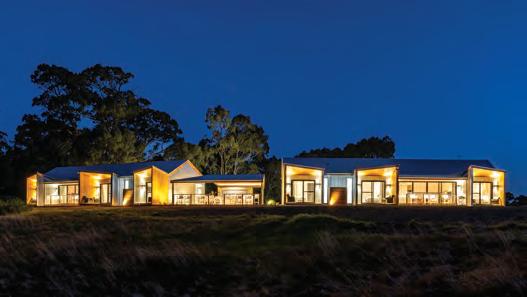




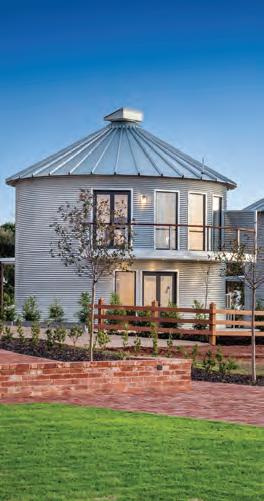



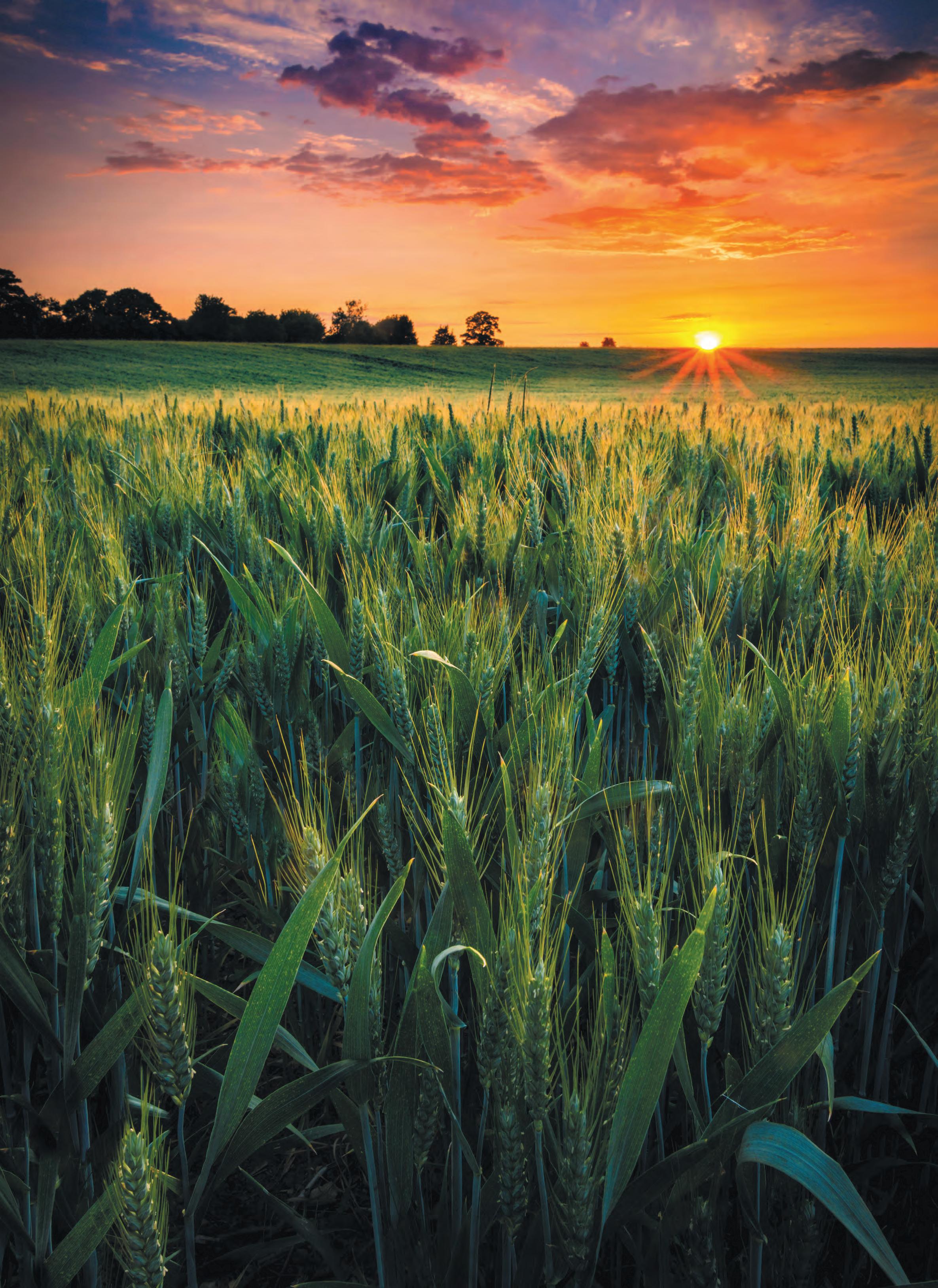
























BY IAN TURNER
THE Heinrich family reaped the rewards of many years of dedicated commitment to the sheep industry, and the resultant outstanding quality they presented at their annual three breed sale held recently on Kangaroo Island.
The Heinrichs offered 352 rams from their White Suffolk, Maternal Composite and Poll Merino studs in a four-and-a-half-hour extravaganza, resulting in an impressive 97 per cent clearance, to buyers from five states.
Of the 340 lots that sold at auction, it was one of the Poll Merinos that topped the overall sale at $16,000, while two White Suffolks topped their biggest and main draft at $13,000 each.
Overall, the 340 lots averaged an exceptionally strong $2483.
The high-quality reputation of Ella Matta genetics is expanding, as the sheer number of online bids made this year through the Auctions Plus network indicated.
Auctions Plus co-ordinator Seb McDonald was kept consistently busy throughout, with 618 online bids, operating on 58pc of the lots and accounting for 20pc of the overall sale gross from the successful online bids.
While the overall sale top came in the Poll Merino offering, it was the biggest and main draft of 217 White Suffolk rams that kicked the auction off in grand style.
Stud demand drove the White Suffolk average upwards with 15 rams going to ram breeding flocks from four states - averaging $6107.
Ian and Donna Gilmore and Sons, Baringa stud, Oberon, NSW, kicked the sale off on a great note with a successful $9500 bid on the lot 1 ram, EM240359, one of several already used in the Ella Matta stud as ram lambs.
The Gilmores later added a good average breaker at lot 30, EM240189Tw for just $3200.
Lot 2, EM240458, by Farrer 220173 impressed many with his sire power and visual carcase attributes, but it was his performance data that impressed even more.
With figures for weaning weight (WWT) of 13.4, post weaning weight (PWT) of 20.2, eye muscle (PEMD) of 5.5, and a lean meat yield (LMY) of 4.9, all ranking in the top 5pc nationally across all terminal breeds, his lamb eating quality (LEQ) and terminal carcase production (TCP) indices were both over 180, ranking him high in the top 1pc nationally.
He attracted 17 online bids, but it was the Hull family, Kattata Well stud, Streaky Bay, which purchased him for the equal top price of $13,000, with the Funke family, Bundara Downs stud, Bordertown taking a semen share post sale.
Six lots later the $13,000 price was equalled when EM240089, sired by Farrer 220103, went under the hammer.
Most of the action was in the sale shed on this very impressive young sire, also having five traits in the top 5pc nationally on Lambplan, culminating in a top 1pc ranking for LEQ of 167.8.
Leigh and Jayne Richards, Tongara stud, Netherton, won the strong bidding duel, with Jonno Hicks, Hannaton stud, Kaniva being the underbidder.
Repeat client, Warren Thompson, Hedingham stud, Wickepin, WA purchased EM240441, sired by Ashmore 221308 for $8000, being attracted by his structural excellence, breed type and impressive performance data.
While the stud sales were the “cream on top” for the Heinrich family, the main focus is commercial relevance, which attracted a large group of commercial clients.
It was one of the mainland buyers who took out the volume buying honours.
Mark Mackinnon, Langi Willi P/L, Skipton, Victoria,picking up the first of his 17 purchases at lot 14 for $2500, and his last at lot 209 for $2000.
Long term supporters and neighbours, the Mumford family were back once again as strong as ever.
Sam Mumford paid to a top of $4200 and averaged $2613 for 15 outstanding rams.
Mike Smith successfully bid on 12 rams

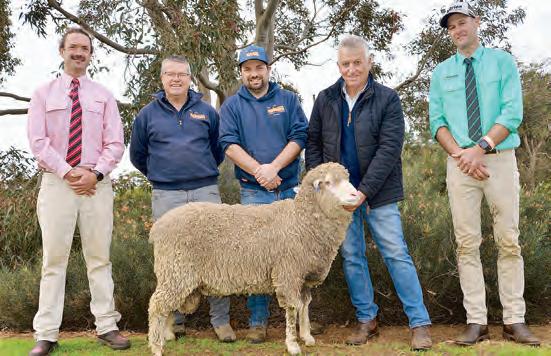

from $2000 to $2800, while Simon Kelly, Mine Creek, paid from $2200 to $3000 for 10 rams.
Local Spence Dix and Co agent, Greg Downing was active for several clients with SR & L Morgan being the most prominent, picking up 11 rams from $1600 to $2000.
John Bell, Spring Hills, Wisanger, was successful on 10 lots from $1800 to $2600, while Lloyd and Christine Berry, MacGillivray also purchased 10 from $1500 to $2500.
Tim Larcombe, Pintavale, Gosse, was also prominent, purchasing 12 rams from $1600 to $2800.
There were 44 commercial buyers of the 202 flock White Suffolk rams, averaging $2227, a price reflective of their quality.
Following the White Suffolks was the 81-strong Maternal Composite offering.
Two who appreciated the commercial qualities of the Maternal Composites were the Fogden family and Rick and Annie Morris, both paying to a top of $4200 in purchasing four and six rams respectively.
Another longer-term local supporter of these genetics was Steven Childs, picking up five from $2200 to $2800.
The first five lots went to online buyers before Daniel Pledge, buying through Kangaroo Island Land Ltd, broke that sequence with the first of 12 purchases in this catalogue at $2600.
His 12 averaged $1817 and included five from the Merino-infused line.
Lachie Bell, Bella Vista, Kingscote, was the only other buyer to hit double figures, purchasing 10 rams from $1200 to $2200.
Tim Buck, Buck Pastoral was another strong local buyer with six rams from $2200 to $3600.
The draft topper, EM240087 for $4400, was purchased by Tim Leeming, Coojar, Victoria while Matt and Tanya Tonissen, Chrome Sheep Stud P/L, Hamilton picked up EM240242 for $3400.
Libby Creek, operating for Hillcrest Pastoral Co, Avenue Range gave the strongest mainland support with the purchase of eight rams to $2800 and at a $2375 average.
Overall, 17 buyers were successful in purchasing in this draft with 74 of the 81 clearing at a $2324 average.
The Poll Merino offering of 54 impressive youngsters was good.
They displayed the free growing, long white stapled fine wools sought by the wool industry and included the overall sale’s top priced lot at $16,000.
Bill Walker, Classings Ltd, sees a lot of quality Merinos in his classing duties for many studs and commercial flocks across the country.
Mr Walker not only praised the offering, but was also the eyes for principals of five studs, ultimately purchasing five top rams.
These included lot 4, EM240393Tw, sired by Anderson 190590, which was sought after by the astute teaming of O’Brien Poll, Kyancutta, and Kiandra Poll, Keith.
Mr Walker had to go to the sale top of $16,000 before securing him for the O’Brien and Kluska families.
Mr Walker also purchased lot 1, EM240459 at $4250 for Hansi Graetz’s Pepper Well stud, Keyneton; lot 2, EM240060 for $6000 for the Keller family’s Ramsgate stud at Tintinara; and two rams, EM240410 and EM240414 at $4000 and a surprisingly cheap $2250 respec-
tively for the Woolford family’s Karawatha Park stud, Buckleboo.
The seven rams in the draft that went to stud or ram breeding flocks averaged $5500.
Leith Tilley, Booborowie, was also a prominent buyer, purchasing six rams at auction from $1000 to $2250.
Josh Graham, Glencorrie Props, was the strongest, purchasing 13 rams in the main auction, paying from $1000 to $4000 and averaging $2481.
He then added four more from the mini auction from $700 to $1000, taking his tally to 17 rams.
Tim Buck, Buck Pastoral, was a determined bidder, purchasing 10 at auction from $1500 to $4000 and averaging $2625.
He added three from the mini auction at $1000 to $1400, on top of six Maternal Composites he purchased earlier.
Simon Kelly, Mine Creek, purchased 7 Poll Merinos at an average of $1679, adding to his 10 White Suffolk purchases.
The 42 Poll Merinos that sold to commercial producers averaged $2199; while with the seven stud purchases included, 49 sold at a $2670 average in a 91pc clearance.
A further eight cleared from the 22 available in the mini auction that followed.
In summarising the sale, Mr Wetherall said the Heinrich family had a renowned ability to breed and present for sale some of the best sheep industry genetics in the country.
“In reflection, this sale was arguably, and not surprisingly, the sheep sale of the year, which was endorsed by the number of stud breeders who purchased in all three drafts, plus the huge online activity,” he said.
























AUSTRALIA’S sheep industry is entering a recalibration phase after two years of challenging conditions, with the national flock contracting by 6.2 per cent to 74.2 million head as of June 2025, according to Meat & Livestock Australia’s (MLA) Australian Sheep Industry Projections –September Update.
The decline follows back-to-back seasons of below-average rainfall across key producing regions in South Australia, Victoria and southern New South Wales, prompting elevated lamb slaughter and mutton turn-off as producers responded to tightening feed availability.
Despite the pressures, production has held its ground.
Lamb output for 2025 is forecast at 610,000 tonnes, supported by heavier carcase weights as producers increasingly rely on grain feeding to finish stock.
While lamb slaughter is expected to reach 24.9 million head - a 5.8 per cent fall from last year’s record - mutton slaughter is projected to decline more sharply, down 15.4 per cent to 9.97 million head, as producers begin retaining breeding ewes to rebuild flocks.
MLA market information manager Erin Lukey said the sector’s adaptability has helped buffer the impact of dry conditions on supply.
“We are seeing producers respond to seasonal volatility by adopting supplementary feeding practices for heavier carcase weights and more strategic turn-off decisions,” Ms Lukey said.
“This approach helps offset the impact
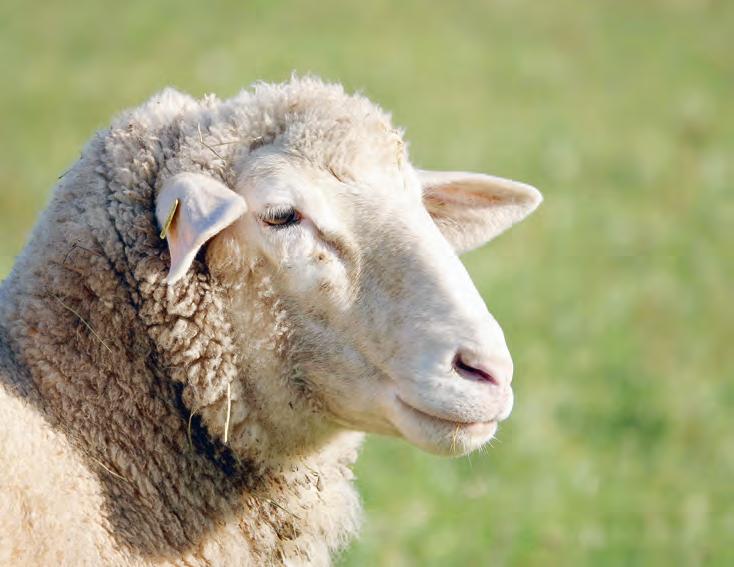
of reduced lamb supply and inconsistent pasture availability typically seen in areas experiencing below-average seasonal conditions.”
Internationally, Australia continues to dominate global sheepmeat exports, accounting for 54 per cent of total global trade in FY25.
With New Zealand’s exports expected to fall due to long-term changes in land use


and a smaller flock, Australia is positioned to maintain strong export volumes even as domestic production softens.
“Global supply is tightening, and Australia is in a strong position to meet demand,” Ms Lukey said.
“Our reputation for quality and consistency continues to underpin export growth, particularly in premium markets.”
In the live export sector, early 2025
brought temporary slowdowns linked to vessel availability, but demand from the Middle East remained firm. Between January and August, live exports tracked 3 per cent below the same period last year, with solid processor and restocker competition supporting prices.
Ongoing regulatory shifts have encouraged some producers to diversify their marketing strategies, yet underlying demand continues to sustain trade. Looking further ahead, however, the sector faces a forecast 30 per cent decline in live export volumes by 2027, potentially tightening supply for the price-sensitive market, particularly in Western Australia, where live export remains a cornerstone of production systems.
Assuming average seasonal conditions return, the industry is expected to gradually rebuild, with flock numbers forecast to rise by 2.1 per cent in 2026 and a further 4.3 per cent in 2027, reaching 78.9 million head.
This recovery will be driven by natural increase and a focus on ewe retention following two years of drought-induced destocking.
By 2027, lamb production is projected to reach a record 651,000 tonnes, supported by increased slaughter and ongoing gains in carcase weights.
With steady global demand and constrained supply from key competitors, Australia’s reputation as a reliable, high-quality sheepmeat supplier appears set to strengthen, even as domestic markets adjust to a leaner, more efficiency-driven production landscape.











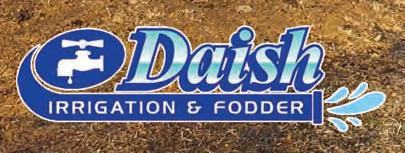





























REGIONAL


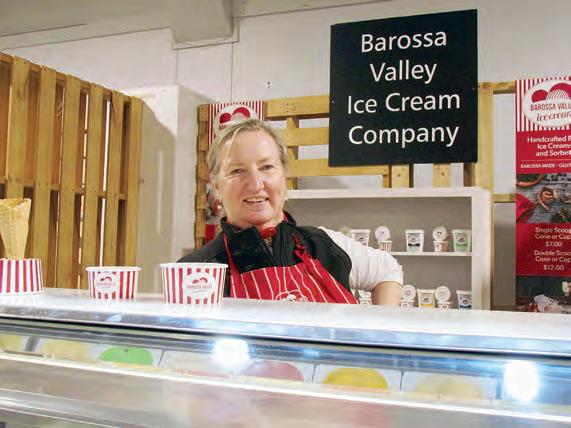
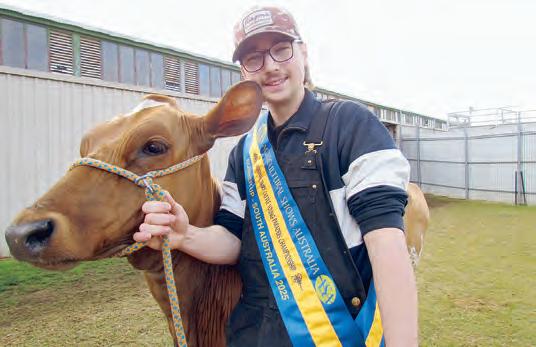

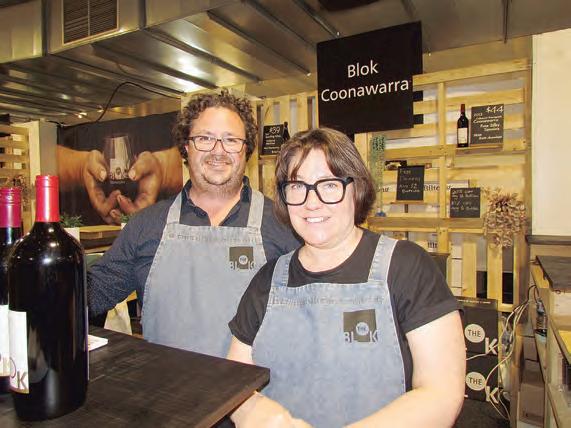













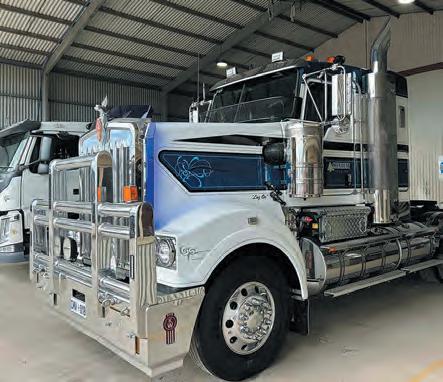















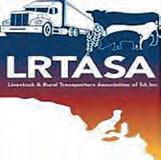
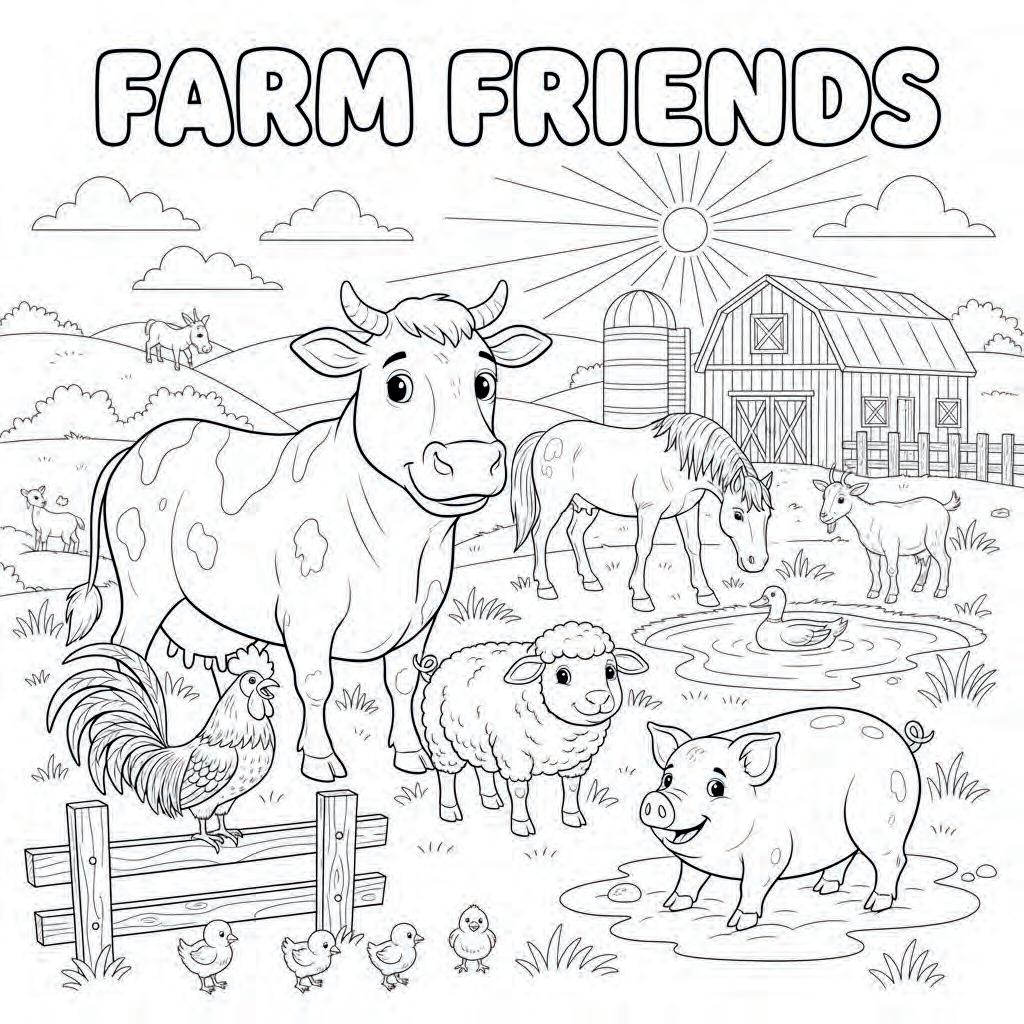

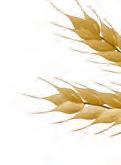





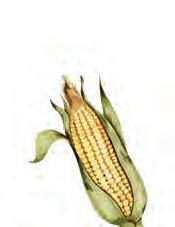





Q: Why did the scarecrow win an award?
A: Because he was outstanding in his field
Q: What do you call a sleeping bull?
A: A Bulldozer
Q: Why did the cow cross the road?
A: To get to the udder side
Q: What do you call a pig that does karate?
A: A pork chop
Q: What do you call a sad strawberry?
A: A blueberry
How many words can you make? It’s not as easy as you think! Score 1-10...Not bad, 11-20...Good, 20-30...Excellent!






























Australian Pork can be used in so many wonderful ways, as an easy family meal to a delicious dinner party you can’t go wrong. For more great recipes visit pork.com.au.
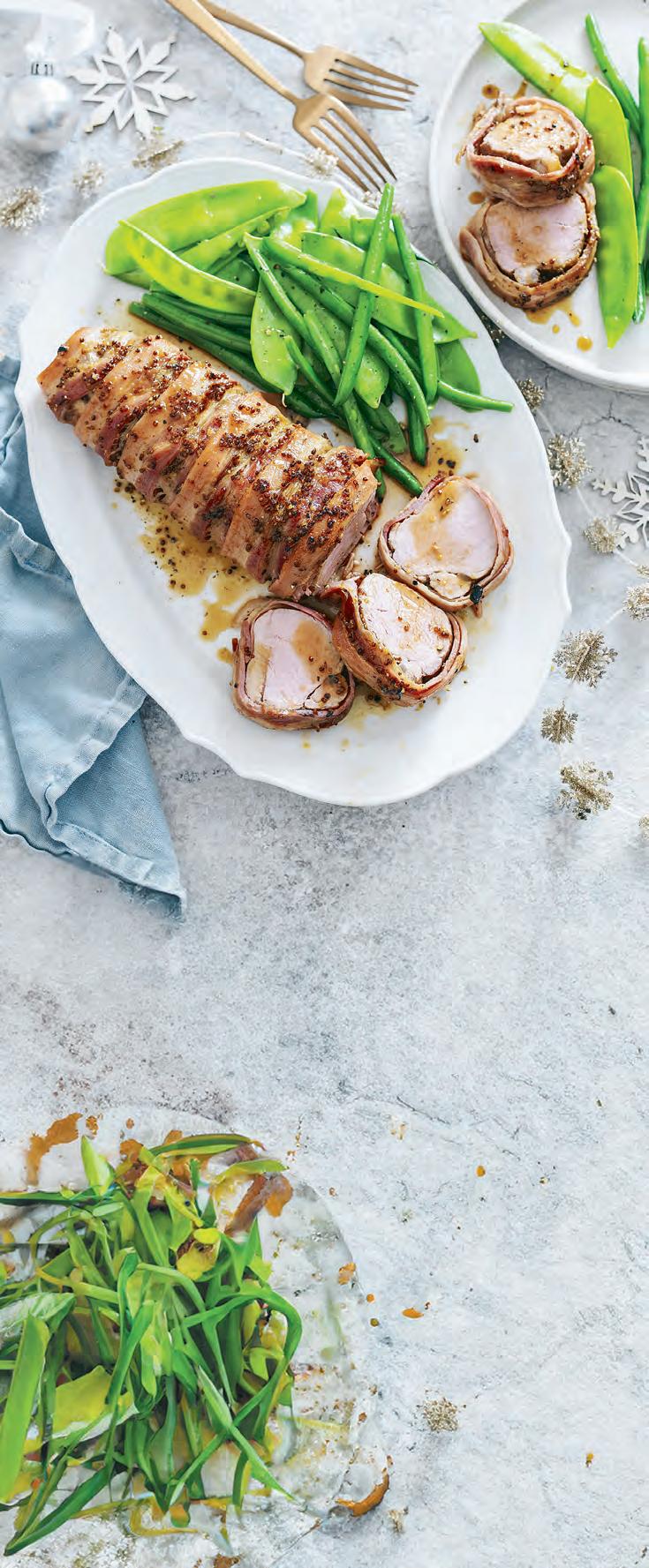

Prep time: 20 mins
Cook time: 20 mins
Serves 4
INGREDIENTS:
• 500g Australian Italian-style pork sausages
350g dried penne pasta
1 tablespoon extra virgin olive oil
1 medium brown onion, finely chopped
2 garlic cloves, crushed
2 tablespoon tomato paste
1 cup chicken stock
100g baby spinach leaves
1 cup thickened cream
• 1/3 cup finely grated parmesan, plus extra to serve
Salt and freshly ground black pepper, to season
METHOD:
1. Bring a large saucepan of salted water to the boil and cook pasta following packet directions.
2. Drain and return to the pan to keep warm
3. Meanwhile, cut the sausage casings length ways.
4. Using about 1 tablespoon sausage meat per ball, roll into small meatballs.
5. Heat oil in a large non-stick frying pan over medium-high heat. Add pork meatballs.
Prep time: 20 mins
Cook time: 30 mins
Serves 4
INGREDIENTS:
• 1 x 500g pork fillet, trimmed
1 tablespoon olive oil
8-10 slices streaky bacon (see tip)
2 tablespoons maple syrup
• 2 teaspoons seeded mustard
• Steamed green beans and snow peas, to serve
METHOD:
1. Preheat oven to 200°C/180°C fanforced.
2. Pat pork dry with paper towel. Season with salt and pepper.
3. If not trimmed, tuck the pointy end of the fillet under to form a neat piece.
4. Heat oil in a large frying pan over medium-high heat.
5. Add pork and brown, turning occasionally, until evenly golden brown.
6. Remove from heat and set aside to cool slightly.
7. Lay bacon vertically on a clean work surface, slightly overlapping each slice.
8. Place pork onto the bacon at one end. Wrap bacon over the pork to enclose it and form a neat roll.
9. Gently squeeze to secure the bacon and secure with toothpicks along the base.
10. Place pork onto a baking tray lined with baking paper.
11. Combine maple syrup and mustard in a small bowl.
12. Season with salt and pepper.
13. Brush bacon with mixture.
14. Roast, brushing with the pan juices once or twice, for 20-25 minutes for just pink pork (tested with a meat thermometer at 65°C).
15. Slice pork. Drizzle with the pan juices.
16. Serve with beans and snow peas.

7. Add onion to pan and cook, stirring often, over medium heat for 3-4 minutes until onion is tender.
8. Stir in garlic and tomato paste. Cook, stirring often, for 1 minute
9. Stir in stock. Add pork meatballs. Bring to the boil.
10. Reduce heat and simmer, covered and stirring occasionally, for 5 minutes until slightly reduced.
11. Toss through spinach. Cover and cook for 2 minutes or until just wilted.
12. Stir in cream and parmesan. Season to taste.
13. Add pasta to pork mixture. Toss over low heat until hot.
6. Cook, turning occasionally, for 5 minutes until golden. Transfer pork to a bowl
Spoon into serving bowls. Serve with extra parmesan.
Prep time: 15 mins
Cook time: 25 mins
Serves 4
INGREDIENTS:
• 500g pork mince
• 2 x 74g packets Oriental flavour 2-minute noodles
• 2 eggs
• 1 tablespoon salt-reduced soy sauce
• 2 teaspoons sesame oil
• 4 green onions (shallots), trimmed and thinly sliced
• 1 small carrot, peeled and grated
• ¼ cup vegetable oil
• Kewpie mayonnaise
• kecap manis (sweet soy sauce)
• thinly sliced green onions (shallots), to serve
METHOD:
1. Preheat oven to 180°C/160°C fan-forced.
2. Bring 3 cups of water to the boil in a medium saucepan.
3. Break noodle blocks into quarters and add to boiling water. Cook for 2 minutes.
4. Stir through seasoning. Drain. Set noodles aside to cool.
5. Whisk eggs, soy sauce and sesame oil together in a large bowl.
6. Add cooled noodles, pork mince, green

onions and carrot.
7. Season with salt and pepper. Mix until well combined.
8. Heat vegetable oil in a large non-stick frying pan over medium heat.
9. Using a 1/3 cup pork mixture per fritter, cook fritters, in batches, for 3-4 minutes on each side or until golden.
10. Place fritter onto a large baking tray lined with baking paper.
11. Bake for 10 minutes or until cooked through.
12. Arrange fritters on a serving platter or plates.
13. Drizzle with mayonnaise and sweet soy sauce.
14. Top fritters with thinly sliced green onions and serve






